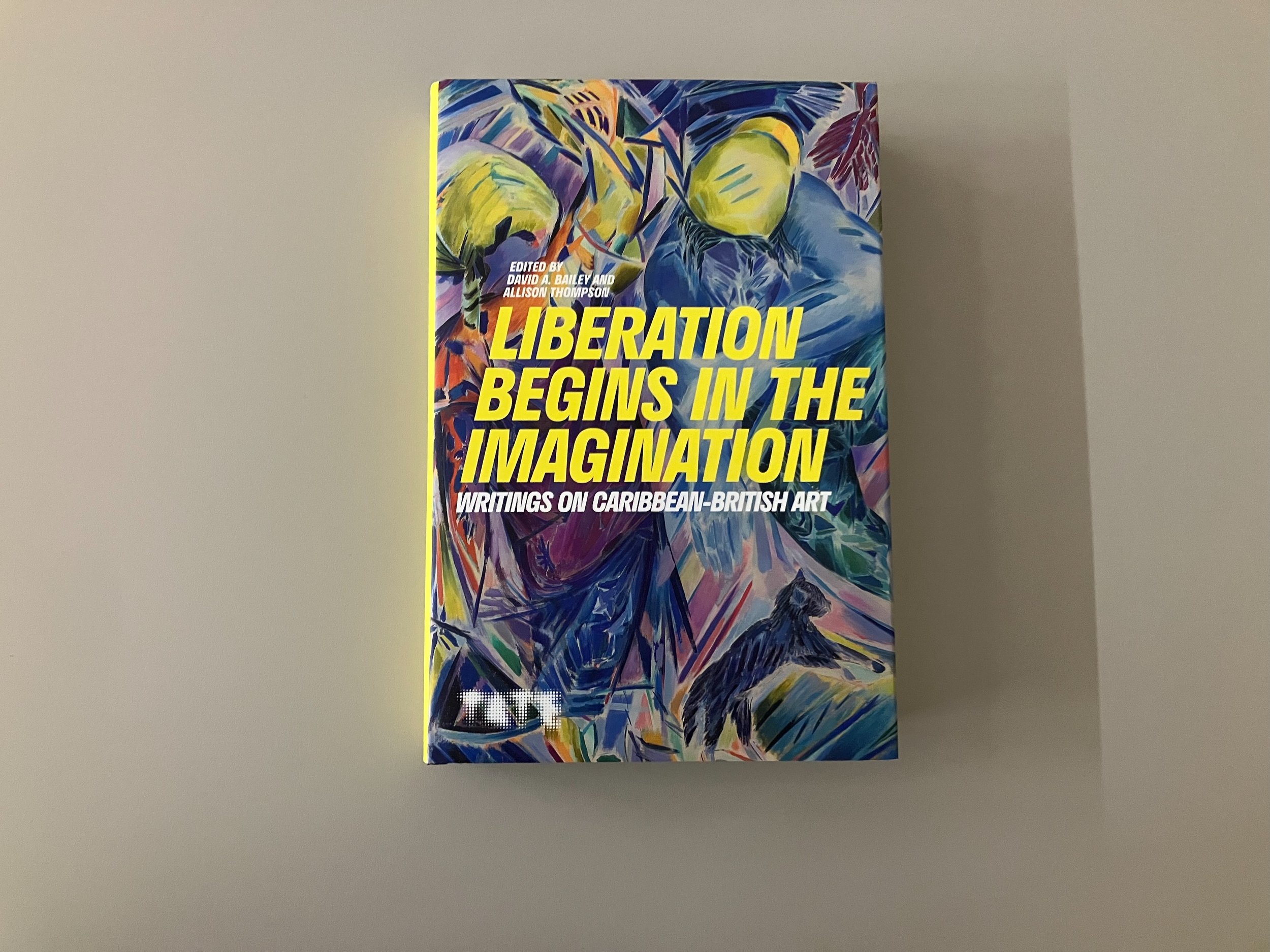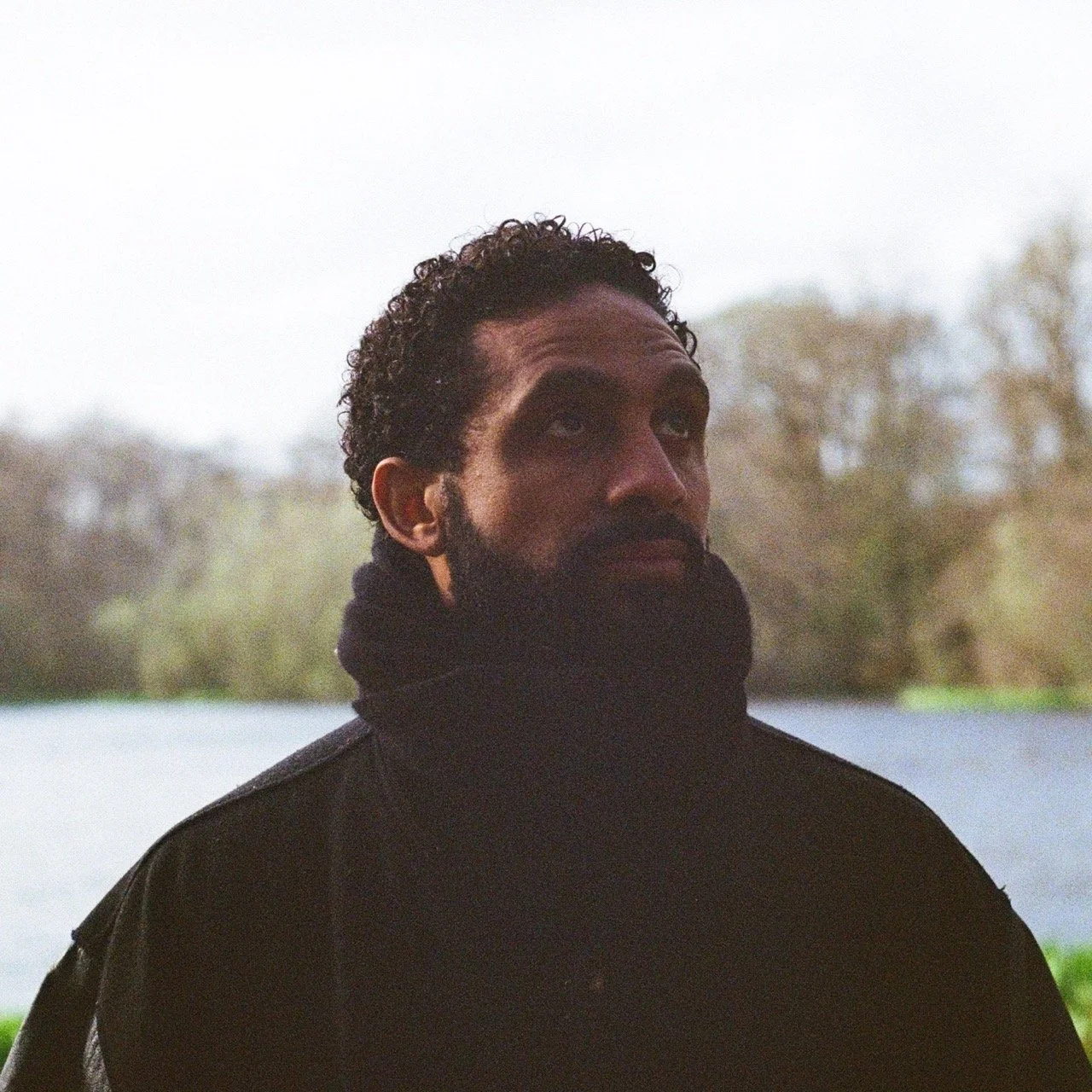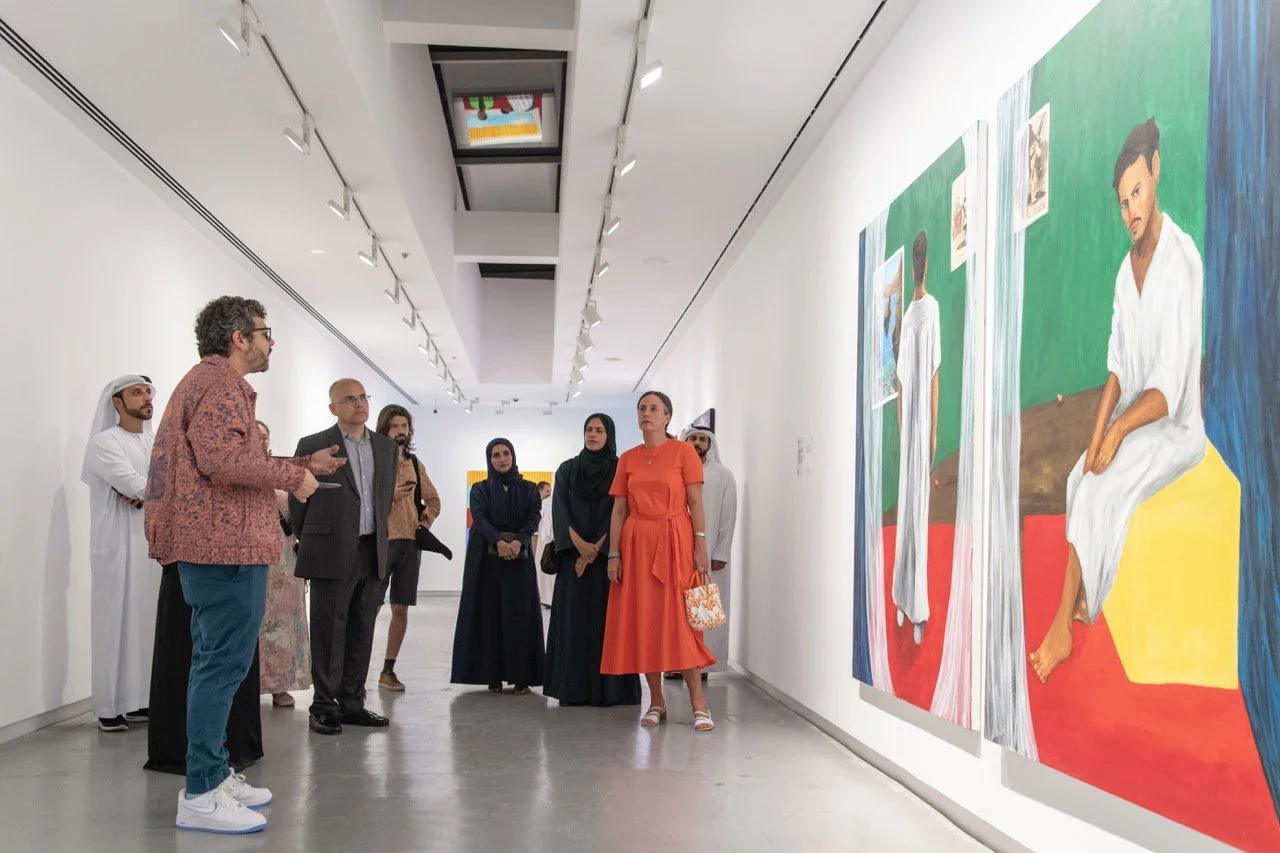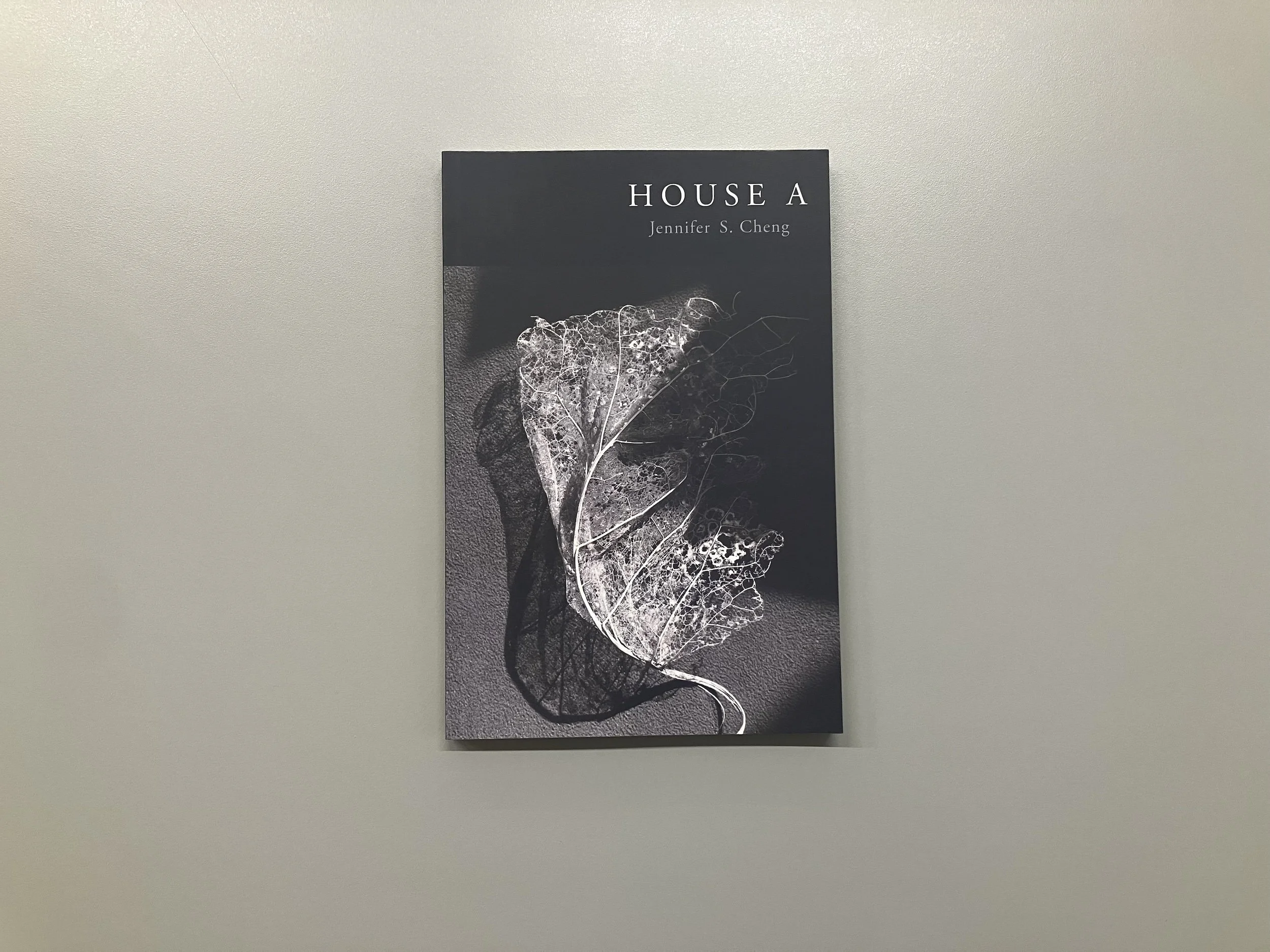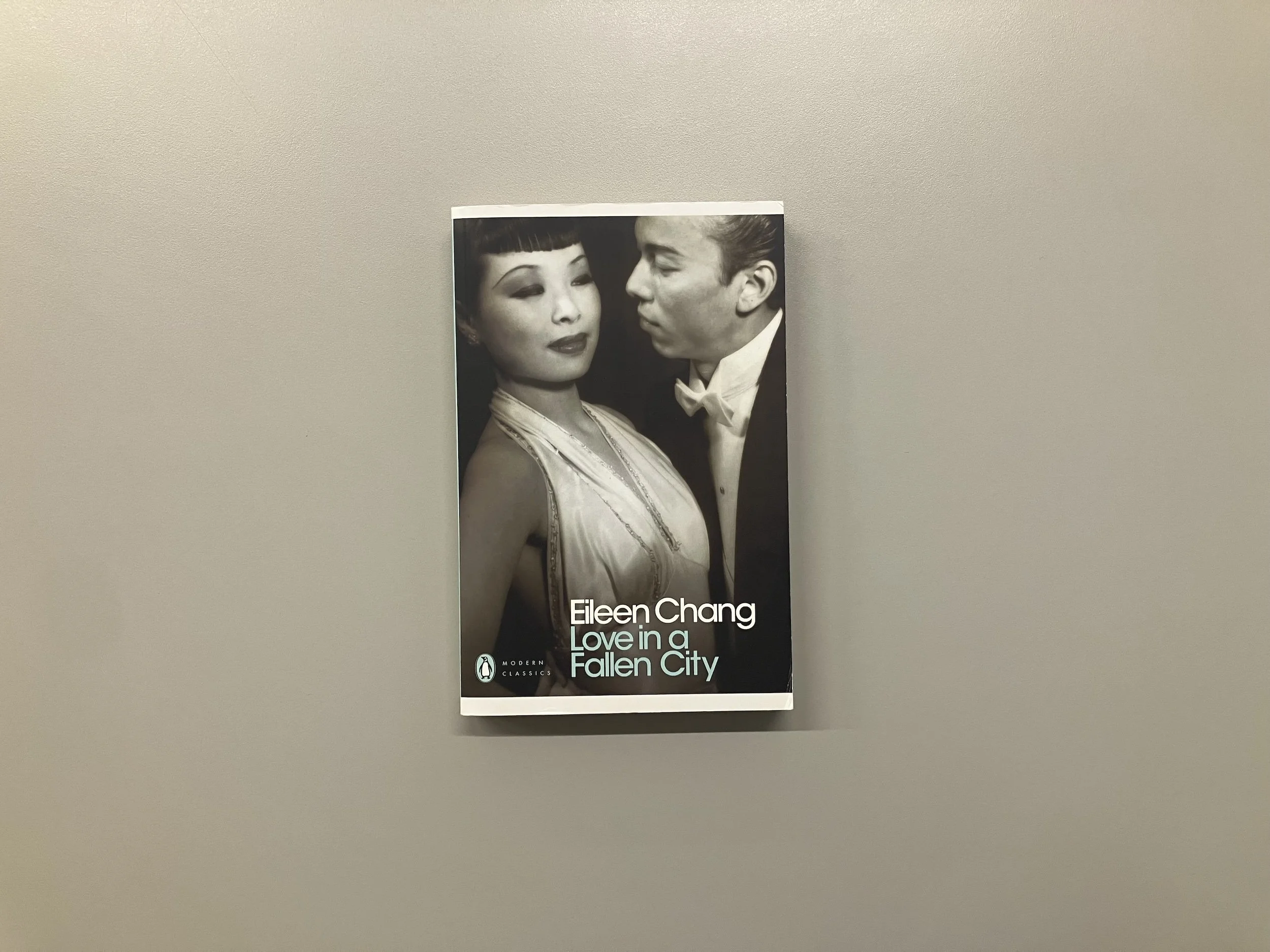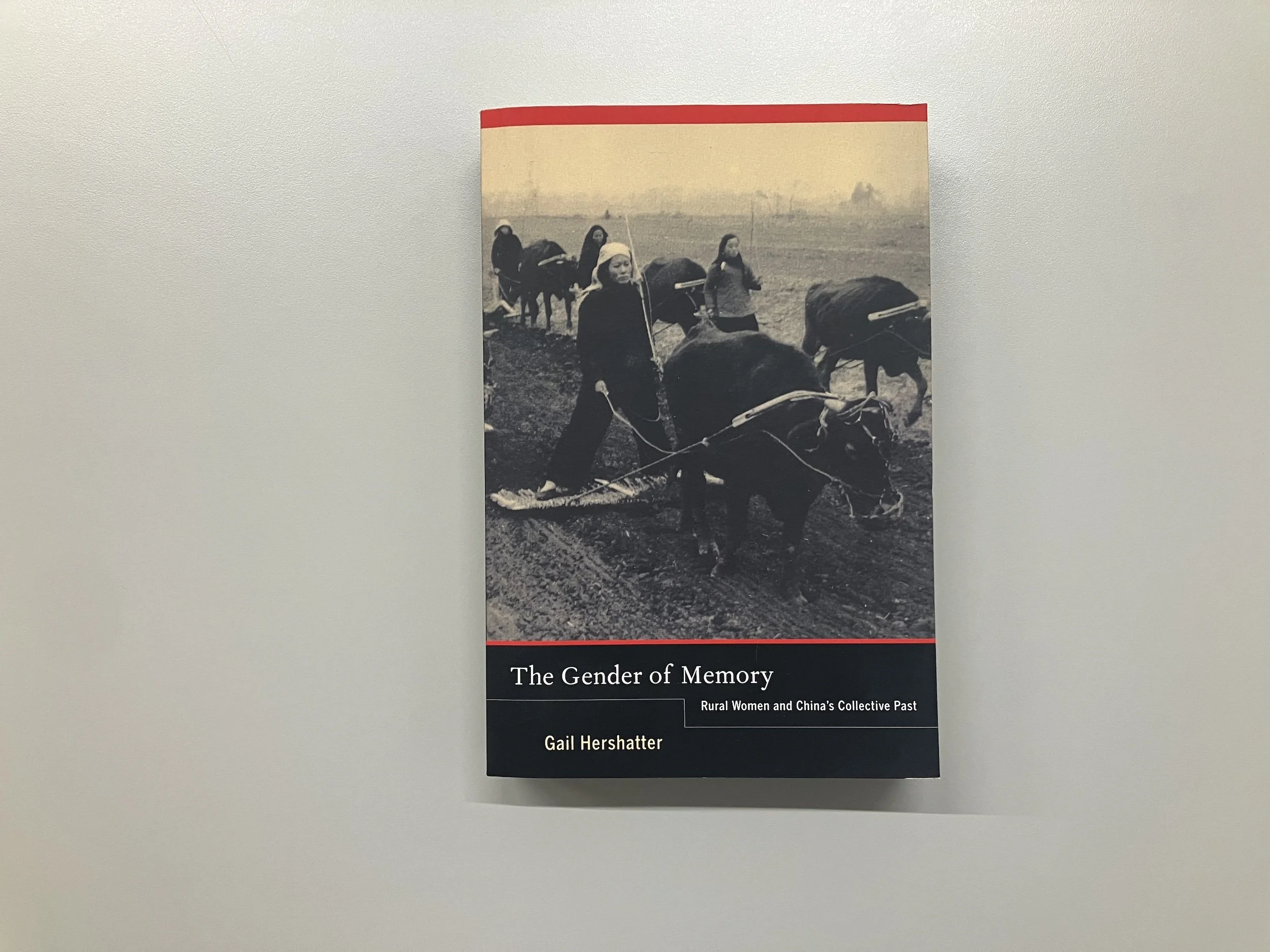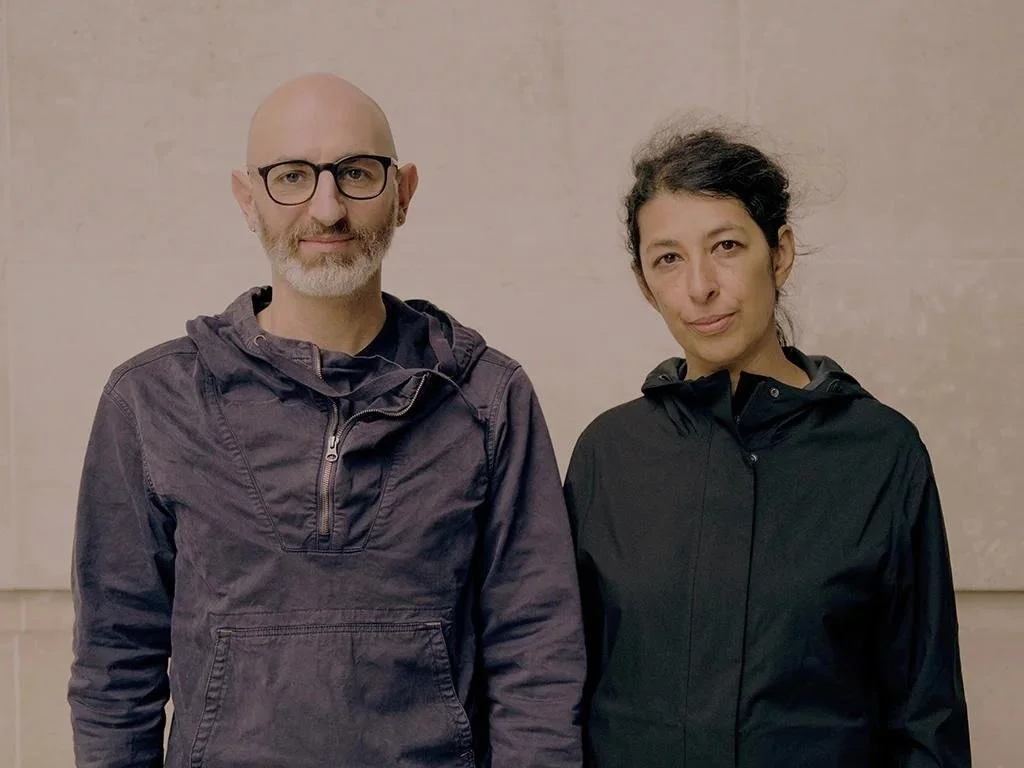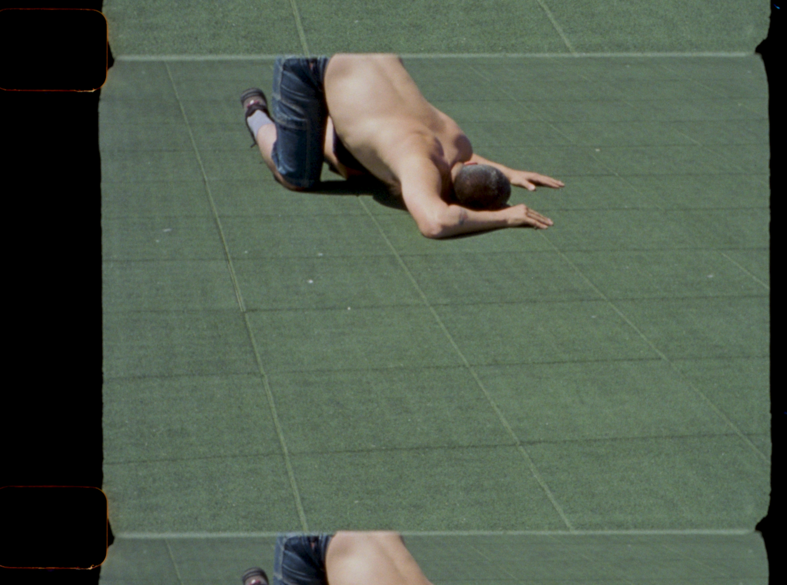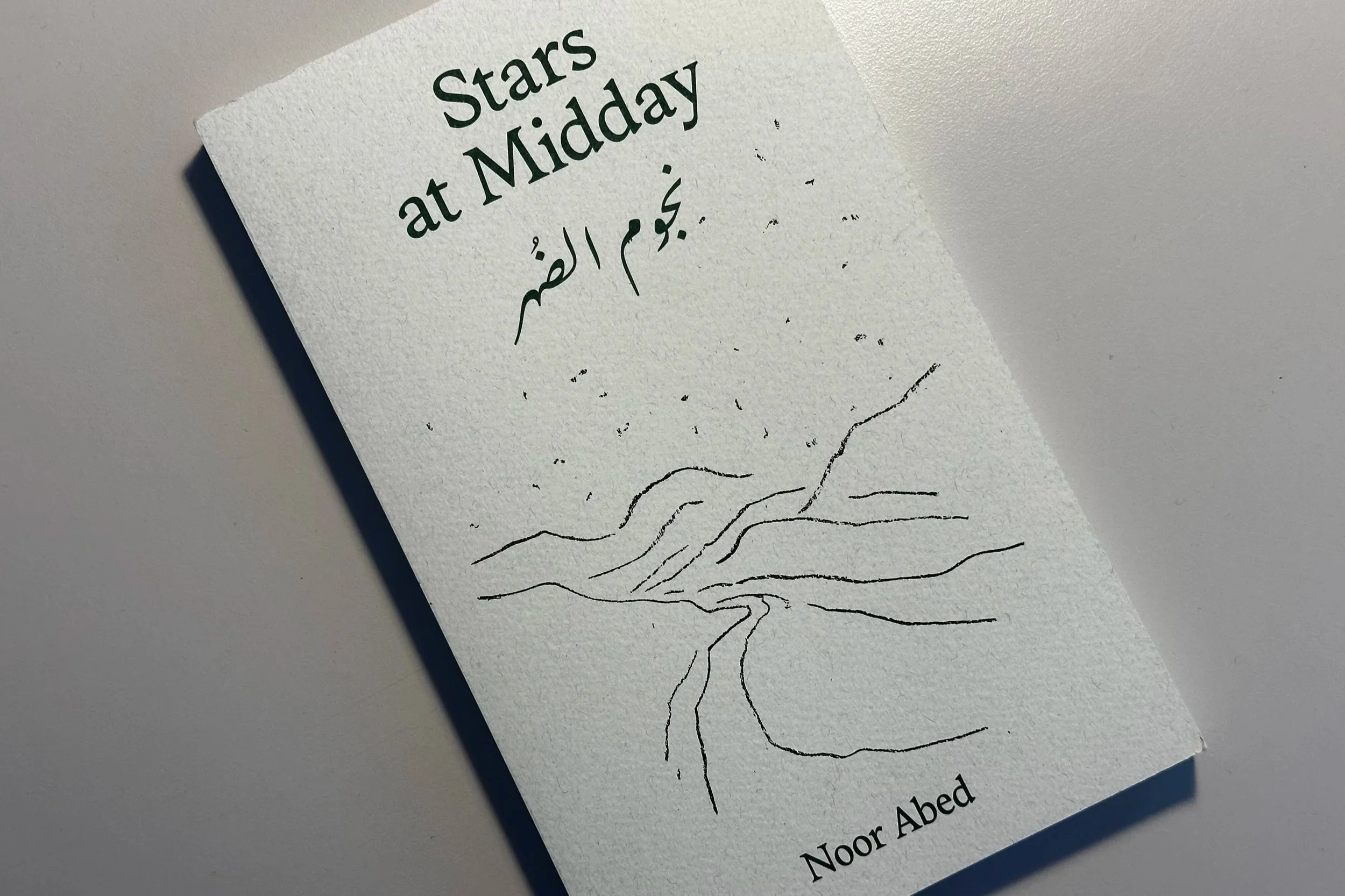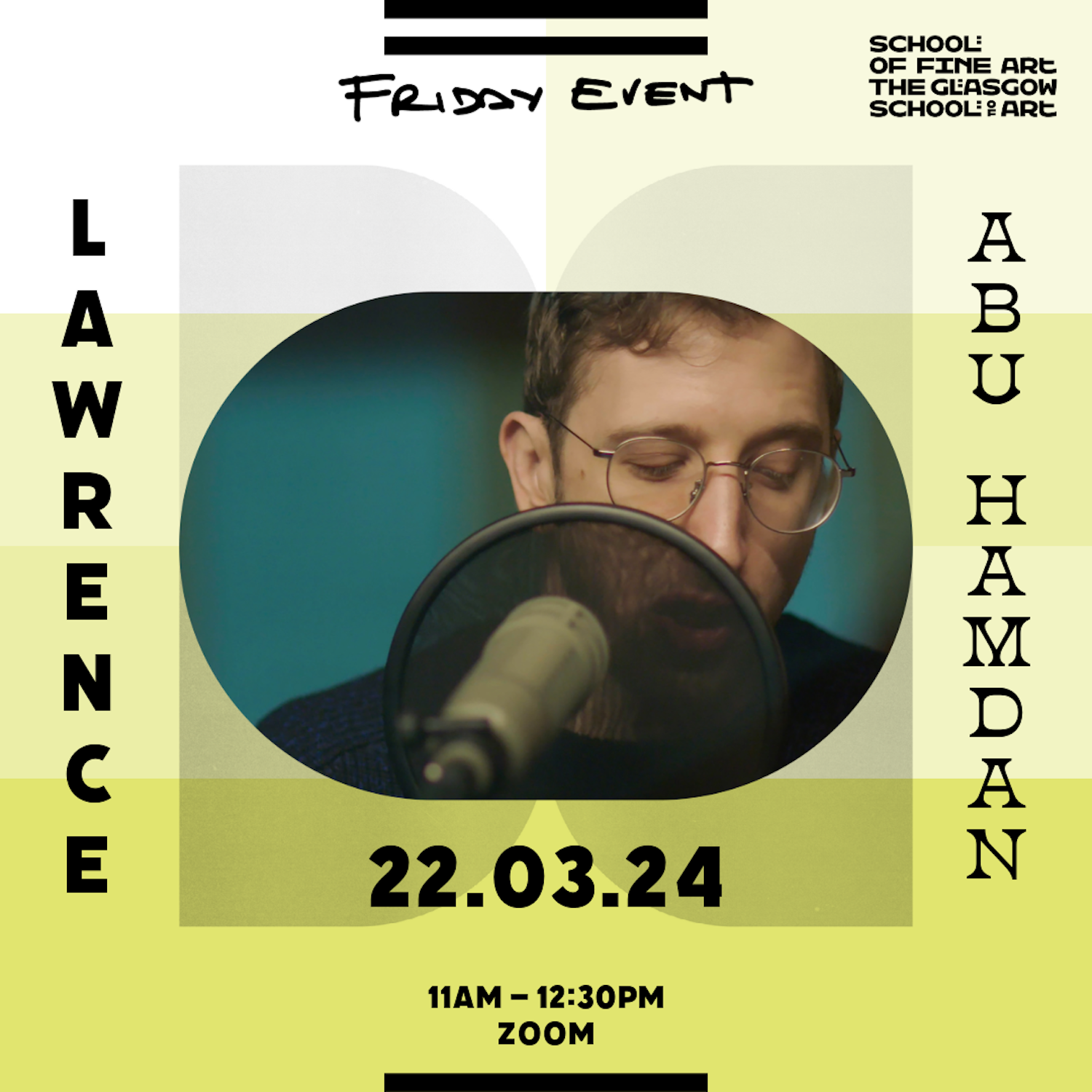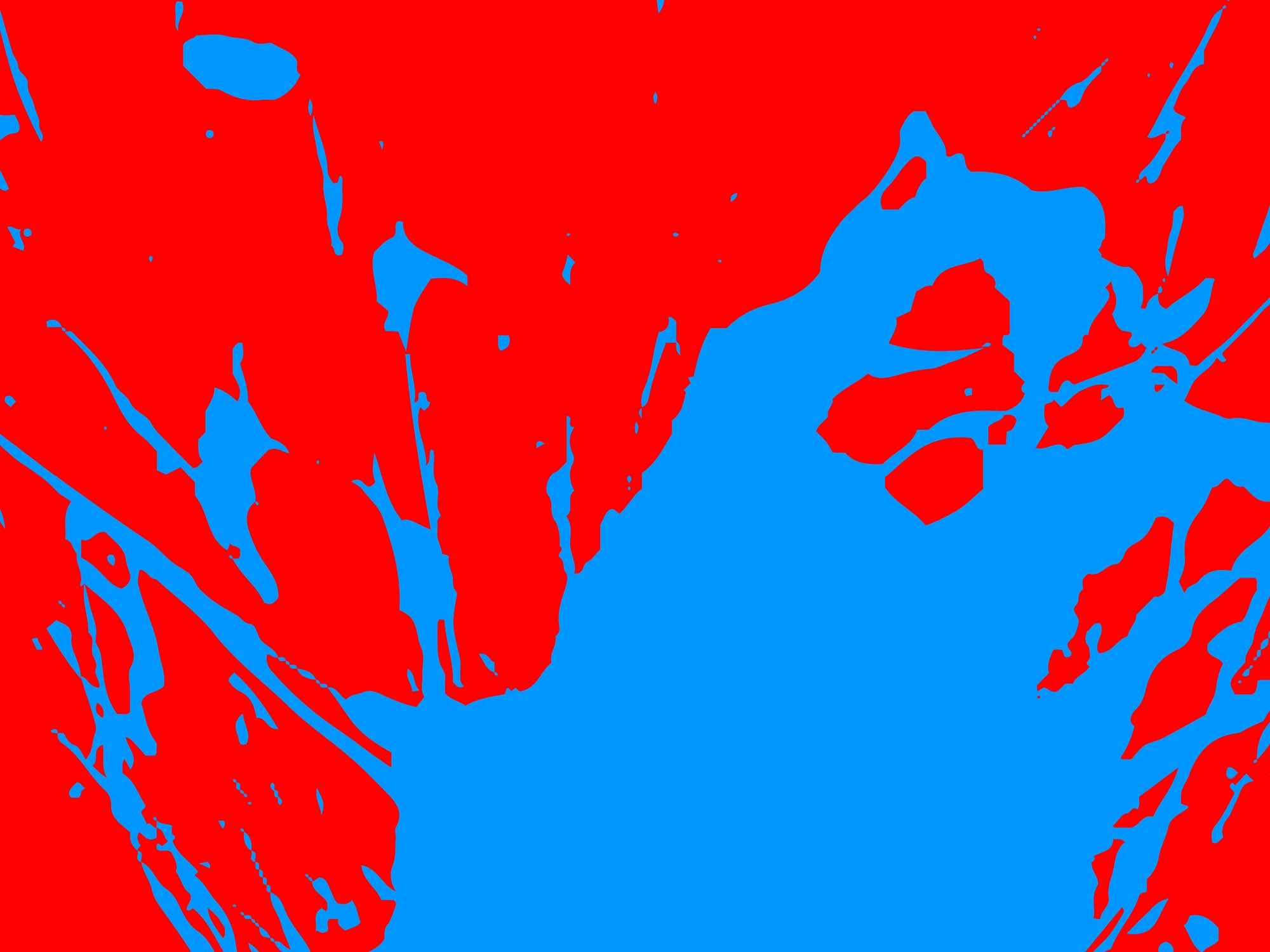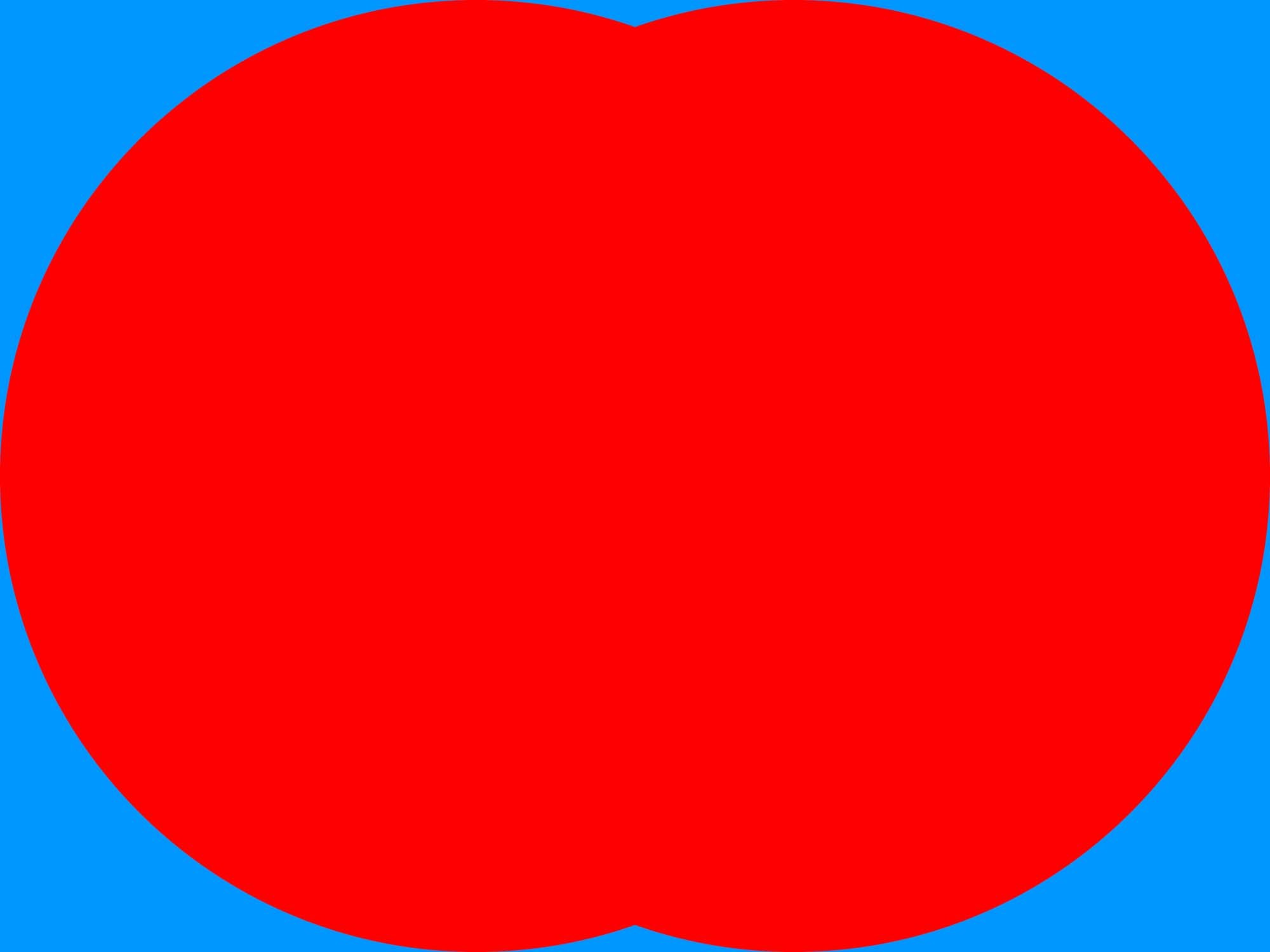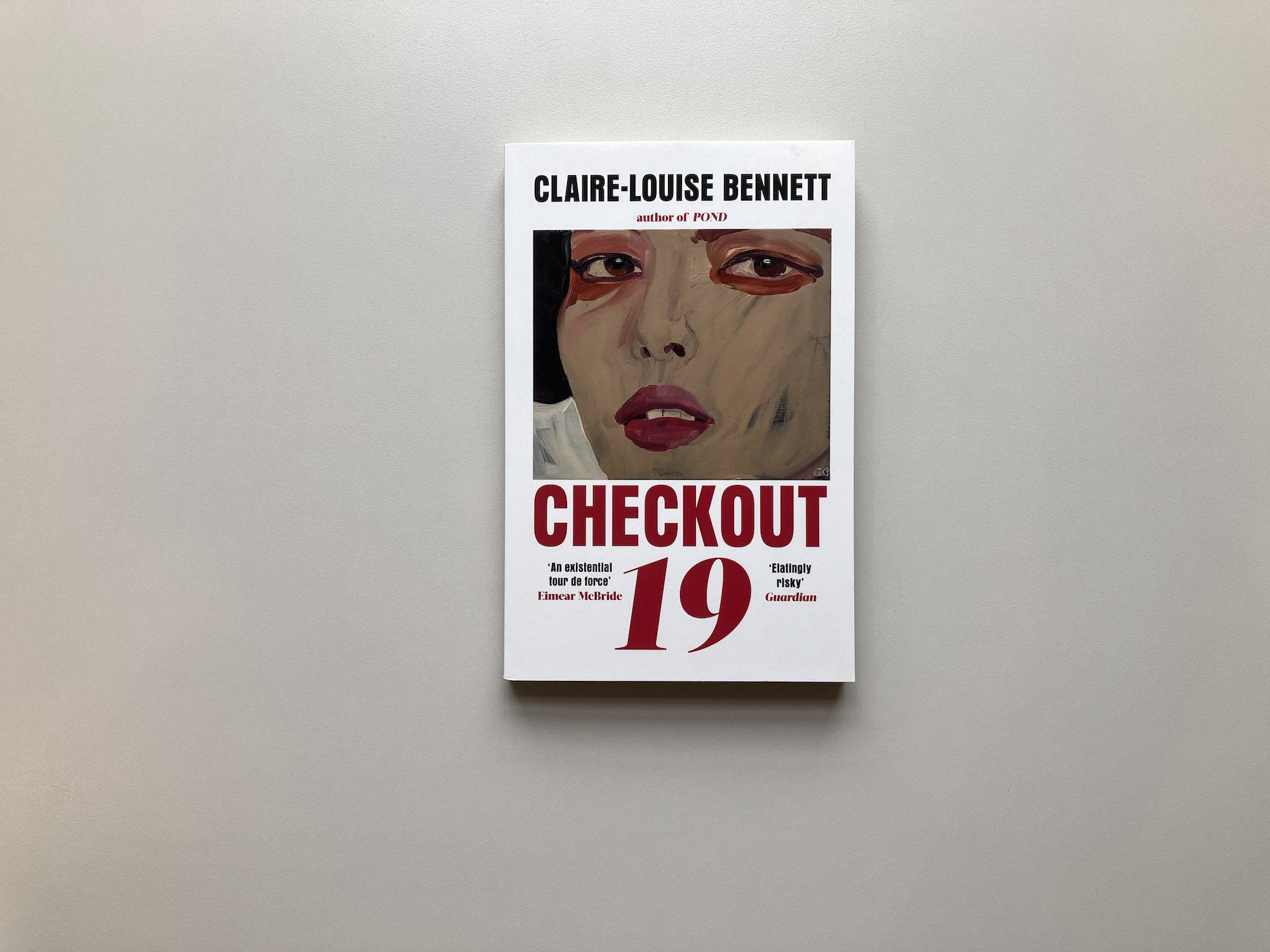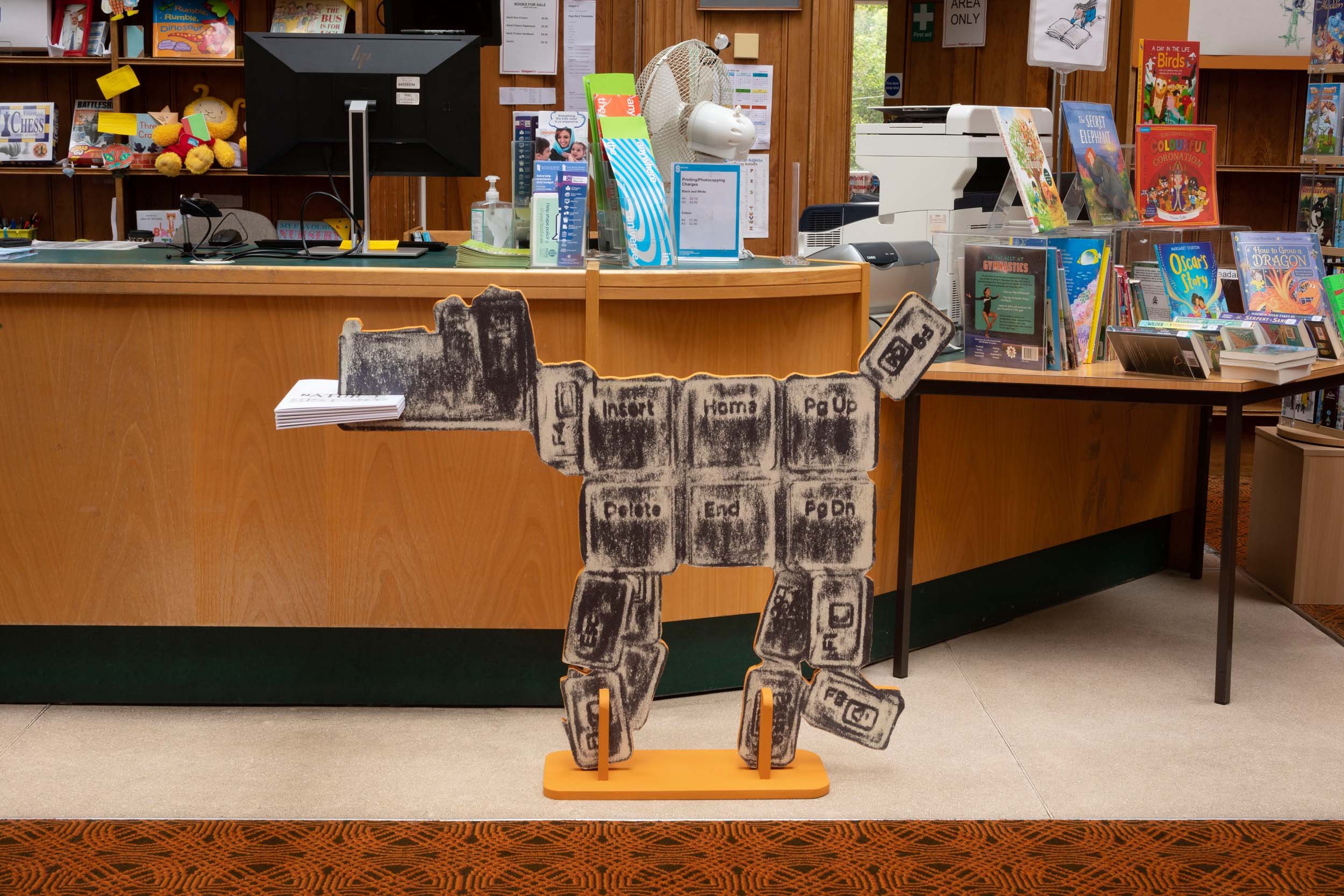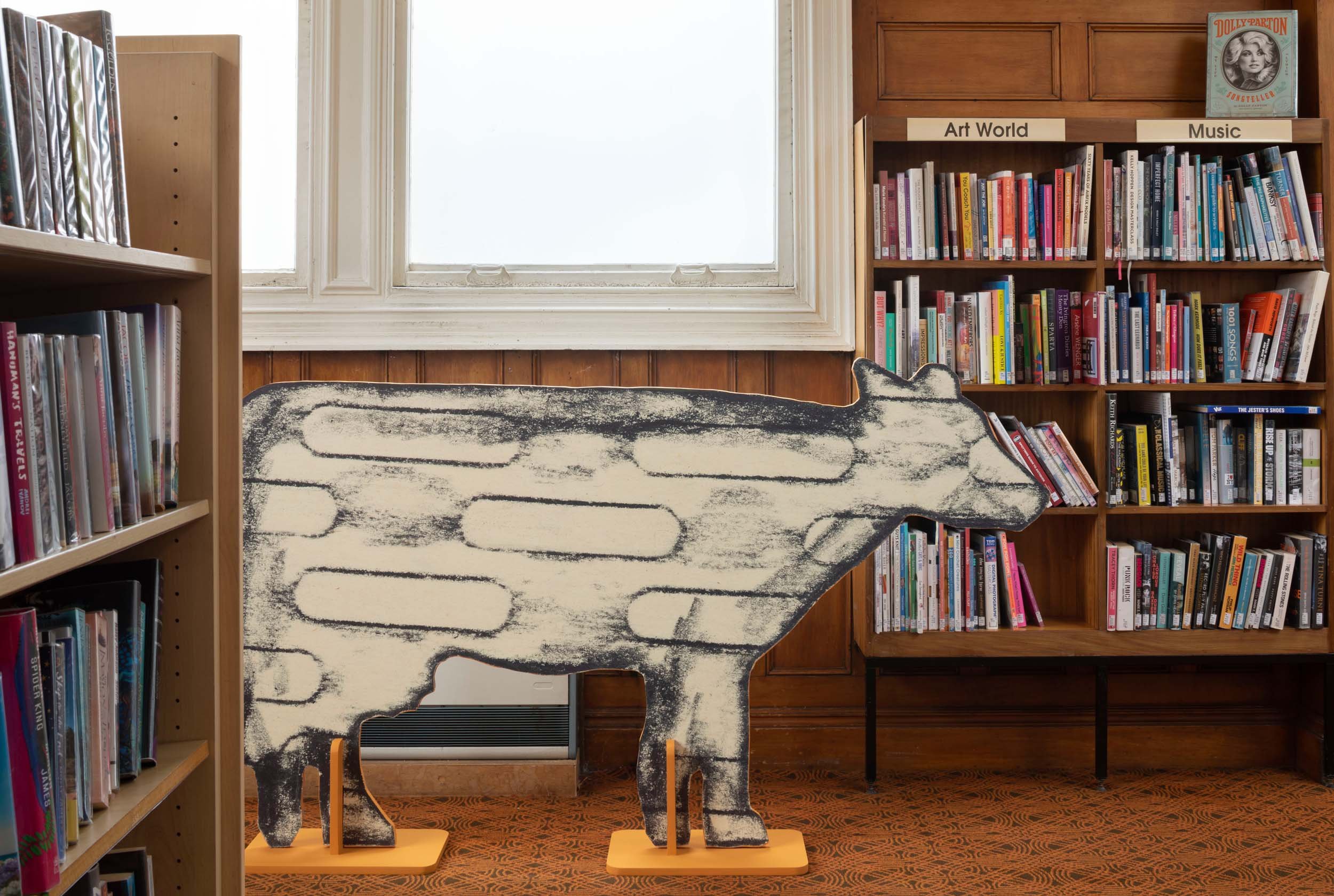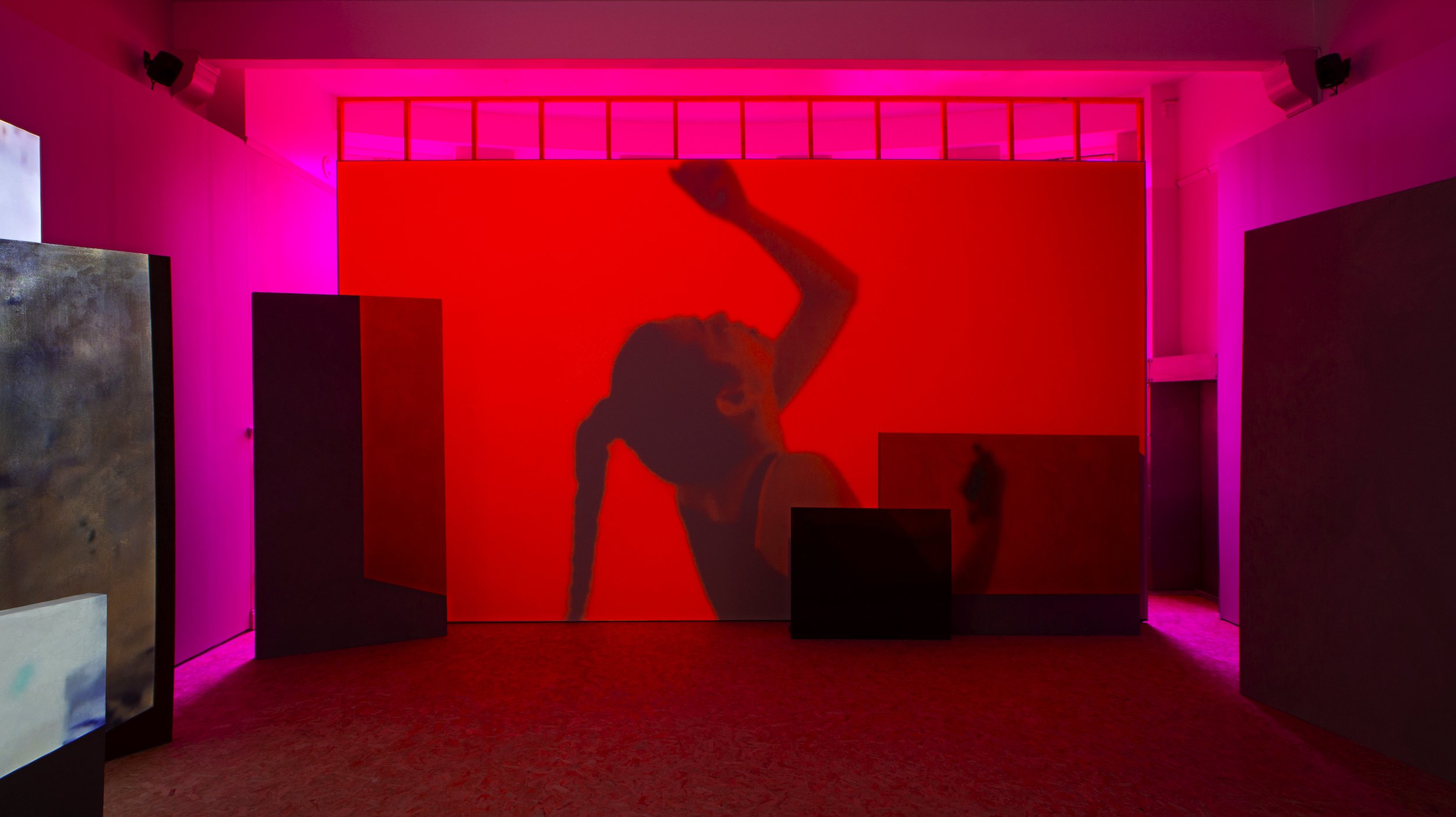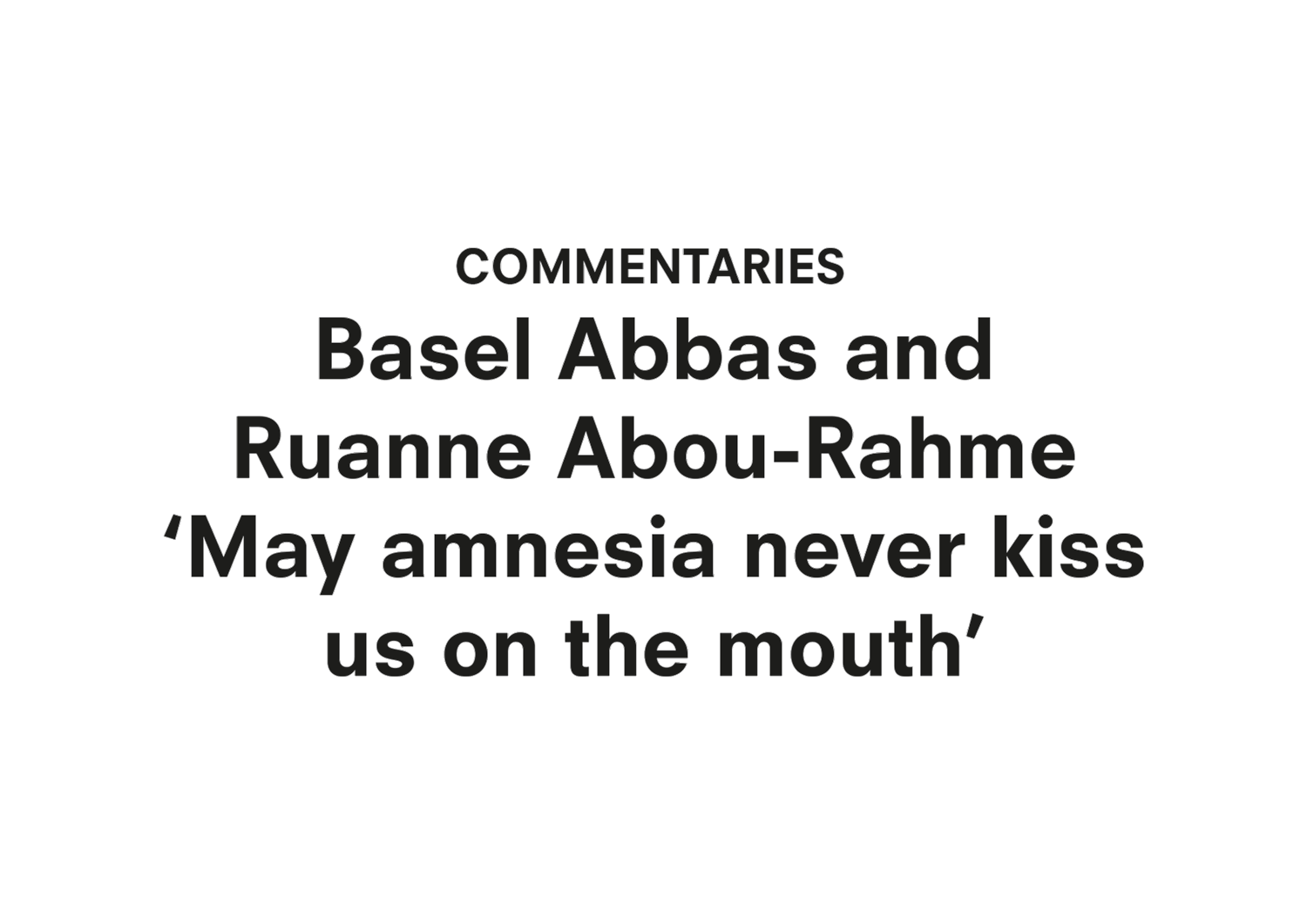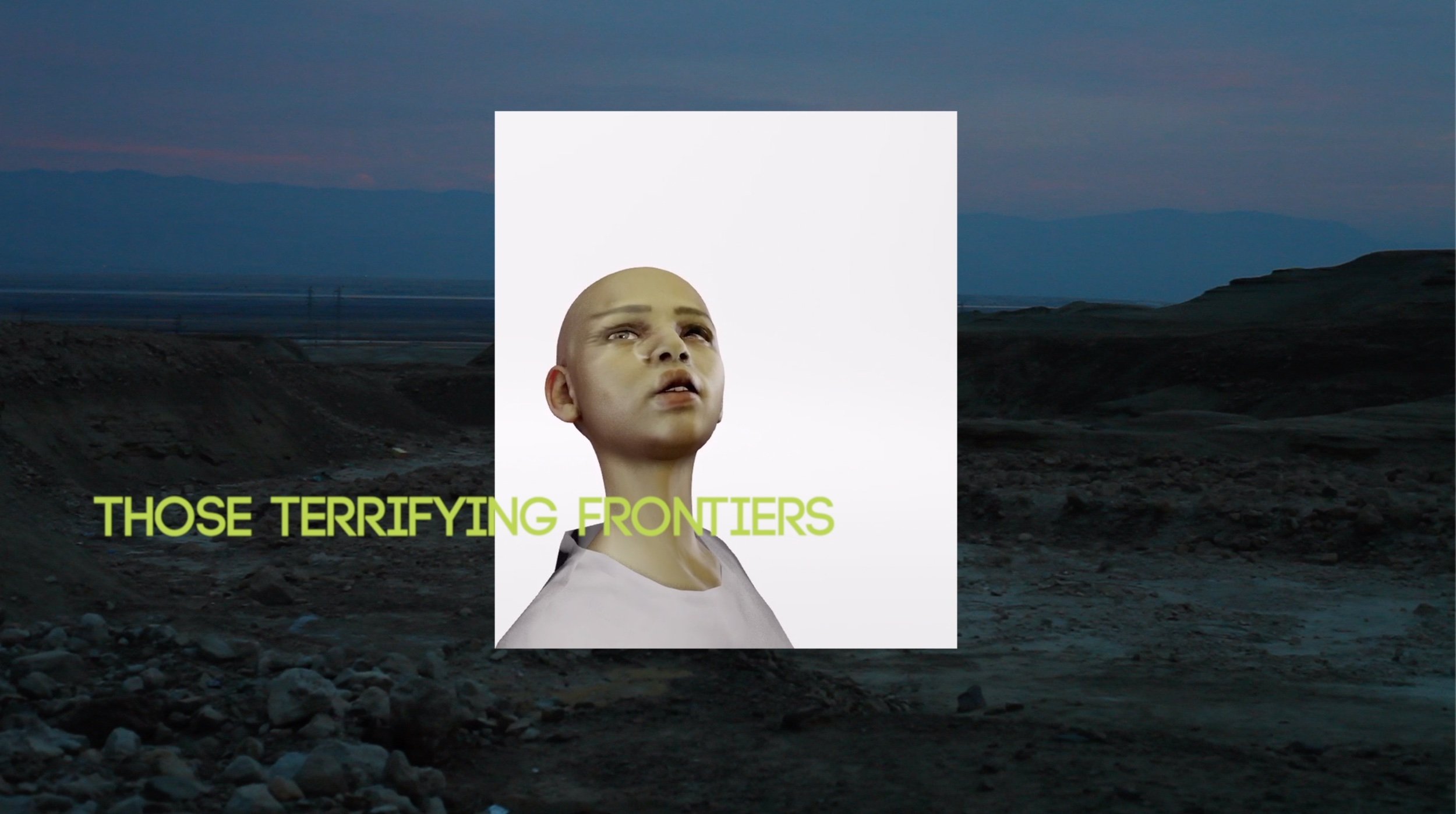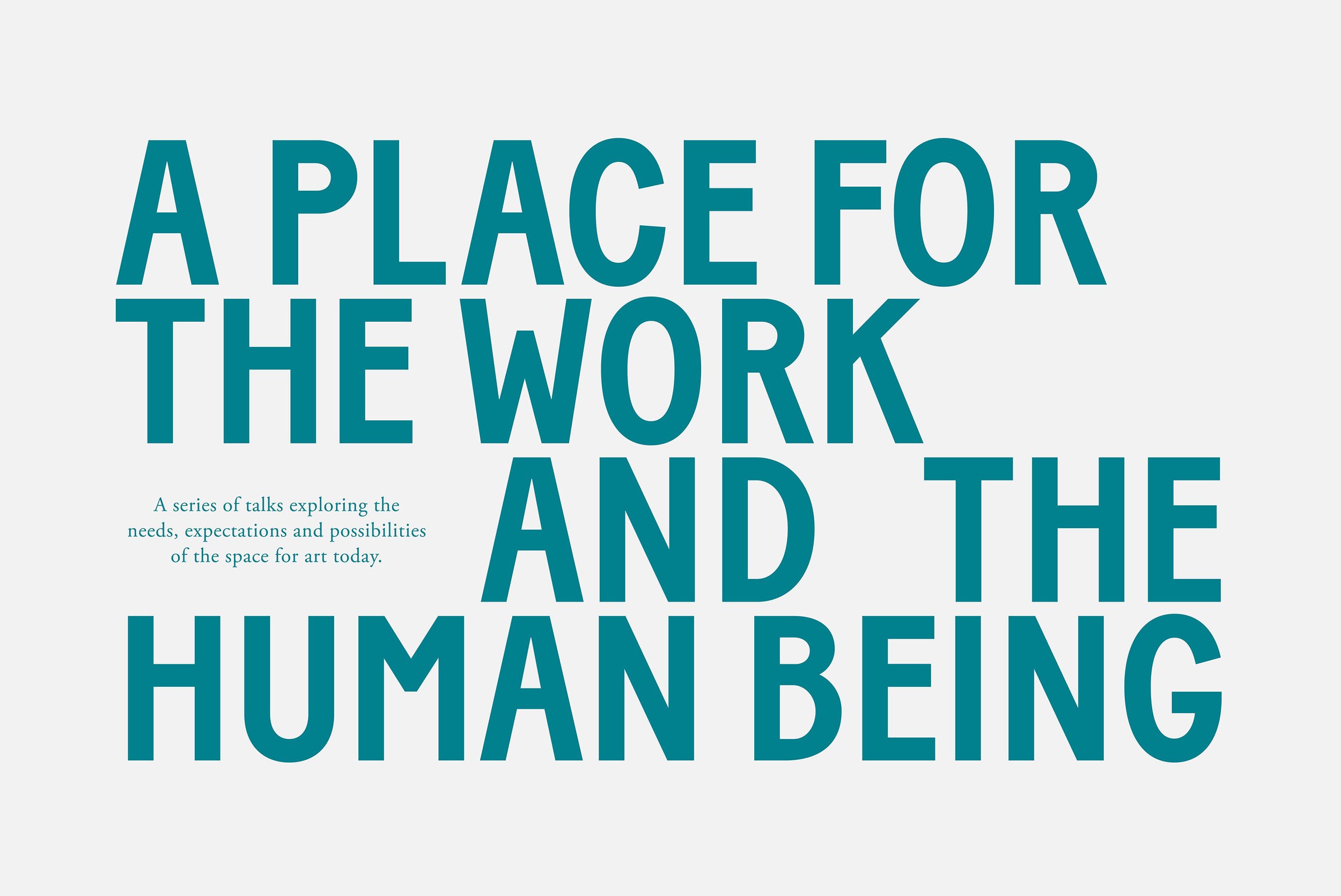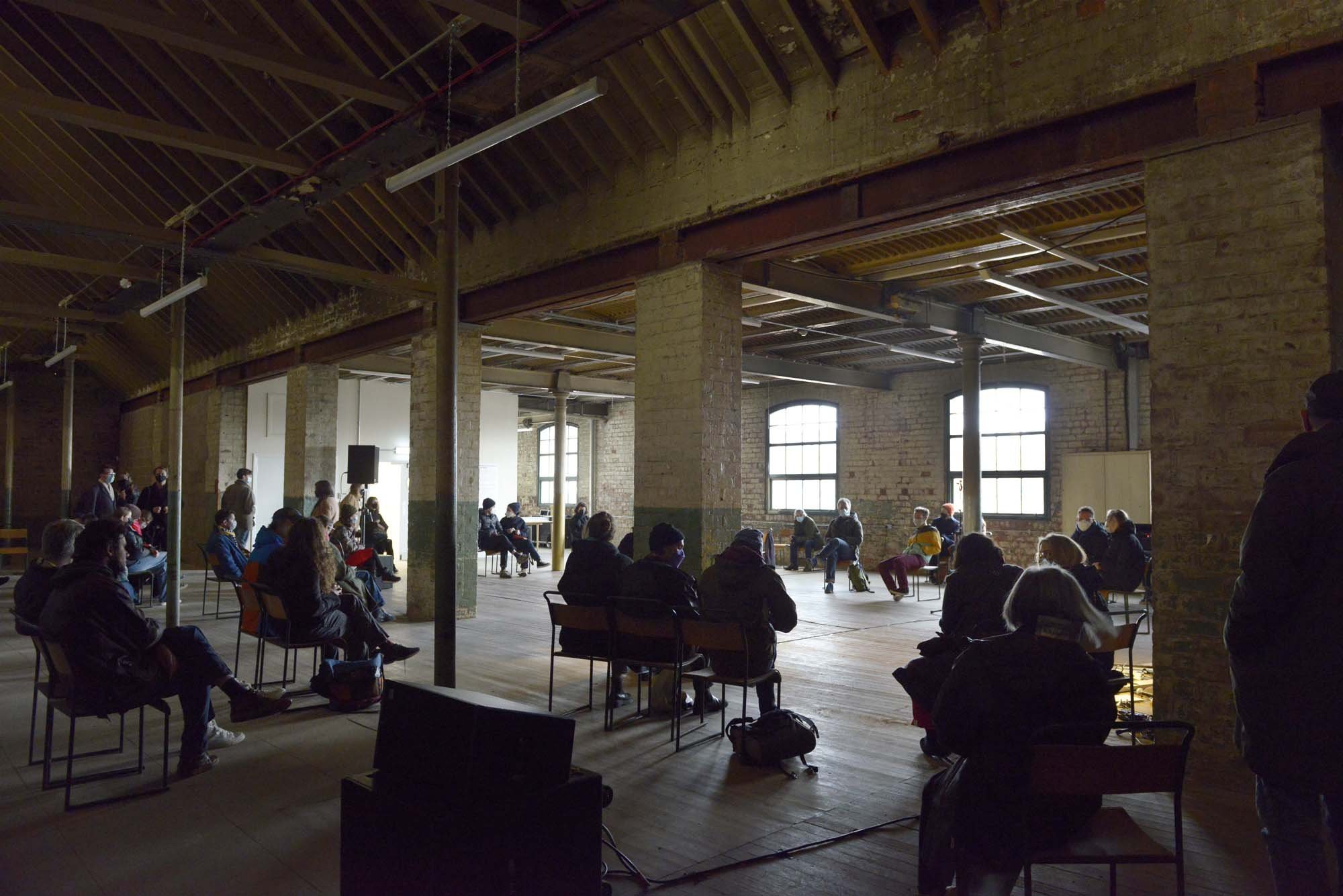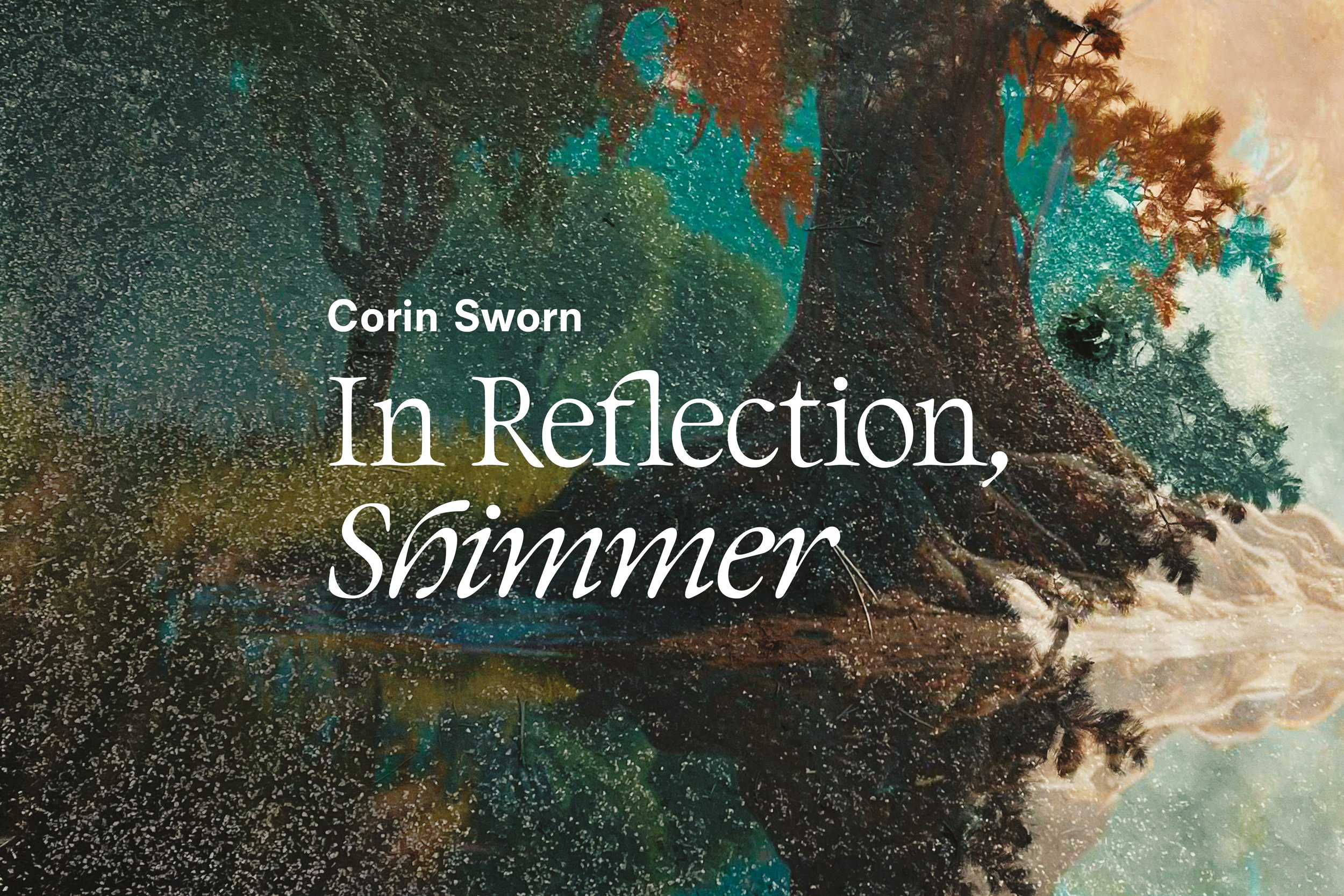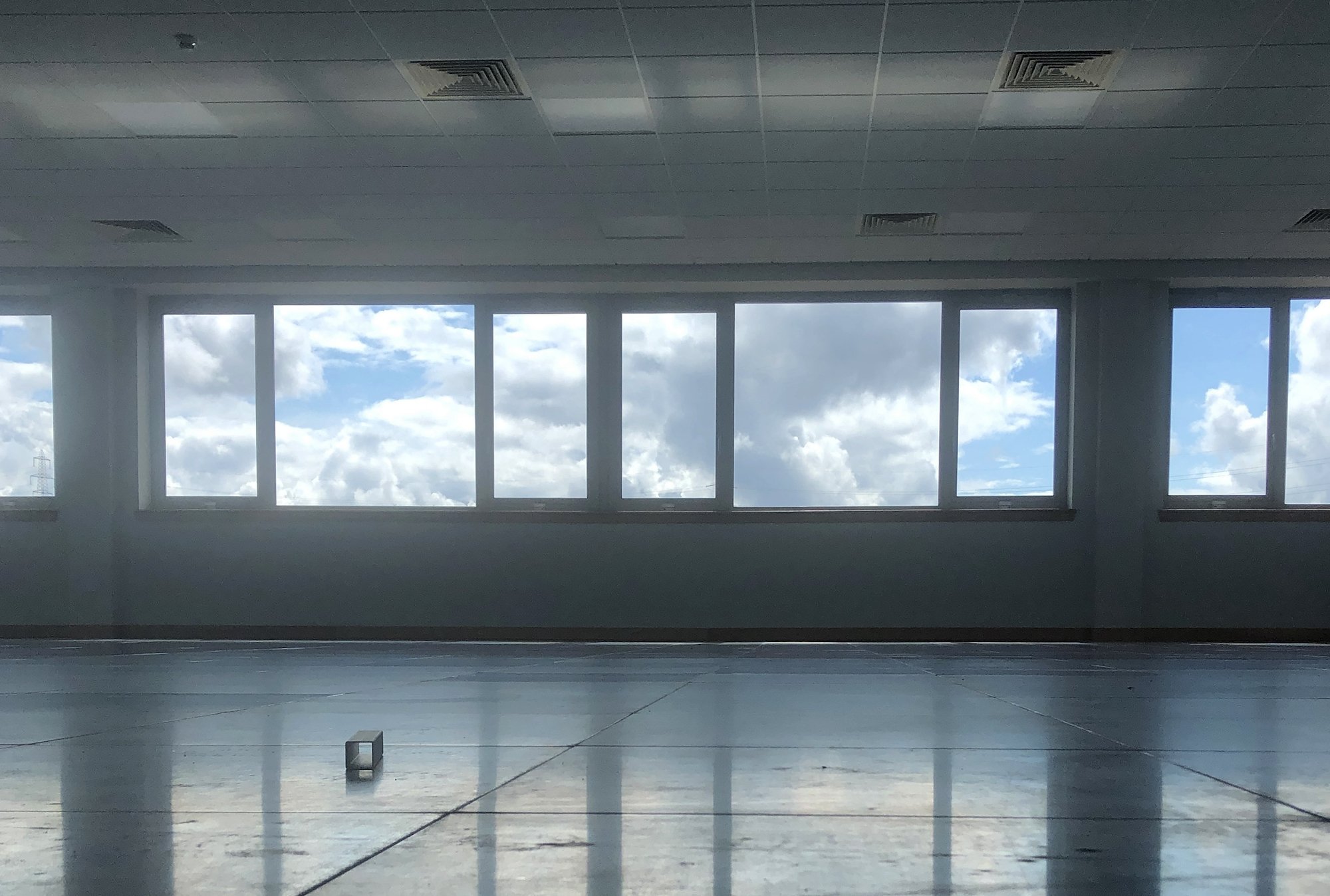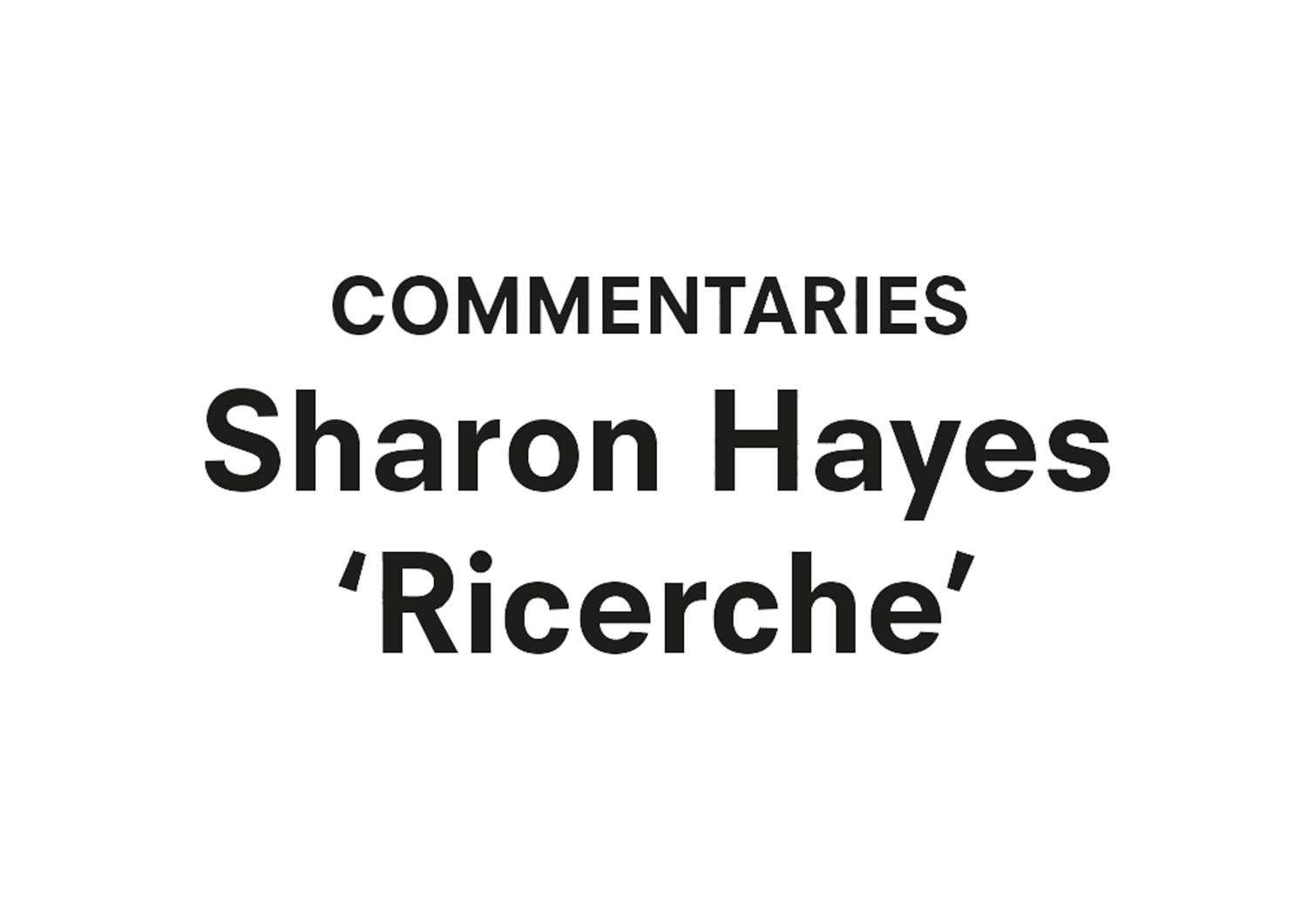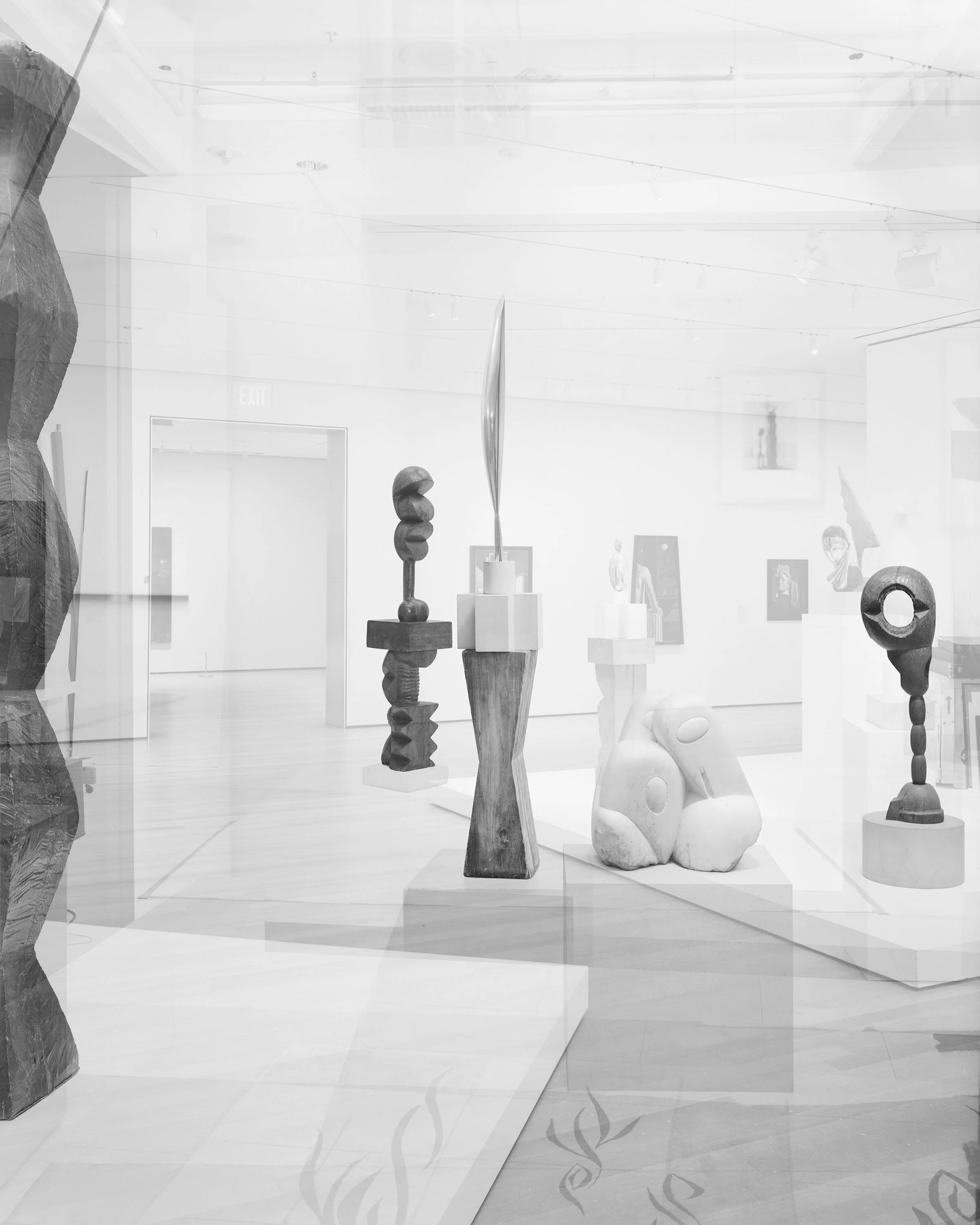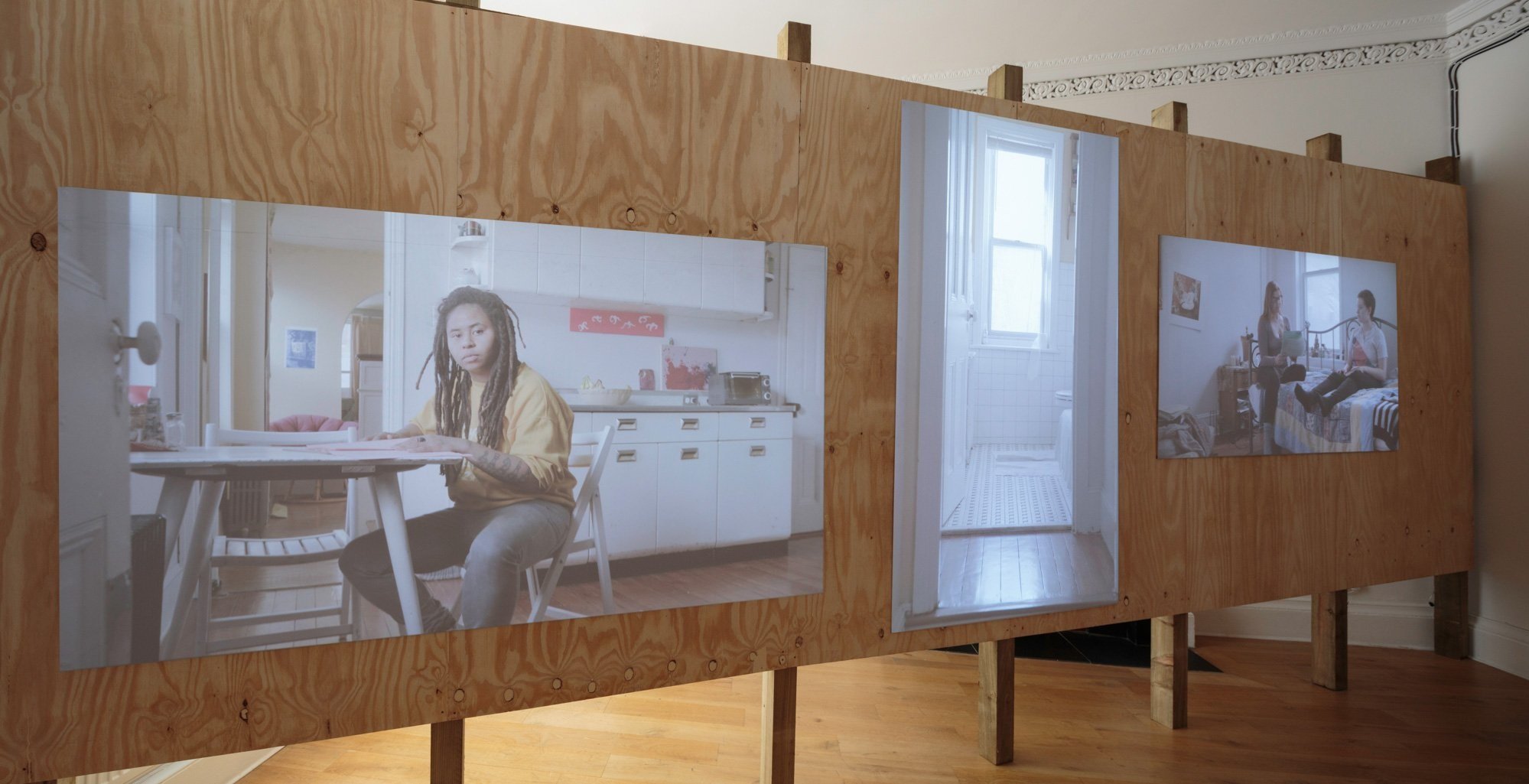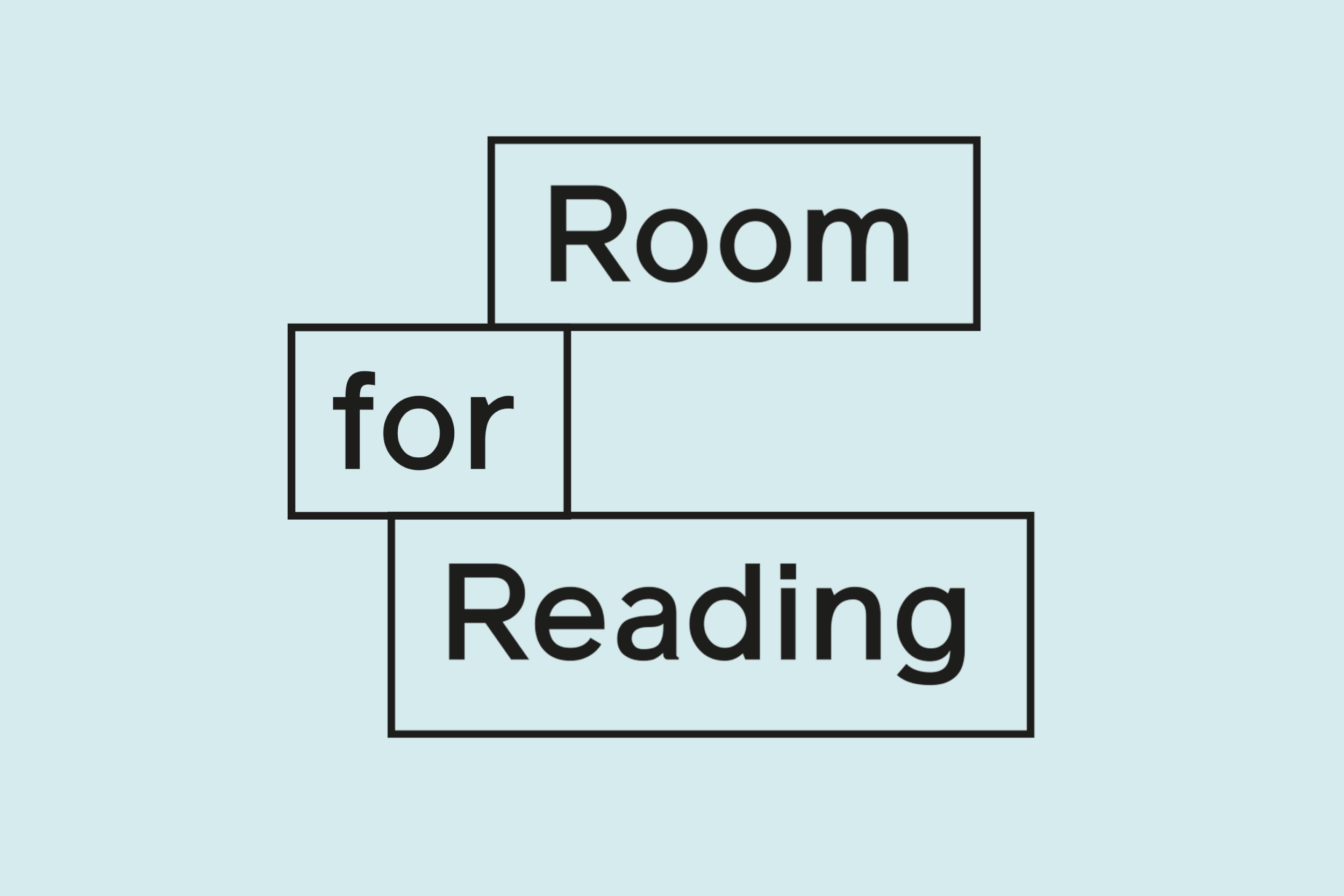
Room for Reading / Orsod Malik
Design: Maeve Redmond
Orsod Malik is a curator, researcher, writer and director of the Stuart Hall Foundation. Malik’s Library Session talk, ‘Insisting on Another Horizon’, was presented on 27 November. To accompany the talk, Malik shares a collection of texts that centre the foundational relationships and ideas that continue to shape his curatorial practice.
bell hooks, ‘Art on My Mind: Visual Politics” (2025).
“I know contributors to the Room for Reading don’t normally pose a theme, but I thought I’d base my recommended texts on some cherished relationships and their impact on my work.”
Art on My Mind: Visual Politics (2025) by bell hooks.
“Emmy Yoneda is an editor and artist who I regularly collaborate and think with through our curatorial collective, Minor Key. Yoneda led the way in republishing this bell hooks text while she was working at Penguin Random House, and it is one of the foundational texts that guides our work together and individually. Emmy is also my wife.
“Here is an excerpt from the essay ‘Workers for Artistic Freedom’, which I think captures the core ideas and interventions hooks offers in this critical collection of essays”:
Art should be, then, a place where boundaries can be transgressed, where visionary insights can be revealed within the context of the everyday, the familiar, the mundane. Art is and remains such an uninhibited, unrestrained cultural terrain only if all artists see their work as inherently challenging to those institutionalised systems of domination (imperialism, racism, sexism, class elitism, etc.) that seek to limit, co-opt, exploit, or shut down the possibilities for individual creative self-actualisation.
Read a pdf of ‘Art on My Mind: Visual Politics’ here.
Shiera S. el-Malik and Isaac A Kamola, ‘Politics of the African Anticolonial Archive’ (2017).
Politics of the African Anticolonial Archive (2017) by Shiera S. el-Malik and Isaac A Kamola.
“Shiera El-Malik is an Associate Professor in the Department of International Relations at DePaul University, Chicago. El-Malik was my first creative and intellectual mentor, and she continues to offer me guidance as a deeply cherished interlocutor. Shiera is also my sister and eldest sibling.
Shiera handed me this text when it was published. It remains a foundational resource for my curatorial practice and guides my approach to working with archives. Here is an excerpt I return to often:
What might happen if we universalise, in a grounded way, the experience of African anticolonial thought? What if we suggest that the fight against colonialism in Africa was not only a particular and exceptional experience, but also a universalising articulation of the human condition – an experience with insights that might be shared by all people?”
David A. Bailey and Allison Thompson, ‘Liberation Begins in the Imagination’ (2021)
Liberation Begins in the Imagination (2021) by David A. Bailey and Allison Thompson.
“David A. Bailey, the co-editor of this collection, has played a critical role in nurturing my curatorial practice. Bailey is a world-renowned curator, writer and cultural facilitator. He is a dear mentor and was the first elder who offered me the space to pursue the cultural and political questions that preoccupied me through exhibition-making. Working closely with him and Jessica Taylor at the International Curators Forum between 2021–2024 gave me the confidence to contribute to contemporary discourses that are reshaping the sector.
‘Liberation Begins in the Imagination’ gathers the work of creative and intellectual practitioners, some of whom I have the privilege to know and learn from through my work at the Stuart Hall Foundation, including Gilane Tawadros, Roshini Kempadoo, and Françoise Vergès. The collection continues Bailey’s work of stretching the limits of what is considered “British art” by exploring the co-constitutive relationship between the Caribbean and Britain.”
Silencing the Past: Power and the Production of History (1995) by Michel-Rolph Trouillot.
Silencing the Past: Power and the Production of History (1995) by Michel-Rolph Trouillot.
“I don’t know Michel-Rolph Trouillot personally! However, this book has been a critical companion to my practice and is a foundational text for many who are concerned with questions about the relationship between power, the production of history, and collective identities.
‘Silencing the Past’ helped shape my work on the Prince Claus Fund’s Moving Narratives Programme this year. It stimulated many of the conversations I had with the 12 artists on the programme, all of whom engage with history through their practices.
We thought with Trouillot to consider how we were working with and against historical narratives - individually and collectively. I feel very privileged to have worked with each of the artists this year and to call them friends. I’ll end with an excerpt from Trouillot:
Thus between the mechanically ‘realist’ and the naively ‘constructivist’ extreme, there is the more serious task of determining not what history is – a hopeless goal if phrased in essentialist terms – but how history works. For what history is changes with time and place, or, better said, history reveals itself only through the production of specific narratives. What matters most are the processes and conditions of production of such narratives. Only a focus on that process can uncover the ways in which the two sides of historicity intertwine in a particular context. Only through that overlap can we discover the differential exercise of power that makes some narratives possible and silences others.’”
Read a pdf of ‘Silencing the Past’ here.
Details
In conjunction with our projects, exhibitions and events, Room for Reading offers artists we work with an opportunity to contribute to The Common Guild library and share the books and resources that have influenced their artistic practice.
Every artist’s selection is added to The Common Guild’s expansive reference library of artist books, catalogues, and cultural and critical theory.
Visit
The Library is open Wednesday – Saturday from 12–5pm during exhibitions.
Free refreshments, including tea and coffee are available.
Browse
Browse our library catalogue online here.
Related

Room for Reading / Omar Kholeif
Design: Maeve Redmond
Following our ‘Detours’ event with author, curator, historian, and museum director, Omar Kholeif, they share a selection of books for our Room for Reading.
Kholeif, who has recently joined The Glasgow School of Art as Professor of Global Art Theory and Practice, selects books by Etel Adnan, Raymond Antrobus and Jean Fisher.
Etel Adnan, ‘In the Heart of a Heart of Another Country’ (2004).
Professor Kholeif notes, “I carry poetry everywhere. I believe it is akin to oxygen. Etel Adnan, who is known to many now as a painter, is someone whose words have deeply shaped my social imagination.”
Dr Kholeif has introduced Adnan’s influential poetry book titled, In the Heart of a Heart of Another Country published by City Lights of San Francisco. The volume served as a seat of inspiration for one of Kholeif’s largest group shows, In the Heart of Another Country, which began its journey at the Deichtorhallen, Hamburg in 2022.
Watch a short film of Kholeif speaking about the exhibition here.
Raymond Antrobus, ‘The Quiet Ear: An Investigation of Missing Sound’ (2025).
On recent influences —
“There has been an unwavering stimulus over the last five years or so and that is the poet, Raymond Antrobus. His book, The Quiet Ear: An Investigation of Missing Sound is a hybrid memoir and social history of deafness as it intersects with the performance of speech, race, class, and the politics of code-switching. It is as if he unspooled that book from deep within me. I won’t go into the personal details as to how his experiences interleave with my own here, but this volume is a testament to his talents. It is an act of resistance against ableism and erasure, as much as it is evidence of how the most harrowing facts of life can read so beautifully on the page.”
Watch Raymond Antribus perform a poem here.
Jean Fisher, ‘Vampire in the Text’ (2003).
On feeling one’s way through history —
‘“We live in an age of feeling, of an emotional politics. I have found myself for the last two decades concerned with how human expression is articulated between the interstices of time—experience through light, via fields of abstract colour. Two anthologies have guided me in this regard recently, painter Sean Scully’s incredibly generous book of writing, Inner, published by Hatje Canz and Jean Fisher’s collection, Vampire in the Text, published by Iniva. Both figures have much in common. They both studied fine art at Newcastle University a year apart; they both hold a strong interest with indigenous knowledge—Native American and African art history and literary forms, and finally, both served as kind and unexpected mentors to me.”
Read a selection of Jean Fisher’s essays here.
Details
In conjunction with our projects, exhibitions and events, Room for Reading offers artists we work with an opportunity to contribute to The Common Guild library and share the books and resources that have influenced their artistic practice.
Every artist’s selection is added to The Common Guild’s expansive reference library of artist books, catalogues, and cultural and critical theory.
Related

Room for Reading / Peng Zuqiang
Design: Maeve Redmond
For his Room for Reading selections, Peng Zuqiang shares a book of short stories, poetry and feminist sociology, all of which have influenced his practice and research in different ways. These publications and others selected by artists we work with, are available to read in our Library during exhibitions.
Jennifer S. Chang, ‘House A’ (2016).
‘House A’ by Jennifer S. Cheng
“Dear Mao,…”—every poem from the ‘Letters to Mao’ chapter begins with this impossible address. But what follows are intimate reflections: falling asleep in a sun-bathed Texan car; the sound of a hand shadow; and history that, like coastlines, “change shape every so often.” These are letters both to and not to him at the same time, and he can be the you-know-who, or a long-lost friend. It reminds me of the need to write letters.”
Read three poems by Jennifer S. Cheng here.
Eileen Chang, ‘Love in a Fallen City’ (1943:2007).
‘Sealed Off’ from ‘Love in a Fallen City’ by Eileen Chang
“I came to Eileen Chang late; perhaps it took time to understand the complexity of the human psyche she is so skilful at portraying. In ‘Sealed Off’, two people encounter each other on a tram that halts when a Shanghai street is temporarily sealed off due to a wartime air-raid alarm in the 1940s. History repeats eighty years later in a different way. Who do you talk to, and how do you feel, when a city is sealed off, and cleared up later again?”
Read ‘Sealed Off’ here.
Gail Hershatter, ‘The Gender of Memory: Rural Chinese Women and the 1950s’ (2011).
‘The Gender of Memory: Rural Chinese Women and the 1950s’ by Gail Hershatter
“What people remember is the product of a continual process of reworking, recitation, invention, and sometimes carefully guarded silences that help shape what is said.”
“This book was important to my process while working on the piece: it taught me how to pay attention to the inaccuracies, misremembering, and forgetting within the research.”
Watch Gail Hershatter discuss her book here.
‘If You Love Me, Please Let Me Know’ by Michelle Chen (1994)
This song by the Taiwanese artist Michelle Chen is one that Peng referred back to when developing the three channel work ‘Autocorrects’ (2023). This pop song from 1994 features a downtempo beat style, a genre popular in the early 1990s Chinese music scene, and perhaps partially influenced by British Street Soul, explaining the particular references contained in this karaoke music video.
Details
In conjunction with our projects, exhibitions and events, Room for Reading offers artists we work with an opportunity to contribute to The Common Guild library and share the books and resources that have influenced their artistic practice.
Every artist’s selection is added to The Common Guild’s expansive reference library of artist books, catalogues, and cultural and critical theory.
Visit
Visit our Library space Thursday-Saturday, 12–5pm and Sunday 12–4pm, where Peng Zuqiang’s Room for Reading selection will be available to read.
Related

Library Session / Noor Abed with Natasha Soobramanien and Luke Williams
Book cover of Noor Abed’s 'Stars at Midday’ (2024).
Noor Abed will be joined in conversation with authors Natasha Soobramanien and Luke Williams on Abed’s book نجوم الضهر 'Stars at Midday’ (2024).
Stars At Midday, first published in October 2024, is Noor Abed’s personal diary from the production phase of 'A Night We Held Between’, the film she made in Palestine in 2023 with family and friends, screening at The Common Guild from Friday 26 to Saturday 27 September.
Compiling visual and poetic notes, Abed’s book, like her film, interweaves narrative fragments, song and diaristic observations, creating a fusion of spontaneous and choreographed sequences of movement, with documentary and fictional elements. Through a choreography of bodies, sites, stories, and temporalities, Abed’s work prompts contemplation on the manifestations of social action and resistance in everyday life in Palestine.
Luke Williams (left) and Natasha Soobramanien (right). Photo: Tori Ferenc.
To mark the book’s 2nd printing, writers Natasha Soobramanien and Luke Williams will be in conversation with Abed about her book, the role of writing in her practice, and storytelling as an act of resistance.
'Stars at Midday’ is published by Occasional Papers. Copies will be available during the event.
Natasha Soobramanien and Luke Williams are the authors of 'Diego Garcia’ (Fitzcarraldo Editions/ Semtiotext(e), which won The Goldsmiths Prize in 2022. In 2017, their chapbook, ‘Enn Gramaten’ was published by The Common Guild and Book Works as part of ‘Dialecty', a series conceived by Maria Fusco.
Event Details
Access
This event took place in the library and event space on the ground floor of 5 Florence Street.
Related

Room for Reading / Hannan Jones and Samir Kennedy
Design: Maeve Redmond
Our Room for Reading offers further reading and recommendations directly from the artists included in our September events programme. Visit our library at Florence Street to browse their selections.
Hannan Jones
‘Acoustic Justice: Listening, Performativity and the Work of Reorientation’(2020)by Brandon LaBelle
‘Acoustic Justice: Listening, Performativity and the Work of Reorientation’ by Brandon LaBelle
“Recently, since I have been travelling, it has been somewhat light magazines, and zines but also moving slowly through this book, I really have enjoyed having these with me. A recent read, with my favourite chapters being Poetic Ecologises: Resonance, Imagination, Repair and Skin-Work: Queer Acoustics, Borderspaces, Economies of Desire."
Listen to Brandon LaBelle on Acoustic Justice here.
The Funambulist Magazine, Issue 58.
The Funambulist Magazine
“A magazine of Politics of Space and Bodies is an essential publication, it is compelling and full of multiple voices. This source I return to constantly, as part of specific research interests that map cultural and social migration but simultaneously because it is relevant, consistently challenging and expanding assumptions by drawing lines between complex power structures and humanities in a live, and responsive format.
The magazine hopes to 'provide a useful platform where activist/academic/practitioner voices can meet and build solidarities across geographical scales. Through articles, interviews, artworks, and design projects, we are assembling an ongoing archive for anticolonial, antiracist, queer, and feminist struggles', ”
Listen to The Funambulist’s podcast here.
“It's 6:18 In the morning, I got woken up by the Adhan a few minutes ago” (2024) by Nesrine Salem and "Un Scorpion Dans L'Épicerie" (2025) by Lydia Amarouche
“It's 6:18 In the morning, I got woken up by the Adhan a few minutes ago” (2024) by Nesrine Salem and "Un Scorpion Dans L'Épicerie" (2025) by Lydia Amarouche
"Ṣabr does not mean surrendering to life as it is, but accepting our realities while confronting them in a way that is possible on our scale, with the conviction that positive things will result. Ṣabr is an indispensable principle of activism in the current state of the world, a capitalist and white imperialist world."
“I chose these specific titles because they hold intimacy and depth, they are free flowing and feel as if you are entering a diary or a fragmented conversation collapsing in time. Nesrine Salem meditates on the textures of everyday tasks, prayer, family, thoughts, her relationship with Algeria and moments that are timely in her thoughts, the relation to geography, colonialism, especially in Gaza and Algeria. It traces moments with a specific pace and tempo of thoughts I can relate too, somewhat drifting between constellating inner worlds and outer realities.
I met with Nesrine, at a book fair in Marseille whilst on residency. She explained how she began this series of SABR Collection by inviting artists, practitioners to express themselves through creative writing. In Lydia Amarouche's writing she is mapping multiple moments interweaving the Scorpion as a driving force between territories, time and places. Beautiful!”
Samir Kennedy
‘Out of the Shadows: The Psychology of Gay Men’s Lives’ (2019) by Walt Odets
Kennedy’s first recommendation is ‘Out of the Shadows: The Psychology of Gay Men’s Lives’ by Walt Odets. Drawing on a lifetime's work as a clinical psychologist, Walt Odets uses the stories of his patients as well as the stories of his own deep relationships with other gay men to illuminate the difficulties gay men face and how they may be overcome.
Listen to Odets speak about his book here.
‘The Weird and the Eerie’ (2016) by Mark Fisher
In this book of essays, noted cultural critic Mark Fisher argues that a proper understanding of the human condition requires examination of transitory concepts such as the Weird and the Eerie. Using examples drawn from a wide range of literature, film, and music references—from H.P. Lovecraft and Daphne Du Maurier to Stanley Kubrick and Christopher Nolan, Fisher invites us to think beyond the realm of Horror in our understanding of these concepts.
Read a pdf of ‘The Weird and the Eerie’ here.
Details
In conjunction with our projects, exhibitions and events, Room for Reading offers artists we work with an opportunity to contribute to The Common Guild library and share the books and resources that have influenced their artistic practice.
Every artist’s selection is added to The Common Guild’s expansive reference library of artist books, catalogues, and cultural and critical theory.
Visit
The Library is open Wednesday – Saturday from 12–5pm during exhibitions.
Free refreshments, including tea and coffee are available.
Browse
Browse our library catalogue online here.
Related

Room for Reading / Noor Abed and Haig Aivazian
Design: Maeve Redmond
Our Room for Reading offers further reading and recommendations directly from the artists included in our September events programme. Visit our library at Florence Street to browse their selections.
Noor Abed
Noor Abed, ‘Stars at Midday’, 2024
Published by Occasional Papers, Stars at Midday (2024) is a personal production diary in which artist and filmmaker Noor Abed compiles visual and poetic notes from the production phase of her film A Night We Held Between, filmed in Palestine in 2023 with family and friends. Like the film whose production it chronicles, the book interweaves narrative fragments, song and diaristic observations, creating a fusion of spontaneous and choreographed sequences of movement, with documentary and fictional elements. Through a choreography of bodies, sites, stories, and temporalities, Abed’s work prompts contemplation on the manifestations of social action and resistance in everyday life.
Details
In conjunction with our projects, exhibitions and events, Room for Reading offers artists we work with an opportunity to contribute to The Common Guild library and share the books and resources that have influenced their artistic practice.
Every artist’s selection is added to The Common Guild’s expansive reference library of artist books, catalogues, and cultural and critical theory.
Visit
The Library is open Wednesday – Saturday from 12–5pm during exhibitions.
Free refreshments, including tea and coffee are available.
Browse
Browse our library catalogue online here.
Related

Room for Reading / ‘Myths of the new future’
Design: Maeve Redmond
Our Room for Reading offers further reading and recommendations directly from the artists included in ‘Myths of the new future’. Visit our library at Florence Street during the exhibition to browse their selections.
Taysir Batniji
Taysir Batniji, ‘Disruptions’(2024)
In ‘Disruptions’ (2024), Taysir Batniji collects fragmented screenshots taken between 24 April 2015 and 23 June 2017 during several WhatsApp video conversations with his mother and family in Gaza. Settled in Europe and unable to return to his homeland for years, this digital commons provided a crucial meeting ground for Batniji and his family: a digital space nonetheless shaped and destabilised by the same forces affecting the artist’s relatives in everyday life.
Hans Belting, ‘Florence and Baghdad: Renaissance Art and Arab Science’(2011) and Andrey Tarkovsky, ‘Time Within Time: Diaries 1970-1986’(2019).
By Palestinian poet Mahmoud Darwish, Taysir Batniji selects ‘Memory of Forgetfulness’ (1982, English translation, 1995) “I always had the feeling that he was the poet who expresses in words what I try to express with forms” says Batniji.
Read ‘Memory of Forgetfulness’ here.
He also selects Palestinian novelist, Akram Musallam’s ‘The Dance of Deep-Blue Scorpion’ (2021). “There is a lot of “(auto)derision in this book” says Batniji, “and a strong artistic dimension through the figure of the father who has lost his leg accidentally. This missing leg, and emptiness / absence in general, becomes a metaphor for Palestinian loss and dispossession.”
In French, Batniji selects ‘Diplopie’ (2009) by curator and photograhy historian, Clément Chéroux and Arlette Khoury-Tadié, 'Une enfance à Gaza (1942-1958)' (2002). Batniji says "the author describes a period which ends few years before my birth. Reading this story captured the reality of Gaza with far more clarity than I had understood it in my mind before".
Also in French, is Edward W. Saïd and Seloua Luste Boulbina, 'Dans l'ombre de l'Occident / Les Arabes peuvent-ils parler?' ('In the Shadow of the West / Can Arabs Speak?') (2011). Watch ‘The Shadow of the West’ written by Edward Said and directed by Geoff Dunlop here and read an interview with Seloua Luste Boulbina here.
By Hans Belting, ‘Florence and Baghdad: Renaissance Art and Arab Science’ (2011) and ‘Time Within Time: Diaries 1970-1986’ by Andrey Tarkovsky (2019). Belting’s book examines the use of perspective in Renaissance painting and its mathematical origins in Baghdad in the eleventh century, exploring the ramifications this has had on how we as viewers look at art in the present day.
‘Time within Time’ is both a diary and a notebook, maintained by Tarkovsky from 1970 until his death. Intense and intimate, it offers reflections on Dostoyevsky, Tolstoy, Hermann Hesse, Thomas Mann, and others. Batniji describes Tarkovsky’s diaries as “powerful testimony full of poetry…and the strong determination to pursue writing and filming despite censorship, restrictions and disease”. Read it here.
Dora Budor
Dora Budor,‘Continent’ (2023).
Dora Budor’s ‘Continent’ (2023) assembles materials relating to the exhibition of the same name at Kunsthaus Bregenz in 2022. The publication provides different perspectives on the project while also acting as an autonomous object within Budor’s broader body of work. Central to the book are four texts that elaborate on the exhibition in different ways by curator and writer Richard Birkett, Amelia Groom, architect and historian Robin Evans Budo, and the director of Kunsthaus Bregenz, Thomas D. Trummer.
Jesse Darling
Jesse Darling, ‘VIRGINS’ (2021)
‘VIRGINS’ (2021)is Darling’s first chapbook, a collection of poetry published by London based publishers Monitor Books. Described by Anne Boyer as “poems [that] sing from the scrappy corners where life still lives”, ‘VIRGINS’ brings stories of a cast of characters and presents them here as snappy vignettes.
M.E. O’Brien & Eman Abdelhadi,‘Everything for Everyone: An Oral History of the New York Commune 2052-2072’ (2022) and John Berger, ‘Hold Everything Dear: Dispatches on Survival and Resistance’ (2005).
Darling also recommends two books for our Room for Reading: ‘Everything for Everyone: An Oral History of the New York Commune 2052-2072’ (2022) by M.E. O’Brien & Eman Abdelhadi and ‘John Berger’s – Hold Everything Dear: Dispatches on Survival and Resistance’ (2005).
‘Everything for Everyone’ is a speculative fiction novel, imagining interviews with revolutionaries in a not-so distant future. Their stories outline how ordinary people's efforts to survive in the face of crisis contain the seeds of a new world.
A collection of essays by the English writer and painter John Berger, ‘Hold Everything Dear’ reflects on the political at the core of artistic expression and at the centre of human existence . The essays ponder the traumas of various conflicts at the start of the 21st century, meditating on the far extremes of human behaviour.
P. Staff
Derek Jarman, ‘Chroma’(1994), Johanna Hedva, ‘On Hell’ (2021) and Rosie Stockton, ‘Fuel’ (2025).
“Nocturnal sick bed missives, oil fields, Dungeness, black tar, broken bodies, feathers, hacking, freedom, domination, longing; domesticity and love, and the third house to the ninth house, kissing, sexting; colours of grief, blushes of apocalypse, blindness; i need unbroken speech. revolutionary letters. first hand accounts, temoignage, martyrs. violent systems of love.”
P. Staff
P. Staff selects Derek Jarman’s ‘Chroma’ (1994); ‘On Hell’ by Johanna Hedva (2021) and ‘Fuel’ by Rosie Stockton (2025).
Written a year before Jarman’s death, and as his eyesight was failing, ‘Chroma’ is an intensely personal work exploring the uses of colour from the medieval to the modern, with evocative memories from Jarman’s life. ‘On Hell’ by Johanna Hedva tells the story of an ex-con whose body is broken by American empire. It is a novel about escaping and the myths that trick and resist totalitarianism. In ‘Fuel’, Rosie Stockton showcases capitalism’s quiet shaping of our day-to-day lives. Exploring themes of labor, desire, gender, and loss, Stockton’s poems trace the emotions and structures that define us.
Read Johanna Hedva on P. Staff here.
P. Staff, ‘The Foundation’ (2015).
Published following Staff’s installation ‘The Foundation’ (a touring exhibition at Chisenhale Gallery, London; Spike Island, Bristol; Contemporary Art Gallery, Vancouver; and the Institute of Modern Art, Brisbane), this book, published in 2015, documents the eponymous work by Staff - a film installation exploring queer intergenerational relationships negotiated through historical materials and shot at the Tom of Finland Foundation in Los Angeles.
Details
In conjunction with our projects, exhibitions and events, Room for Reading offers artists we work with an opportunity to contribute to The Common Guild library and share the books and resources that have influenced their artistic practice.
Every artist’s selection is added to The Common Guild’s expansive reference library of artist books, catalogues, and cultural and critical theory.
Visit
The Library is open Wednesday – Saturday from 12–5pm during exhibitions.
Free refreshments, including tea and coffee are available.
Browse
Browse our library catalogue online here.
Related
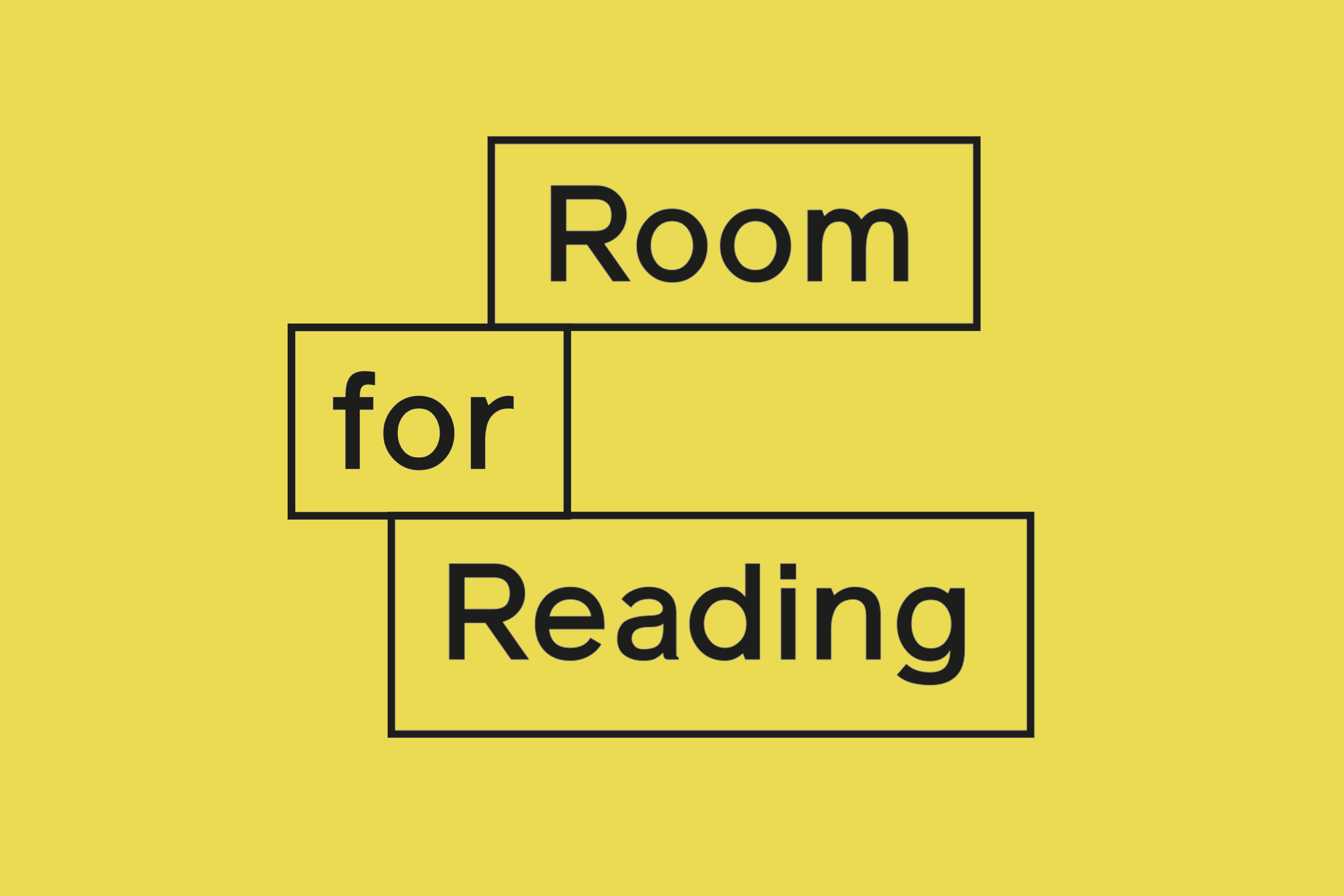
Room for Reading / Grenfell Foundation
Design: Maeve Redmond
This month’s books for our ‘Room for Reading’ have been recommended by the Grenfell Foundation, in conjunction with the presentation of Steve McQueen’s ‘Grenfell’ (2019) at Tramway from 8th – 23rd March.
‘Gold & Ashes’ (2022) by Feruza Afewerki
‘Gold & Ashes’ (2022) by Feruza Afewerki
‘Gold & Ashes’ is a collection of photo stories of the local community of survivors and bereaved from Grenfell. Shot over 2 years, this affecting and poignant book - released on the 5th anniversary of the tragedy - highlights the true stories, the humanity and courage of the Grenfell community. All profits from book sales go to the Grenfell Foundation.
‘Show Me the Bodies: How We Let Grenfell Happen’ (2022) by Peter Apps
‘Show Me the Bodies: How We Let Grenfell Happen’ (2022) by Peter Apps
Peter Apps meticulously exposes how a steady stream of deregulation, corporate greed and institutional indifference caused a tragedy. 72 people did not need to die, as the Grenfell Tower Inquiry makes clear. Here is the story of a grieving community forsaken by our government, a community still waiting for justice.
The book won the 2023 Orwell Prize for Political Writing.
Further Info
For more about the work of the Grenfell Foundation, see here.
Details
In conjunction with our projects, exhibitions and events, Room for Reading offers artists we work with an opportunity to contribute to The Common Guild library and share the books and resources that have influenced their artistic practice.
Every artist’s selection is added to The Common Guild’s expansive reference library of artist books, catalogues, and cultural and critical theory.
Related

Room for Reading / Laura Guy
Design: Maeve Redmond
In conjunction with Laura Guy and Steven Grainger’s event ‘Inventing Vocabularies’, Guy shares a selection of writing that has shaped the research project ‘Imagining a City’ for our Room for Reading.
Guy selects 'Leaving the Auld Toon' in Nothing Personal: Pilot Issue (2021) by Neil Clements; ‘All Shadows are Alive’ (2023) by Esther Draycott; 'Teneu’ (2024) by Rosie's Disobedient Press; ‘Ingress’ (2023) by Kate Morgan and ‘Apparitions (Nines)’ (2024) by Nat Raha.
'Leaving the Auld Toon' in Nothing Personal: Pilot Issue (2021) by Neil Clements.
'Leaving the Auld Toon' in Nothing Personal: Pilot Issue (2021) by Neil Clements
“I moved to Glasgow ten years ago, in 2015. I was working on my PhD, which looked at how queer feminist publics had been imagined by artists and activists through ephemeral print cultures, focusing on the manifesto form. Through this research, I was interested to come across the exhibition ‘Read My Lips: New York AIDS Polemics’, curated by Nicola White at Tramway in 1992. Histories of queer art and culture are often framed through notions of scarcity. Though it’s important not to understate the backdrop of homophobic legislation and government inaction against which ‘Read My Lips’ took place, it also happened at a time of relative abundance. The exhibition was well supported by public funding in the period immediately following Glasgow’s designation as ‘European City of Culture’.
Thinking about the implications of this exhibition for narratives of art and culture in the early 1990s, I have also been thinking about the cultural scene that I have participated in since 2015. This period has seen the emergence of a new institutional - or infrastructural, as the late Marina Vishmidt identified - critique. Neil Clements’ essay ‘Leaving the Auld Toon’, published in the pilot issue of Nothing Personal (2021), was instructive for me in this respect. Addressing Glasgow International and the story of the city it reinforces, Neil’s essay also provides a useful overview of transformations within the city’s funding landscape over the last two decades. Here paucity is not something that belongs to the past but the present. Yet he also identifies a ‘patchwork infrastructure’ of local practice. He writes, “if the city is to function in service of its local practitioners, we must pay closer attention to its internal rhythms”.”
‘All Shadows are Alive’ (2023) by Esther Draycott.
‘All Shadows are Alive’ (2023) by Esther Draycott
“‘All Shadows are Alive’ is the outcome of Esther Draycott’s research project about the Glasgow drying green. The formal inventiveness of her approach to histories of the city is structured through multiple voices and was developed within her PhD. In her writing, Esther weaves different kinds of artefacts together in a process that could be likened both to excavation and to reconstruction. It reminds me of what Naomi Pearce calls a ‘forensic feminist methodology’, where evidentiary approaches are employed in ways that complicate the writing of history of women’s lives and work. It also brings to mind Glasgow-based writer and artist Shola von Reinhold’s ‘Lote’ (2020), which does amazing work in relation to the obfuscation and erasure of black figures in history. The poet Edwin Morgan is a figure who casts a shadow across Esther’s pamphlet. She writes about how he uses ‘the dirt that remains on billowing white sheets on the Green to speak to another obfuscated story, that of homosexual life in post-war Glasgow’.”
'Teneu’ (2024) by Rosie's Disobedient Press.
'Teneu’ (2024) by Rosie's Disobedient Press
“Adrien Howard and Lisette May Monroe founded Rosie’s Disobedient Press in 2020, to foreground writers working from perspectives that have historically been marginalised by both mainstream and artist publishing. Like Esther’s writing, Rosie’s recent collection ‘Teneu’ is a situated exploration of the city, one that invokes the deep histories and forgotten futures of the St Enoch Centre. Calling upon the eponymous saint, Teneu foregrounds non-linear, queer temporalities in ways that are reminiscent of Charlie Prodger’s video ‘Bridget’ (2016). Teneu is also a meditation on formal and informal infrastructures and in this way contributes to a broader landscape of practice investigating post-industrial and post-colonial lineages and legacies within the fabric of the city of Glasgow. Mason Leaver-Yap’s contribution to Teneu concludes with a question that seems to encircle much of this work. “Classing something as a ruin is less about the thing being labelled, and more a question of who has the power to manifest and name the ruination in the first place... A ruin for whom, ruined by whom?”.”
‘Ingress’ (2023) by Kate Morgan
“Both Kate and their writing came to me through sad circumstances and in those circumstances opened up material and tender descriptions of fractured intimacies. They wrote ‘Ingress’ from their tenement flat in Glasgow. It contains observations about living, working, relationships and architectures. Like other texts on this list, ‘Ingress’ helps me to think about infrastructure in ways that are both critical and expansive. The scaffolding for ‘Ingress’ is unsure, susceptible to leaks. Glasgow seeps into the text as an atmospherical state.”
‘Apparitions (Nines)’ (2024) by Nat Raha.
‘Apparitions (Nines)’ (2024) by Nat Raha
“For some time now, my research and writing has predominantly attended to archives of post-1960s feminist, queer and trans cultural activity. There has been a tension in this work: the tug of the past on the urgent demands of the present. Along with others, I have been interested in this tension, in thinking through and alongside practices that make returns in ways that might allow the present to appear other than its dominant and dominating forms. But recently I’ve found myself less convinced by this desire to return to the archive. In part a consequence of regarding the genocide in Gaza, it’s also, not unconnectedly, because I’m compelled to write in relation to the counter-institutional and counter-infrastructural practices that are present in this city, some of which I’ve recorded here. Nat Raha’s scholarship is remarkable partly for the way it enfolds histories within practice and doing so expands the horizons of past(s) and present(s). Her poetry, most recently published in her book ‘Apparitions (Nines)’, does this too but with the greater immediacy and urgency, accumulation and interruption her form allows.”
Details
In conjunction with our projects, exhibitions and events, Room for Reading offers artists we work with an opportunity to contribute to The Common Guild library and share the books and resources that have influenced their artistic practice.
Every artist’s selection is added to The Common Guild’s expansive reference library of artist books, catalogues, and cultural and critical theory.
Visit
Our library space is open every Thursday from 12-5pm between 27th February and 27th March.
Related
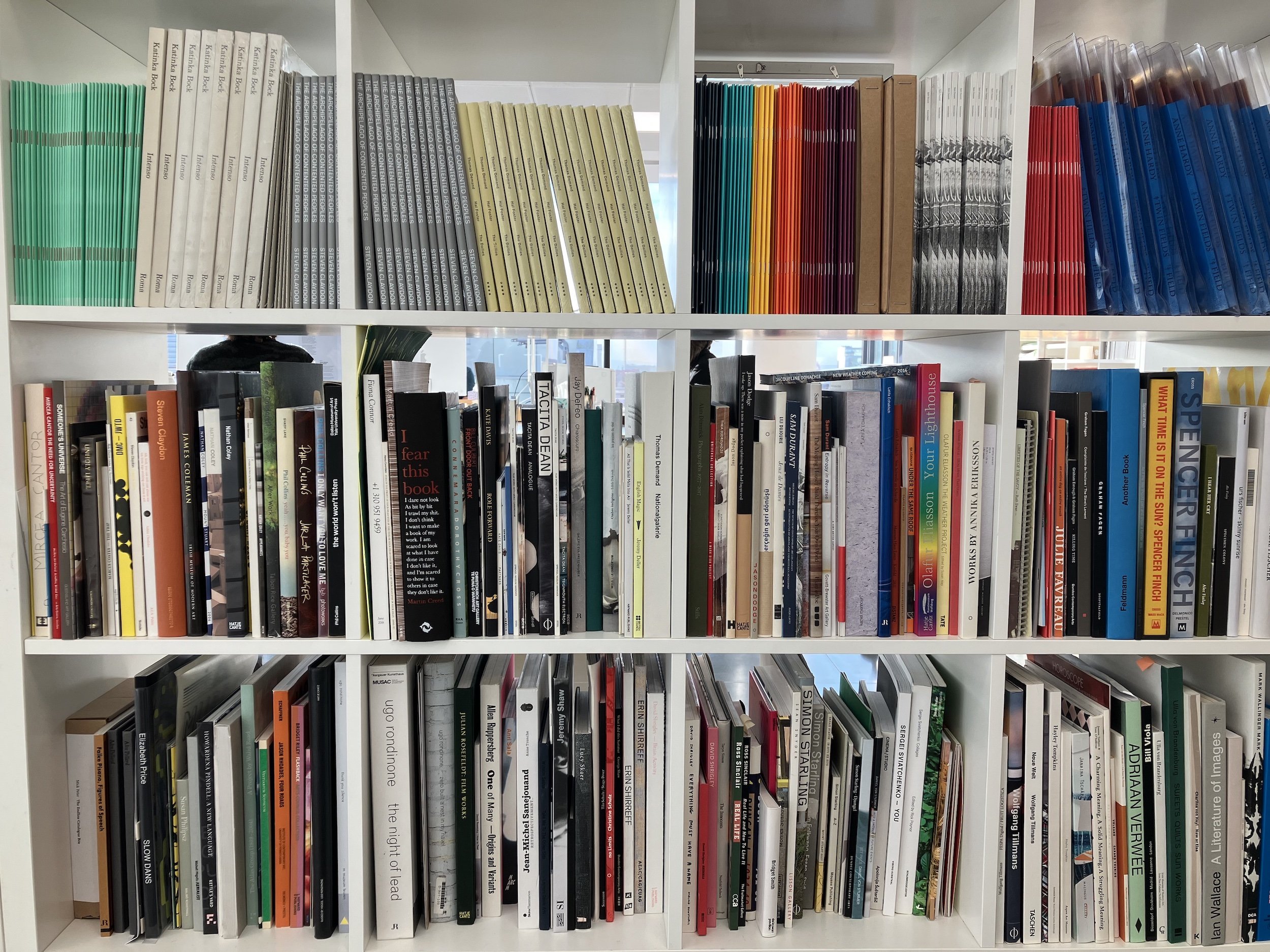
Library at Florence Street
The Common Guild’s reference library and public reading space is now located at 5 Florence Street.
Our expansive and growing collection includes over 1000 artist books, monographs, and catalogues, with subjects from art writing and curation to theory and public art.
The library collection has been shaped by the artists we have worked with and the many artists living and working in Glasgow. This includes our special collection ‘Room for Reading’, books recommended by the artists we work with. Our catalogues from international biennials, and books on theory and criticism reflect the most urgent discussions and pressing concerns addressed by contemporary art in recent years. Art magazines include the latest copies of Afterall, Art Monthly, Artforum and frieze. Further reading and resources relating to the current exhibition can be found in our library space.
Our collection is catalogued and available to search online here. Publications are organised in the following categories.
1 artists
1.1 monographs
1.2 catalogues
2 artist books
3 group shows
4 biennials
5 theory / criticism
6 art writing
7 curation
8 history of art
9 collections / surveys
10 public art
11 architecture
Our collection is continually updated as we acquire new publications. It is a unique and valuable resource that can be utilised by visitors.
The Common Guild bookstore is also available during library opening hours, including titles published by The Common Guild and a selection of artist monographs relating to our projects and exhibitions.
The latest writing from our Commentaries series, commissioned texts responding to our exhibitions and projects, are available from the library and free to take away.
Details
The Library can be found in The Common Guild’s new home at 5 Florence Street.
There is quiet space to read, study and browse, with free tea and coffee available.
Browse Online
Our library catalogue is hosted by Libib. Browse our collection here.
Visit
Wednesday – Saturday, 12–5pm, during exhibitions only.
Drop-in – no need to book.
Access
5 Florence Street has step free access.
Accessible toilets are available.
The nearest subway station is Bridge Street, a 14 minute walk away.
Location
Thanks
With thanks to Caterina Caulfield de Andres who digitised and catalogued the library as part of the University of Glasgow’s Internship scheme.
Related

Room for Reading / Tarik Kiswanson
Design: Maeve Redmond
To accompany Tarik Kiswanson’s current exhibition ‘The Rupture’, the artist shares a selection of recommendations for our Room for Reading.
Kiswanson selects ‘The Birds’ (1957) by Tarjei Vesaas, ‘Out of Place’ (1999) by Edward Said, and ‘Glass and God’ (1998) by Anne Carson.
“This is a list of three books from three different moments in my life, my childhood in Sweden, my teenage years in London at art school, and then finally, what I have read most recently.”
‘The Birds’ (1957) by Tarjei Vesaas.
‘The Birds’ (1957) by Tarjei Vesaas
“This is one of the first books I read as a child growing up on the outskirts of the city of Halmstad in Sweden. The town is located by the sea and was a particularly fitting context to read the book The Birds by Norwegian writer Tarjei Vesaas. Though, even at a young age, I often preferred reading poetry for its abstract form, this particular novel is quite extraordinary for its prose as we follow the psychologically troubled protagonist Mattias and the life he leads as a simple and quiet person whilst gaining insight into his rich inner world.”
Edward W. Said ‘Out of Place’ (1999)
‘Out of Place’ (1999) by Edward W. Said
“Many of course know Said’s writing very well, however less people are familiar with the autobiography he finished before passing away in 2003. Out of Place is one of the first books I read while at art school. Said recounts his life in a very captivating way, but what probably moved me the most in this memoir is how he asserts that feeling out of place is an active state of being, and inherent to intellectual and artistic thinking. Said gave me the understanding that this feeling of distance one might have, is a critical sensibility leading towards a continuous search for comprehension.”
Read an excerpt from ‘Out of Place’ here.
‘Glass and God’ (1998) by Anne Carson
‘Glass and God’ (1998) by Anne Carson
“I have read many of Anne Carson books, but I found this one particularly moving. Its rhythmic nature and the poignant subjects Carson touches upon are direct and unforgiving. It’s the latest book I read of hers and it stayed with me because of the emotional immediacy of the texts. Her writings continue to be important for my own writing practice.”
Read an excerpt from ‘Glass and God’ here.
Details
In conjunction with our projects, exhibitions and events, Room for Reading offers artists we work with an opportunity to contribute to The Common Guild library and share the books and resources that have influenced their artistic practice.
Every artist’s selection is added to The Common Guild’s expansive reference library of artist books, catalogues, and cultural and critical theory.
Visit
Visit our Library space Thursday – Saturday, 12–5pm, during exhibitions to view Tarik Kiswanson’s Room for Reading selection.
Related
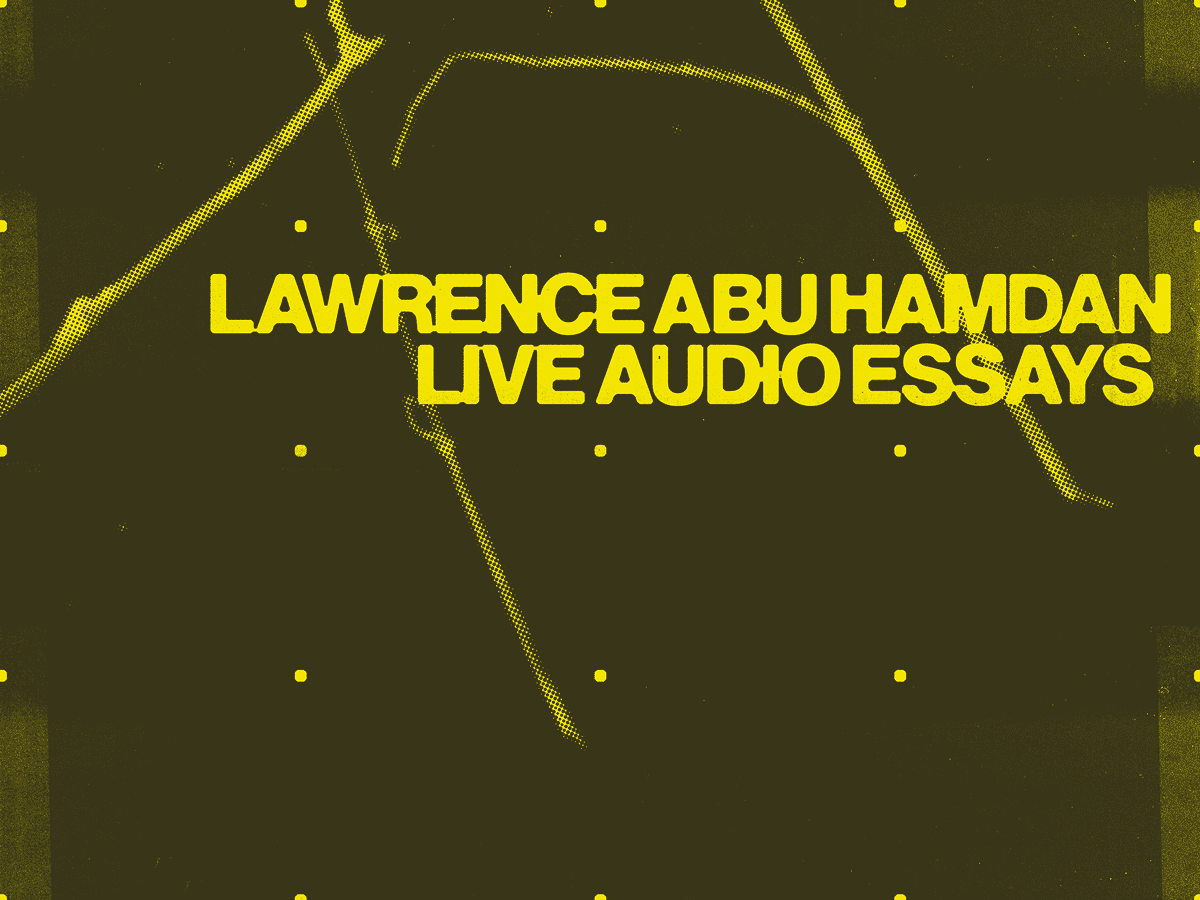
Lawrence Abu Hamdan – ‘Live Audio Essays’
Design: Tom Joyes.
Audio investigator Lawrence Abu Hamdan weaves together urgent political narratives that pivot around acoustic experience and sonic memory. ‘Live Audio Essays’ presents three key live performance works by Abu Hamdan in which sound and politics intersect. Two of the three performances have never previously been performed in the UK.
‘Air Pressure’ (2021), ‘A Thousand White Plastic Chairs’ (2020), and ‘After SFX’ (2018), will each be performed for one night only, each in a different music venue. These performances, delivered by the artist in the form of a monologue or “live audio essay”, present Abu Hamdan’s practice of research and investigative analysis, which is centred around “forensic listening”, auditory evidence and the “ear-witness” as political and legal testimony. Performances feature live percussion and guitar, filmed footage and sound design, with audio conditions enhanced to support careful listening: a conceptual and political tool for the artist.
Performances present narratives and testimonies that detail violence, oppression and aggression, offering strategies for political critique and action. ‘Air Pressure’ draws on research, conducted between May 2020–21, into the aerial soundscape of Lebanon, documenting 22,111 instances of Israeli fighter jets and drones in Lebanese airspace. ‘A Thousand White Plastic Chairs’ draws its scenography from translation techniques deployed during the Nuremberg trials (1945–46) with Abu Hamdan re-performing the asymmetry between technological prowess and the limits of cognitive processing. ‘After SFX’ is prompted by Abu Hamdan’s investigations into crimes that are heard but not seen.
‘Air Pressure’ (2021/2024)
‘Air Pressure’ (2021), the first of the performances, is a diaristic analysis written between May 2020 and May 2021 into the aerial soundscape of Lebanon where, from 2006–2021, there had been over 22,111 instances of Israeli fighter jet and drone violations in Lebanese airspace. Deploying publicly accessible information uploaded to the UN Digital Library, Abu Hamdan’s research and analysis brings this data together for the first time, making clear the scale and intensity of these incursions, and the consistent atmosphere of violence brought to bear across the territory.
Residents of Lebanon live in a state of precarity with the constant background noise of hostile jets and drones overhead. The potential of full-scale aerial bombardment is a daily possibility. Whether they are actively ignoring the noise from above or determined to document the violent aerial machines conspicuously hovering in the near distance, residents have developed modes of resistance.
Abu Hamdan’s account unfolds with live audio processing and countless videos of the rumbling sky, both pulled from open source content and captured by the artist and his team. Abu Hamdan employs the 'atmospheric' both aesthetically and conceptually to explore the ways in which violence is made manifest, reading Lebanon's air as a high pressure nexus in a global weather system.
'Air Pressure' is performed by Lawrence Abu Hamdan with live sound design by Moe Choucair. It has never previously been performed in the UK. With thanks to SWG3.
‘A Thousand White Plastic Chairs’ (2020/2024)
‘A Thousand White Plastic Chairs’ (2020) is performed by Abu Hamdan with electric guitar accompaniments by Fabio Cervi. The scenography for this work – flashing red and yellow lights – is inspired by the system of simultaneous translation deployed during the Nuremberg trials in the aftermath of World War II in 1945–6. This newly developed electronic audio technology enabled simultaneous translation of the trial proceedings from their spoken languages into Russian, French, German, and English.
During the performance Abu Hamdan is illuminated by these lights alone, which command and direct the artist’s speech. The performance departs from this apparatus to examine the inextricable relation between testimony and the technologies by which it is disseminated and distorted. Here, Abu Hamdan re-performs the asymmetry between the speed of the technology – which allowed words to travel through copper cables at 4,600 metres per second – and the speed of the human mind to process what it sees and stores of a given event. ‘A Thousand White Plastic Chairs’ serves as a proposition that the true capacity to bear witness is measured not through acts of coherent testimony and seamless speech but rather through its interruptions and breaking points.
'A Thousand White Plastic Chairs' has never previously been performed in the UK.
‘After SFX’ (2018/2024)
‘After SFX’ (2018) is prompted by sonic evidence, acoustic memories, and Abu Hamdan’s investigations into crimes that had been heard but not seen. The performance explores a series of sounds deriving variously from legal cases and trial transcripts, transhistorical testimonies, and interviews conducted by the artist with earwitnesses. The artist’s earwitnesses include prisoners held in Saydnaya, a brutal prison operated by the Syrian government.
In order to facilitate their testimonies and determine what they heard, Abu Hamdan experimented with pre-existing cinematic sound effects libraries, before developing his ‘Earwitness Inventory’ (2018–ongoing) a self-constructed sound effects library specific to the witnesses’ acoustic memories. The inventory includes everyday objects like a car door, popcorn maker, coins and loaves of bread. These objects operate as sonic analogies, conjuring sounds but also referencing psychological states of mind. A number of objects from the Earwitness Inventory will be activated during the performance.
‘After SFX’ explores sonic recall, and the question of a shared experience of sound. The performance points towards the difficulty of translation and the limits of language, offering a new acoustic vocabulary to articulate witness experience.
‘After SFX’ is performed by Lawrence Abu Hamdan with live sound design by Adam Laschinger and percussion by Iain Stewart. It is presented for the first time in Scotland in a new iteration developed in 2023.
About the artist /
Lawrence Abu Hamdan is an award winning artist, audio investigator and the founder of Earshot, the world’s first not-for-profit organisation producing audio investigations for human rights and environmental advocacy.
Abu Hamdan's work on sound and listening has been presented in the form of forensic reports, lectures and live performances, films, publications, and exhibitions all over the world. He received his PhD in 2017 and has held fellowships and professorships at the University of Chicago, the New School, New York and the Johannes Gutenberg University Mainz, where he developed his research AirPressure.info.
Project Details
Part of Glasgow International 2024 Open Programme.
‘Air Pressure’ was performed at SWG3 on the opening night of Glasgow International, ‘A Thousand White Plastic Chairs’ was performed at Audio, and ‘After SFX’ was performed at Barrowlands at the closing night of GI.
Watch an excerpt of ‘A Thousand White Plastic Chairs’ here –
Watch an excerpt from ‘After SFX’ here -
Read the Commentary by Neil Clements —
Listen to Neil Clements read the Commentary here –
Thanks
With thanks to Fabio Cervi, Moe Choucair, Adam Laschinger, Ambroise Leclerc, Jonny Lyons, Iain Stewart, Duncan Young.
Thanks to Audio, the Barrowlands, SWG3 and Inhouse.
Live captions were provided during performances with thanks to Marta Tycinska.
Related

Room for Reading / Lawrence Abu Hamdan
Design: Maeve Redmond
Our Room for Reading offers further reading on the work of Lawrence Abu Hamdan, in tandem with his project ‘Live Audio Essays’, presented in June 2024 as part of Glasgow International Festival.
Lawrence Abu Hamdan, ‘Live Audio Essays’(2023)
‘Live Audio Essays’ presents transcripts from seven of Lawrence Abu Hamdan’s works, which were originally presented as performances, films, or video installations. Texts from works performed in Glasgow include ‘After SFX’, ‘A Thousand White Plastic Chairs’, and ‘Air Pressure’ and can be found alongside scripts from Abu Hamdan’s various performance and film works from 2014-present.
Using personal narratives, anecdotes, popular media, and transcripts rooted in historical and contemporary moments, the artist leads the reader through his investigations into crimes that are heard but not seen. These live audio essays turn our focus to acoustic memories, voices leaking through walls and borders, the drone of warfare, cinematic sound effects, atmospheric noise, the resonant frequencies of buildings, the echoes of reincarnated lives, and the sound of hunger.
Lawrence Abu Hamdan, ‘Dirty Evidence’ (2022).
“In this piece[…] as in some before and many after, an important core of the artist’s work is revealed. It is much less about sound or the production of noise, but rather about listening - listening closely to spoken language, to noise and to silence.”
Fabian Schöneich
Published with Lenz Press to coincide with Lawrence Abu Hamdan’s exhibition at Bonniers Konsthall in Stockholm, ‘Dirty Evidence’ provides a visual overview of Lawrence Abu Hamdan’s works of more than a decade, and elaborates on a formal vocabulary characterised by the aesthetics of sound and language. The artists’s first monograph, the publication presents a comprehensive overview of Abu Hamdan’s practice accompanied by commissioned writing by Natasha Ginwala, Ruba Katrib, Andrea Lissoni, Ramona Naddaff, Theodor Ringborg, Yasmine Seale and Eyal Weizman.
Details
In conjunction with our projects, exhibitions and events, Room for Reading offers artists we work with an opportunity to contribute to The Common Guild library and share the books and resources that have influenced their artistic practice.
Every artist’s selection is added to The Common Guild’s expansive reference library of artist books, catalogues, and cultural and critical theory.
Related
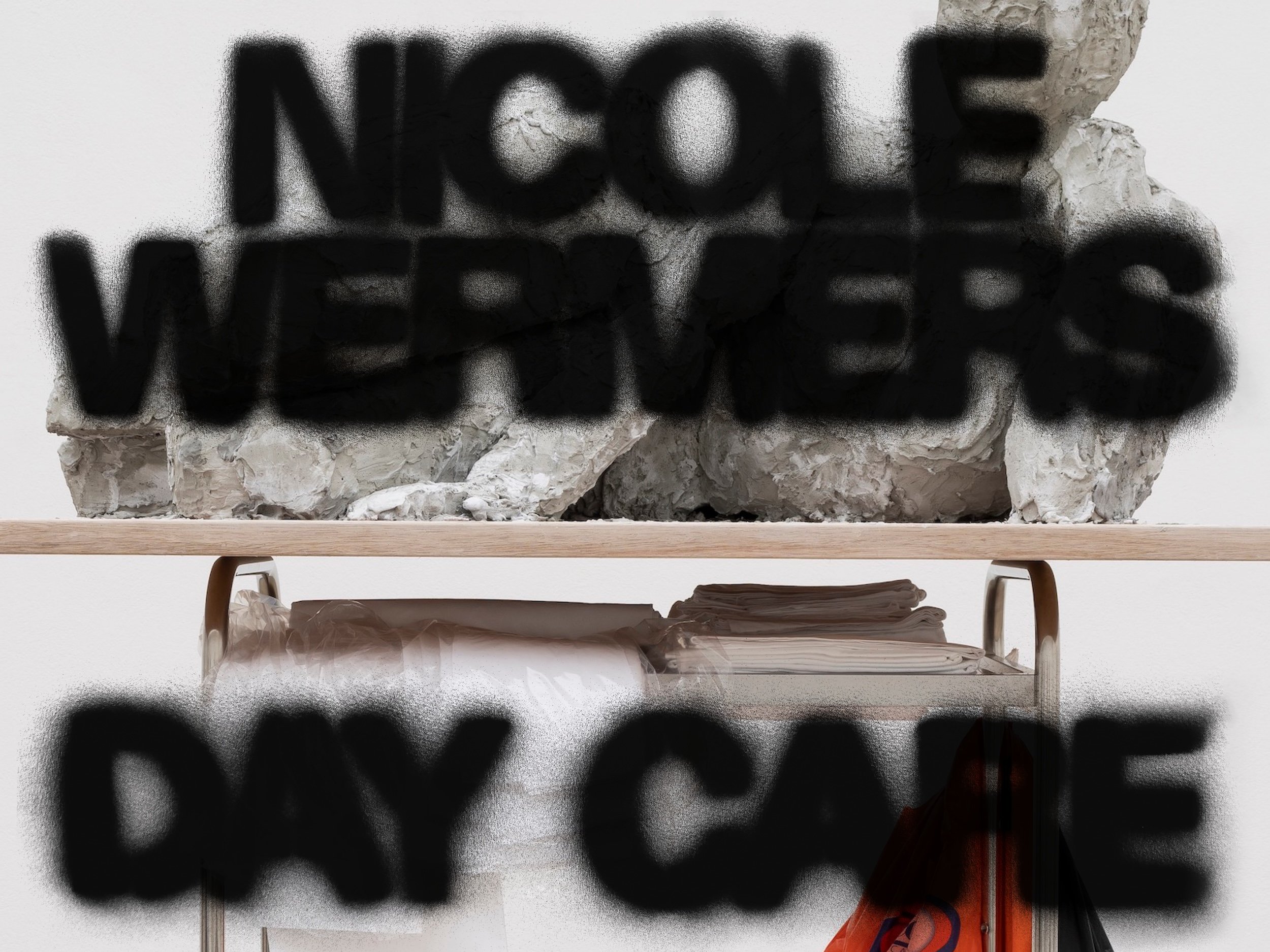
Nicole Wermers – ‘Day Care’
Nicole Wermers, ‘ Reclining Female #3’ (2022) (detail). Courtesy the artist; Herald St, London; Tanya Bonakdar Gallery, New York and Los Angeles; Jessica Silverman, San Francisco; and Produzentengalerie Hamburg. Photo: Gunnar Meier. Design: Tom Joyes.
Nicole Wermers’ ‘Day Care’ is an exhibition of new and recent sculptures set against the backdrop of Glasgow’s urban landscape. The works on show intertwine visions of women’s bodies at work or rest with the economics and politics of (urban) space, and the visibility and value of high art with the invisibility of care and maintenance work.
‘Day Care’ includes two newly commissioned sculptures, alongside sculptural interventions in the corporate office space of The Common Guild’s temporary premises on the seventh floor of 60 York Street. The exhibition marks Wermers’ most substantial institutional UK presentation to date.
Nicole Wermers, ‘Day Care’ (2024). Installation view, The Common Guild at 60 York Street, Glasgow. Courtesy the artist; Herald St, London; Tanya Bonakdar Gallery, New York and Los Angeles; Jessica Silverman, San Francisco; and Produzentengalerie Hamburg. Photo: Ruth Clark.
‘Day Care’ presents work from the artist’s latest series, ‘Reclining Females’ (2022–2024). These sculptures bring together the familiar, art historical trope of the reclining nude, with readymade commercial products and the banal apparatus of the service industry to critically engage with the social, psychological and economic conditions of urban space and architecture.
Wermers’ lounging female nudes appear larger than life-size and are hand-formed in plaster over styrofoam. Striking poses that evoke Henry Moore’s reclining bronze women, these voluptuous figures have the rough-hewn appearance of largescale sculptural studies. Each of the female figures adopts a different posture of repose, heads angled to meet the viewer’s gaze from an elevated position. They balance on wheeled maintenance carts filled with mops, freshly pressed linen, plastic bottles and chemical products for cleaning and disinfecting spaces such as hotels and corporate environments: spaces like the temporary gallery where they will be displayed.
The formal juxtaposition of the figures and carts create tension between ideas of labour and leisure, undermining gestures of decadence and desire routinely expressed by (male) renditions of the female nude. Instead, the figures imply exhausted, overworked bodies: low-waged and typically invisible women’s labour that sustains commercial and business environments. At the same time their size and elevated position asserts their defiant presence and independent agency. In the particular white-collar context of The Common Guild’s temporary space, the artworks generate discourse on corporate structures and overlooked labour hierarchies.
Nicole Wermers, Reclining Female #6 (2024). Courtesy the artist; Herald St, London; Tanya Bonakdar Gallery, New York and Los Angeles; Jessica Silverman, San Francisco; and Produzentengalerie Hamburg. Photo: Ruth Clark.
About the artist /
Nicole Wermers (born 1971 in Emsdetten, Germany) lives and works in London. She studied at Hochschule für bildende Künste, Hamburg from 1991–97 and received an MFA from Central Saint Martins College of Art and Design in 1999. Since 2017 she has been a professor of sculpture at Akademie der Bildenden Künste, Munich. Wermers was short-listed for the Turner Prize in 2015.
Selected solo exhibitions include: ‘Reclining Fanmail’, Kunsthaus Glarus; ‘P4aM2aRF!’, Herald St, London; ‘Emscher Folly’, Urbane Künste Ruhr/ Emscher Kunstweg, Duisburg permanent public art commission, (all 2022); ‘Earring for Cambridge’ public commission for Cambridge Judge Business School, Cambridge University; ‘Women between Buildings’, Kunstverein Hamburg, (both 2018); ‘Grundstück’, Jessica Silverman Gallery, San Francisco, (2017); ‘Givers & Takers’ Tanya Bonakdar Gallery, New York (2016); ‘Infrastruktur’, Herald St, London (2015); ‘The London Shape’ Stanley Picker Gallery, Kingston-upon-Thames (2014); ‘Manners’, site-specific commission for Tate Britain (2013). ‘Hotel Biron‘, Kunstverein für die Rheinlande und Westfalen, Düsseldorf; ’Masse und Auflösung’, Aspen Art Museum, Colorado (2007), ‘Earring‘ public sculpture project, Camden Arts Centre, London; and ’Chemie’, Secession, Vienna (2004-2005).
Selected group exhibitions include: ‘13 Women: Variation III’, Orange County Museum of Art, Costa Mesa, California; ‘Phantom Sculpture’, Mead Gallery, Warwick Arts Centre, Coventry; ‘Your Home Is Where You’re Happy’, Haus Mödrath, Kerpen; ‘Homo Ludens / About the Game of Art’, Woods Art Institute, Hamburg; ‘ Concerning Nature‘, Tanya Bonakdar Gallery, New York; ‘Femmenology‘, Jessica Silverman Gallery, San Francisco (all 2023). ‘Identität nicht nachgewiesen – Neuerwerbungen der Sammlung des Bundes’, Bundeskunsthalle Bonn; ‘SSSSSSSSSCULPTURESQUE’, Kiang Malingue Gallery, Hong Kong; ‘German Caviar’, Kunstmuseum Bonn; ‘On Equal Terms’, Uferhallen, Berlin; ‘By A Thread’, Tenter Ground, London (all 2022).
Her work was also included in ‘Magical Soup‘, Hamburger Bahnhof, Berlin; ‘More More More‘, Tank Shanghai, Shanghai; ‘Grace before Jones‘, Nottingham Contemporary, Nottingham; ‘Museum For Preventive Imagination‘, MACRO, Rome; ‘Design by Time‘, Museum of Craft and Design, San Francisco (all 2020); ‘Crack up Crack Down‘, 33rd Biennial of Graphic Arts Ljubljana, Center for Contemporary Art Ujazdowski Castle, Warsaw; ‘Design by Time‘, Knoxville Museum of Art, Knoxville, Tennessee, College of Wooster Art Museum, Wooster, Ohio; ‘Tainted Love (club edit)‘, Villa Arson, Nice; ‘Das Ruhr Ding‘, different venues in Dortmund, Oberhausen and Bochum, ‘Mein Blick‘, Hamburger Kunsthalle, Hamburg (all 2019); ‘ANTI‘, 6th Athens Biennale, Athens; ‘You Remind Me of Someone‘, FRAC Lorraine, Metz; ‘Die Zelle‘, Kunsthalle Bern, Bern; ‘Dime Store Alchemy‘, Flag Art Foundation, New York (all 2018). ‘Elevation 1049‘, different venues, Gstaad; ‘Quiz 2’, MUDAM Luxembourg; ‘Home Is No Place‘, German Embassy, London; ‘Tainted Love (Where Did Our Love Go)‘, Le Confort Moderne, Poitiers; ‘In Awe’, Kunsthalle Exnergasse, Vienna; ‘You Remind Me of Someone‘, Künstlerhaus Bremen, Bremen; ‘An Idea of Boundary‘, S.F. Arts Comission Gallery, San Francisco; ‘Display Show’, Stroom den Haag; ‘Intensive Nesting‘, Division Gallery, Montreal (all 2017); Turner Prize, Tramway, Glasgow; ‘Function Follows Vision, Vision Follows Reality’, Kunsthalle Wien Karlsplatz, Vienna; ‘Überschönheit’, Salzburger Kunstverein, Salzburg (all 2015); ‘A Singular Form’, Secession, Vienna (2014); ‘Villa Massimo Stipendiaten’, Martin-Gropius Bau, Berlin (2013); ‘Crazy House’, Museum für Moderne Kunst in Frankfurt (2012); ‘The New Décor’, Hayward Gallery, London (2010-2011); ‘A wavy line is drawn across the middle of the original plans’, Kölnischer Kunstverein, Cologne (2012); ‘Weltempfänger’, Galerie der Gegenwart/ Hamburger Kunsthalle, Hamburg (2007); ‘Tate Triennale’, Tate Britain (2006).
Further Info
The exhibition is supported by The Elephant Trust.
With thanks to Sam Talbot PR and Herald St, London.
Additional Links
‘Nicole Wermers Takes Us To The Cleaners’ review by Phin Jennings, Frieze, 25 March 2024.
Nicole Wermers ‘Day Care’ reviewed by Rose Higham-Stainton, Flash Art, 18 March 2024.
‘Invisible Labour’, Nicole Wermers interviewed by Ellen Mara De Wachter, Art Monthly, March 2024.
Interview with Nicole Wermers with Melanie Ohnemus, Kunsthaus Glarus, 2022 (German & English).
Details
‘Day Care’ took place at 60 York Street Glasgow, G2 8JX, The Common Guild’s temporary premises.
Read the Commentary by Caitlin Merrett-King —
Listen to Caitlin Merrett King read the Commentary here -
Exhibition Guide
Thanks
‘Day Care’ was supported by The Elephant Trust.
With thanks to Sam Talbot PR and Herald St, London.
Related

Room for Reading / Nicole Wermers
Design: Maeve Redmond
To accompany Nicole Wermers’ current exhibition ‘Day Care’, the artist shares a selection of recommendations for our Room for Reading.
Wermers selects ‘The Practice of Everyday Life’ by Michel de Certau (1980); ‘The Sphinx in the City: Urban Life, the Control of Disorder, and Women’ by Elizabeth Wilson (1991); ‘Koolhaas Houselife’ by Ila Bêka & Louise Lemoine (2013) and ‘Sculpture Vertical, Horizontal, Closed, Open’ by Penelope Curtis (2017).
Michel de Certau, ‘The Practice of Everyday Life’(1980)
‘The Practice of Everyday Life’ by Michel de Certau (1980)
“I read this book when I was completing an MA at Central St. Martins back in 2000 and it is still relevant to me and my work now, although it is dealing with an entirely physical version of public space and urban life, which is different to our current situation. The ideas about (re-)appropriating architecture, and by extension infrastructure, through spatial acts, and the subversion of given structures and hierarchies, had a direct impact on my thinking about sculpture in relation to the built environment.”
Read ‘The Practice of Everyday Life’ here.
Elizabeth Wilson,‘The Sphinx in the City: Urban Life, the Control of Disorder, and Women’(1991).
‘The Sphinx in the City: Urban Life, the Control of Disorder, and Women’ by Elizabeth Wilson (1991)
“I have for a long time been interested in the relationship of the (female) body to (urban) space and its infrastructure. The idea of the female flaneur somewhat awkwardly coined Flaneuse which has in the last 10 years been taken up in several writers of fiction, non-fiction and auto-fiction, is very interesting to me. This book from 1992, about how 19th century urban concepts and designs were closely linked to the question of how to control women in the city, paved the way for looking beyond the city as a structure which endlessly reproduces a male perspective. Plus: smashing title (with obvious references to my ‘Reclining Female’ sculptures).”
'Koolhaas Houselife’ by Ila Bêka & Louise Lemoine (2013)
“The basic concept of this film, to look at (great) architecture from the perspective of the people who clean and maintain it, is actually something that I outlined as a proposal for a film of my own back in 2006 when I applied for a residency at the Schindler House in Los Angeles. I didn’t get the residency and subsequently abandoned the project. A couple of years ago I happily discovered this film by Ila Bêka and Louise Lemoine who (obviously unaware of my project) documented the cleaner and caretaker Guadalupe Acedo of the Rem Koolhaas designed Maison a Bordeaux.”
Watch the trailer for ‘Koolhaas Houselife’ above.
Penelope Curtis, ‘Sculpture Vertical, Horizontal, Closed, Open’(2017).
‘Sculpture Vertical, Horizontal, Closed, Open’ by Penelope Curtis (2017)
“Despite thinking about (hidden) structures in the socio-economic reality of today’s urban environment, I like to think my work is still all about sculpture. I first experienced this book by Penelope Curtis as a series of lectures given by her at the National Gallery in London in maybe 2014 or 2015. I love that it divides the fundamentals of sculpture into basic orientations of volume in space. It is written from an art historian’s perspective, but you can tell she is also a total fan of the medium. Naturally relating to the reclining females, I was particularly interested in the horizontal as a sculptural category, especially its origins in effigies and tomb sculpture, but also the literal ground or floor that she relates to the threshold of life and death. Visible and invisible thresholds, are something that I have referred to often in my work, especially between public and private space in our late capitalist cities.”
Watch Penelope Curtis speak at the Hepworth Research Launch on ‘Beyond Sculpture’ here.
Details
In conjunction with our projects, exhibitions and events, Room for Reading offers artists we work with an opportunity to contribute to The Common Guild library and share the books and resources that have influenced their artistic practice.
Every artist’s selection is added to The Common Guild’s expansive reference library of artist books, catalogues, and cultural and critical theory.
Related

Yuri Pattison – ‘open stacks’
Design: Tom Joyes
‘open stacks’, a digital video installation by Yuri Pattison, is situated in the heart of one of the largest public libraries in Europe, The Mitchell Library. Unfolding across multiple screens, Pattison’s videos use the popular online format of ‘ambience videos’ which combine slow-moving visuals and soundscapes meant to aid focus and relaxation. Pattison’s ambient videos have been created in collaboration with an ambient YouTuber, animating base images produced by the artist using AI image generation tools to blend original and found photographs.
Yuri Pattison, ‘open stacks’ (2023)
Digital video, 4 channel audio, duration variable.
Yuri Pattison, ‘open stacks’(2023)
Repurposed library shelving, Dell PowerEdge R620 server modified with RTX 3060 GPU, digital video, 4 channel audio, headphones, desktop monitors, LED ceiling lights, ceiling speakers, cables, books, dust.
Installation view, The Blythswood Room at The Mitchell Library, 2023. Courtesy of the artist. Photo: Ruth Clark.
A second soundtrack, audible via headphones, presents a series of essays voiced by disembodied AI-generated narrators who ruminate broadly on the consequences of a world steadily overwhelmed by the private, commercial interests of technocratic powers. These unidentified, yet somehow familiar, narrators postulate variously on creative homogenisation and increasing cultural degradation; the pillaging of our shared intellectual and artistic heritage; eroded workers’ rights and the status of labour economies; and the social and political consequences of the unchecked centralisation of knowledge.
The voices have been programmed to mimic an amalgam of accents and anachronistic speech patterns recognisable for their perceived intellectual authority. The words they ventriloquise, which are unreliable, meandering and sometimes bizarre, are also authored by AI tools (large language models), as with the images on screen. Slipping between sense and nonsense, the video essays, made up of poor copies and degraded data, expose the intellectual limits and biases of AI. They make clear AI’s necrotic tendency to endlessly resample scraps of past human endeavour – with nonetheless alluring effect.
‘open stacks’ explores recent digital trends involving the rapid encircling and extraction of knowledge by networked technology, artificial intelligence and corporate power. Pattison addresses the library space as a stage upon which linearity, time, and veracity are in a constant state of recirculation, reformation and collapse. Through critically confronting immediate concerns and current discourse on AI technology, Pattison speculates on what appears to be history’s closing chapter of individual authorship, and the opening of a new one dominated by corporate intellectual property. ‘open stacks’ asks what becomes of human intelligence, and our perceptions of history and the present, when information is confined rather than accessible to all. The installation demonstrates the seductive aesthetics of tech whilst hinting that it is not yet too late to reclaim freedom of knowledge from extractive neoliberal powers.
Yuri Pattison, ‘open stacks’(2023)
Repurposed library shelving, Dell PowerEdge R620 server modified with RTX 3060 GPU, digital video, 4 channel audio, headphones, desktop monitors, LED ceiling lights, ceiling speakers, cables, books, dust.
Installation view, The Blythswood Room at The Mitchell Library, 2023. Courtesy of the artist. Photo: Ruth Clark.
‘open stacks’ was accompanied by a piece of writing by writer and researcher Aurelia Guo. Guo’s text was available from The Mitchell Library for the duration of the project and is included in the publication ‘anywhere in the universe’, available to buy in our Shop.
The practice of Yuri Pattison (b. 1986, Dublin, Ireland; lives and works in Paris) connects and materialises the intangible spaces between the virtual and physical through video, sculpture, installation, and online platforms. It explores how new technologies such as the digital economy and online communication have shifted and impacted the systemic frameworks of the built environment, daily life, and our perceptions of time, space, and nature.
Solo exhibitions include ‘clock speed (the world on time)’, mother’s tankstation, London, (2022); ‘the engine’, Douglas Hyde Gallery, Dublin (2020-21); ‘trusted traveller’, Kunsthalle Sankt Gallen (2017); and ‘user, space’, Chisenhale Gallery, London (2016). Selected recent and upcoming group exhibitions include ‘Ruhr Ding: Schlaf’, Urbane Künste Ruhr, Germany; ‘Radical Landscapes’, Tate Liverpool (both 2023); ‘Post Capital’, Kunsthal Charlottenborg, Copenhagen (2022); ‘One Escape at a Time’, 11th Seoul Mediacity Biennale, Seoul; ‘No Linear Fucking Time’, BAK, Utrecht; ‘Proof of Stake' – Technological claims’, Kunstverein in Hamburg, Hamburg; ‘The Ocean’, Bergen Kunsthall, Bergen, Norway; ‘TECHNO, MUSEION’, Bolzano, Italy (2021); ‘Long Live Modern Movement’, CCS Bard, Hessel Museum, New York (2020) and ‘Phantom Plane, Cyberpunk in the Year of the Future’, Tai Kwun Contemporary, Hong Kong (2019).
Aurelia Guo is a writer and researcher who lives in London. Her work explores interconnections between law and inequality. She is the author of ‘World of Interiors’ (Divided, 2022), a book of essays and poetry exploring contested histories of mobility, migration and displacement from social, legal, and biographical perspectives. She is the author of the poetry chapbooks, ‘2016’ (After Hours Ltd, 2016) and ‘NYT’ (Gauss PDF, 2018). She is a Lecturer in Law at London South Bank University.
Yuri Pattison, ‘time-bound’(detail) (1972—2008—2023)
Bound copies of Time magazine 1972–2008, vitrine.
Courtesy of the artist. Photo: Ruth Clark.
About the Library
One of Europe’s largest public libraries, the Mitchell Library opened in 1911 and was designed by William B Whitie, a local architect who won a competition to design the building. The original Mitchell Library was established in 1877, after tobacco manufacturer Steven Merchant left £70,000 to establish a large public library in Glasgow. Andrew Carnegie laid the first foundation stone for the Baroque style building in North Street, which has benefitted from numerous extensions over the years.
Project Details
Location
The Blythswood Room, 5th Floor
The Mitchell Library
North St, Glasgow G3 7DN
Transport links: Charing Cross Station.
Access
The Mitchell Library is wheelchair accessible.
Accessible toilets are available.
Further details from glasgowlife.org.uk/libraries or contact info@thecommonguild.org.uk for more information.
Production Credit
Claire Chen, ASMR Rooms
Thanks
With thanks to Dawn Vallance and staff at Glasgow Life.
Related

Room for Reading / Sean Edwards
Ahead of his commission as part of ‘anywhere in the universe’, our project looking at the present, past and future of the public library, Sean Edwards shares his recommendations for our Room for Reading.
Edwards selects ‘Index Cards’ by Moyra Davey (2020); ‘Acting Class’ by Drnaso (2020); ‘Libraries of Light’ by Alistair Black (2019); ‘Checkout 19’ (2021) by Claire-Louise Bennett and ‘Help for the Dyslexic Adolescent’ by E.G Stirling (1987).
Moyra Davey, ‘Index Cards’. (2020)
‘Index Cards’ (2020) by Moyra Davey
“I always return to Moyra Davey’s writing. Particularly her writing about reading. There is something about her style and approach that is akin to reading itself. She places the reader in the context of her own reading which in turn informs the text, taking the reader on a research narrative journey guided by her. Until this collection was published the writings were spread across numerous books and catalogues, but to have this collection in one place is like a small gift and one that is never far from my side.”
Listen to Moyra Davey on the Magic Hour podcast here.
Watch ‘Hemlock Forrest’ (2016) by Moyra Davey here.
Nick Drnaso, ‘Acting Class’. (2020)
‘Acting Class’ (2020) by Nick Drnaso
“Graphic Novels and picture books in general were my way into reading, and as a child of the 1980’s I mined the library for the small selections of ‘comics’ that they had in stock. Thankfully for young adults there are now far greater selections of these books at libraries. I still prefer to read images and Drnaso’s ‘Acting Class’ published last year is one that has remained with me. The sparse artwork and disorientating narrative arc about a group of strangers collected together through their attendance at an amateur acting class is both beautiful and deeply unsettling.”
Read an excerpt from Nick Drnaso’s ‘Acting Class’ here.
Alistair Black, ‘Librareis of Light: British Public Library Desig in the Long 1960s’. (2019)
‘Libraries of Light’ (2019) by Alistair Black
“Black’s book looks at the emergence of a new type of architectural design for British Public libraries in the 1960’s that broke with traditions and began to consider a new type of design. The book features a range of case studies, including Cardonald Library in Glasgow, to illustrate Black’s idea of ‘libraries of light’. Within the book, he proposes that the particular architectural design of these spaces convey the principles of a shared social egalitarianism.”
Read Alistair Black on the importance of public libraries in Apollo Magazine here.
Claire-Louise Bennett. ‘Checkout 19’.(2021)
‘Checkout 19’ (2021) by Claire-Louise Bennett
“This is a book about books, and about reading. It is also about the transformative power of books as objects. Bennett’s writing is recognisable to me in its the repetitions, loops and fragmentation. I think of her style as being immensely physical and object-like. The writing on the page carries gravity.”
Read an extract from ‘Checkout 19’ here.
E.G Stirling, ‘Help for the Dyslexic Adolescent’. (1987)
‘Help for the Dyslexic Adolescent’ (1987) by E.G Stirling
“I was diagnosed with dyslexia in the final year of my Masters. I found this book shortly after in a charity shop. It was first published in 1985 and the edition I own was reprinted in 1993 – the particular timespan when I would have, could have, needed it. Regardless, this absence has allowed it to be a tool ever since, one I mine regularly for work, thinking about reading, and looking. The techniques I self-developed to deal with dyslexia became a way to consider how the act of reading and looking can be used within my practice.”
Details
In conjunction with our projects, exhibitions and events, Room for Reading offers artists we work with an opportunity to contribute to The Common Guild library and share the books and resources that have influenced their artistic practice.
Every artist’s selection is added to The Common Guild’s expansive reference library of artist books, catalogues, and cultural and critical theory.
Related
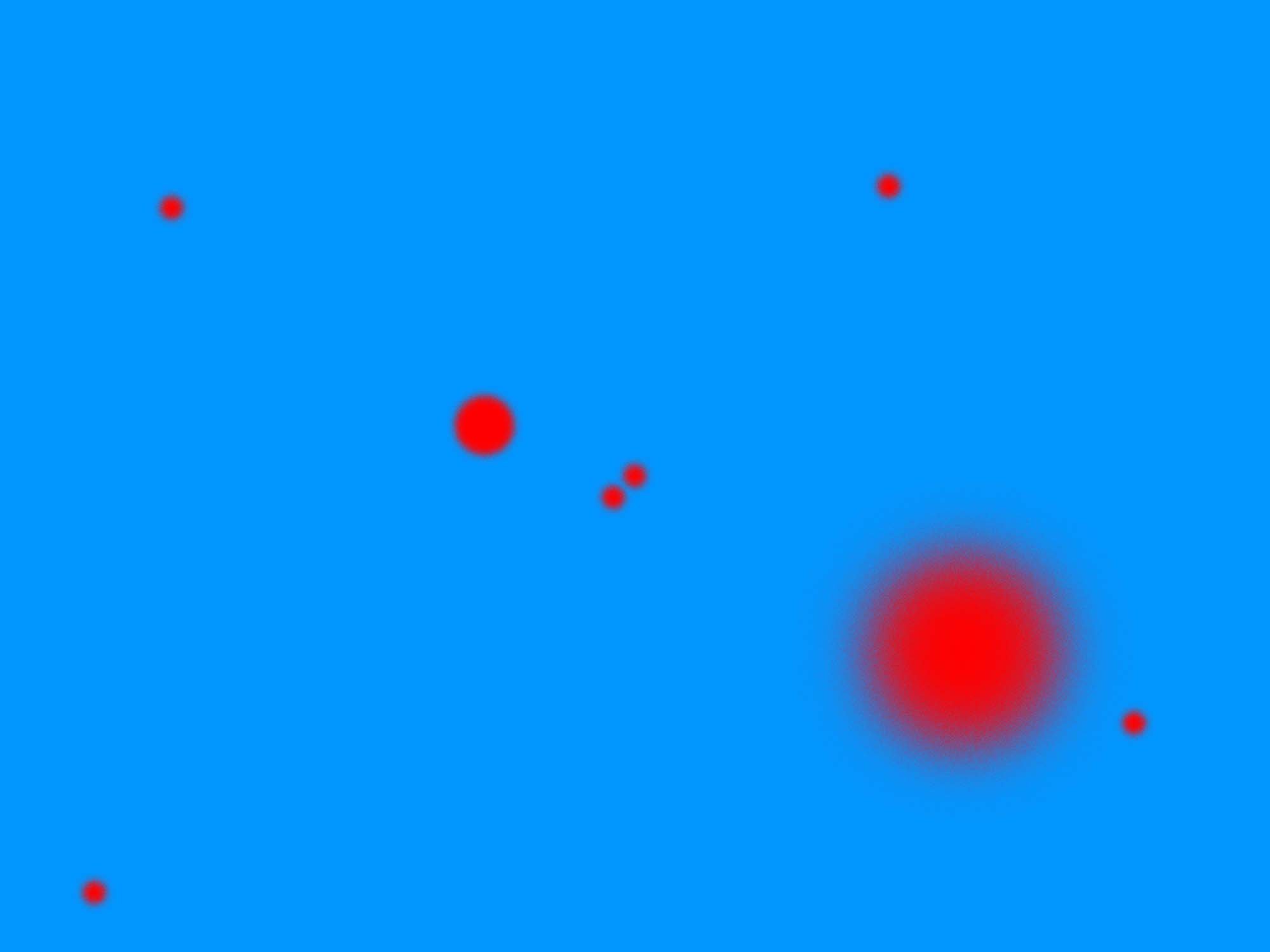
Kate Davis – ‘Natural History’
Design: Tom Joyes
Kate Davis has made a series of drawings that employ ‘frottage’ techniques. The frottages (or crayon rubbings) are taken from the interior and exterior of her local library in Pollokshields. These drawings are presented as a limited edition artist’s book which is freely available to anyone visiting Pollokshields library.
Kate Davis, ‘Natural History’, Pollokshields Library, 2023. Courtesy of the artist. Photo: Ruth Clark.
Davis’ frottage drawings take direct visual inspiration from the Surrealist artist Max Ernst (1891–1976) who further developed the method in 1925. Ernst published a collection of his own frottage drawings in 1926, titled ‘Histoire Naturelle’ (Natural History), and several of these depict animal forms. Other thematic starting points for Davis’ own ‘Natural History’ are Deborah Levy’s 2021 book ‘Real Estate’ and a 1973 small press publication, ‘An Intelligent Woman's Guide to Dirty Words: Volume One of the Feminist English Dictionary’, which includes a chapter of “woman as animal” idioms.
The term “high horse”, which is reclaimed in Levy’s book, provides a key motif in Davis’ new work. The Feminist English Dictionary offers further animal metaphors which are given form by Davis here.
Max Ernst described frottage as a means of making the unseen “visible” . This idea extends Davis’ interest in reconsidering histories and representations which are often absent, overlooked, or perhaps hiding in plain sight. Focusing on the library as a site for exploring language, ‘Natural History’ seeks to question how familiar phrases might be unpicked and reimagined.
Davis has also worked with children from Pollokshields Primary School to create their own fantastical creatures and imaginary beasts using collage and frottage drawing techniques. Their artworks will be on display at Pollokshields library.
‘Natural History’ was accompanied by a short piece of writing by author and journalist Charlotte Higgins. Higgins’ writing was available from Pollokshields Library for the duration of the project and is included in the publication ‘anywhere in the universe’, available to buy in our Shop.
Kate Davis (b. New Zealand, lives and works in Glasgow) works across film/video, drawing, printmaking, installation and bookworks. Questioning how to bear witness to the complexities of the past, Davis’ artwork is an attempt to reconsider what certain histories could look, sound and feel like.
Solo exhibitions include: Neuer Aachener Kunstverein, Aachen; A-M-G5 at 20 Albert Road, Glasgow; LUX, London; Stills, Edinburgh; Dunedin Public Art Gallery, New Zealand; The Drawing Room, London; Temporary Gallery, Cologne; GoMA, Glasgow; Galerie Kamm, Berlin; Museo de la Ciudad and La Galeria de Comercio, Mexico; Tate Britain, London; and Kunsthalle Basel amongst others.
Recent group exhibitions and screenings awards include: ‘Termite Tapeworm Fungus Moss’, CCA Glasgow; ‘Chips and Egg’, The Sunday Painter, London; 35th Kassel Documentary Film and Video Festival; ‘Class Reunion’, MUMOK, Vienna; ‘A Slice Through the World: Contemporary Artists’ Drawings’, Modern Art Oxford; ‘The Driver’s Seat’, Cubitt Gallery, London; The Margaret Tait Award 2016/17; Cinenova Presents ‘Now Showing’, LUX Cornwall; LUX/ BBC Artists and Archive commission; ‘GENERATION’, Scottish National Gallery of Modern Art; ‘HOUSE WORK CASTLE MILK WOMAN HOUSE’, Glasgow Women’s Library; ‘Art Under Attack’, Tate Britain; ‘The End of the Line: Attitudes in Drawing’, Hayward Touring Exhibition; ‘Art Sheffield 10’ (collaborative commission with Jimmy Robert); and ‘Das Gespinst’, Stadtisches Museum Abteiberg, Monchengladbach.
Charlotte Higgins is the chief culture writer of the Guardian. She writes a regular column for the Opinion pages; articles for the Long Read section; and also contributes arts features, book reviews and magazine articles.
As an author, most of her books are about the classical world: ‘Under Another Sky’ (2013) was shortlisted for the Samuel Johnson (now Baillie Gifford) prize, among other awards, and has been adapted into a play by David Greig; ‘Red Thread’ (2018) won the Arnold Bennett prize and was a BBC Radio 4 Book of the Week. Her latest, ‘Greek Myths’, with illustrations by Chris Ofili, was shortlisted for the Waterstones book of the year 2021. A further book, This New Noise (2015) was adapted from a series of Guardian essays about the BBC.
Born in the Potteries, Charlotte is a fellow of the Society of Antiquaries, a former winner of the Classical Association Prize, and a trustee of the British School at Rome.
About the Library
Pollokshields Library was designed by architect Thomas Gilmour and officially opened on the 20th of February 1907 by Sir John Stirling Maxwell. The library was built with money from Andrew Carnegie, in an Edwardian Baroque style. On the outside of the building, three plaques inscribed with ‘The Arts’, ‘History’ and ‘Literature’ sit below large, arched windows.
Project Details
Location
Pollokshields Library
30 Leslie Street, Glasgow G41 2LF
Google Map
Transport Links: Pollokshields East Station
Access
Pollokshields Library is wheelchair accessible. Accessible toilets are available.
Thanks
Kate Davis would like to thank: Effie Flood, Alison Nicol and all the staff at Pollokshields Library; Charlie Hammond, Patrick Jameson, Andrew Lee, Deborah Levy, Mara the Storyteller, Katherine Mackinnon, Dominic Paterson, Yvonne Quirmbach, and Jonny Lyons.
Related

Room for Reading / Yuri Pattison
Yuri Pattison shares his selections for our Room for Reading, ahead of his commission as part of ‘anywhere in the universe’, our project looking at the present, past and future of the public library.
Pattison’s installation, which explores the shifting history of access to knowledge and information, will be situated in the Mitchell Library from 18 June 2023.
Recommendations include – ‘World of Interiors’ (2022) by Aurelia Guo; ‘The Glen Park Library: A Fairy Tale of Disruption’ (2019) by Pamela M. Lee; ‘Ambient Commons: Attention in the Age of Embodied Information’ (2013) by Malcolm McCullough; ‘Resisting AI: An Anti-Fascist Approach to Artificial Intelligence’ (2022) and ‘Non-Fascist AI’ (2019) by Dan McQuillan; and Aaron Swartz’s ‘Guerilla Open Access Manifesto’ (2008).
Aurelia Guo, ‘World of Interiors’ (2022).
“When bees are close to death, they cling to flowers.”
Aurelia Guo’s ‘World of Interiors’ is a book of poetry and essays using collage and appropriation to destabilise the first-person ‘I’. Guo, who is a writer, researcher and lecturer in law at London South Bank University writes directly about the inescapable condition of being perceived and positioned by other people. Covering economic cycles of wealth and poverty at the levels of the individual, group and state, ‘World of Interiors’ is a book about travel and immigration: migrants, tourists and refugees. It is about the work of survival and the cost of survival. It is also a hopeful book - about how strong and indomitable the will can be.
Watch Aurelia Guo ‘Place's Tragodia: Law as Poetry and as Politics in Modernity’, a live event at Cell Project Space, March 2020 here.
Pamela M. Lee, ‘The Glen Park Library: A Fairy Tale of Disruption’ (2019).
In her book ‘The Glen Park Library: A Fairy Tale of Disruption’ (2019), Art Historian Pamela M. Lee uses the 2013 arrest of Ross William Ulbricht, suspected to be the mastermind of dark net marketplace Silk Road, at Glen Park Public Branch Library in San Francisco, to tease out the relationship between public libraries and digital culture. Written as a work of experimental art criticism, Lee provides original readings of five women artists—Gretchen Bender, Cecile B. Evans, Josephine Pryde, Carissa Rodriguez, and Martine Syms—who weigh in, either explicitly or inadvertently, on the nature of contemporary media and technology.
Watch art historian Pamela M. Lee read from ‘The Glen Park Library’ here.
Read a review of ‘The Glen Park Library’ in Art Forum here.
Malcolm McCullough, ‘Ambient Commons: Attention in the Age of Embodied Information’. (2013)
In ‘Ambient Commons: Attention in the Age of Embodied Information’ (2013), Malcolm McCullough, Professor of Architecture at the University of Michigan’s Taubman College of Architecture and Urban Planning, conceptualises what he terms ‘the Ambient’, interrogating how it is interacted with in everyday life and how it can be used to rethink attention.
Watch an interview with Malcolm McCullough here.
Dan McQuillan, ‘Resisting AI; An Anti-Fascist Approach to Artificial Intelligence’. (2022)
Pattison recommends two texts by Dan McQuillan. In ‘Resisting AI: An Anti-Fascist approach to Artificial Intelligence’(2022), McQuillan calls for us to resist and restructure AI by prioritising the common good over algorithmic optimisation. McQuillan outlines his proposals for this restructuring, utilising mutual aid as a means to support collective freedom. McQuillan’s article ‘Non-Fascist AI’ explains the basic workings of artificial intelligence and what is needed to achieve non-fascist AI.
Read ‘Non-Fascist AI’ here.
Pattison’s final recomendation is ‘The Guerilla Open Access Manifesto’ (2008) a document written by “hacktivist” Aaron Swartz, outlining the importance of freely accessible information on the internet. Swartz argues against publishers charging for copyrights and for sharing as a moral imperative that allows the dissemination of knowledge.
Read ‘The Guerilla Open Access Manifesto’ here.
Details
In conjunction with our projects, exhibitions and events, Room for Reading offers artists we work with an opportunity to contribute to The Common Guild library and share the books and resources that have influenced their artistic practice.
Every artist’s selection is added to The Common Guild’s expansive reference library of artist books, catalogues, and cultural and critical theory.
Related

Reading Event / Chitra Ramaswamy
Design: Tom Joyes
As part of ‘anywhere in the universe’, we have invited the award-winning journalist and author Chitra Ramaswamy to read excerpts from recent writing, including her newly commissioned text written in parallel with the work of Rabiya Choudhry at Glasgow Women’s Library.
Ramaswamy is the first of five writers commissioned to write alongside artists’ works during ‘anywhere in the universe’. Her fragment of narrative non-fiction accompanying Rabiya Choudhry’s illuminated artworks, ‘Give light and people will find the way (Ella Baker)’ will be available to pick up from Glasgow Women’s Library as well as Dennistoun Library, Shettleston Library for the duration of the project.
Rabiya Choudhry, ‘Give light and people will find the way (Ella Baker)’ (2022) installation view Glasgow Women’s Library 2023. Courtesy of the artist. Photo: Isobel Lutz-Smith.
Chitra Ramaswamy is an author and journalist. Her latest book,‘Homelands: The History of a Friendship’(Canongate) is a work of creative non-fiction exploring her friendship with a 98-year-old German Jewish refugee called Henry Wuga and winner of the 2022 Saltire Non-Fiction Book of the Year. Her first book, ‘Expecting: The Inner Life of Pregnancy’ (2016) won the Saltire First Book of the Year Award and was shortlisted for the Polari Prize. She has contributed essays to Antlers of Water, Nasty Women, The Freedom Papers, The Bi:ble, and Message From The Skies. She writes for The Guardian, is the restaurant critic for The Times Scotland, and broadcasts for BBC radio.
Project Details
This event takes place at Glasgow Women’s Library.
Refreshments will be available from 1.30pm.
The event starts at 2pm.
Tickets
Location
Glasgow Women’s Library
23 Landressy Street, G40 1BP
Transport links: Bridgeton Station
Access
Glasgow Women’s Library is wheelchair accessible. Accessible toilets are available.
Further details from womenslibrary.org.uk
A piece of narrative non-fiction by Chitra Ramaswamy was an accompanying text to Rabiya Choudhry’s commission for Glasgow Women’s Library, Dennistoun Library and Shettleston Library.
Related

Onyeka Igwe – ‘The Last Librarian in Glasgow’
Design: Tom Joyes
Onyeka Igwe’s play for libraries is informed by socialist-realist participatory theatre and educational plays to think through ways meaning is made collectively and how we tend to look upon the institutions we interact with in everyday life.
‘The Last Librarian in Glasgow’ is a short play set in the near future. The play follows two individuals who join forces in an attempt to resurrect the now-lost tradition of the public lending library. Working through their own indistinct, hazy childhood memories, and instructions from a zine, they start to assemble what they think might be the essentials of a community library, in an old, empty warehouse building.
Onyeka Igwe, ‘The Last Librarian in Glasgow’, Hillhead Library, 2023. Courtesy of the artist. Photo: Alan Dimmick.
Through dialogue and interaction with their new library visitors, the characters work through the assumptions, ideologies and complications of institutional formation. In enacting their new roles as librarians and custodians of an organisation, they call into question the ways institutions have developed and the structures and systems we have inherited in our own public spaces. Through a process of trial and error, they propose ways in which things might be different, and in turn speculate what is needed in society now and in an unknown future.
‘The Last Librarian in Glasgow’ points towards cycles of knowledge loss and reformation, and explores what is valued, inherited and saved for public use. The play highlights how information is accessed and exchanged, as well as changing notions of the civic, and habits of sharing in present times.
Igwe’s play was accompanied by a short piece of writing by the writer and researcher Lola Olufemi. Olufemi’s writing was available from Hillhead Library, Langside Library and Woodside Library, for the duration of the project and is included in the publication ‘anywhere in the universe’, available to buy in our Shop..
Onyeka Igwe is an artist and researcher working between cinema and installation, living and working in London, UK. Her work is animated by the question “how do we live together?” with a particular interest in sensorial, spatial, and non-canonical ways of knowing. She uses embodiment, voice, archives, narration and text to create structural “figure-of-eights”, a format that exposes a multiplicity of narratives.
Solo exhibitions and commissions include ‘A Repertoire of Protest (No Dance, No Palaver)’, MoMA PS1, New York (2023) ; ‘The Miracle on George Green’, Highline, New York (2022); ‘a so-called archive’, LUX, London; ‘THE REAL STORY IS WHAT’S IN THAT ROOM’, Mercer Union, Toronto, Canada, (both 2021), ‘There Were Two Brothers’, Jerwood Arts, (2019), and ‘Corrections’ with Aliya Pabani, Trinity Square Video, Toronto, Canada (2018).
In 2022 Igwe was nominated for the Jarman Award and shortlisted for the Max Mara Art Prize for Women 2022–2024. She was awarded the 2021 Foundwork Artist Prize; the 2020 Arts Foundation Futures Award for Experimental Short Film; and was the 2019 recipient of the Berwick New Cinema Award in 2019.
Lola Olufemi is a black feminist writer and Stuart Hall foundation researcher from London based in the Centre for Research and Education in Art and Media at the University of Westminster. Her work focuses on the uses of the feminist imagination and its relationship to cultural production, political demands and futurity. She is author of ‘Feminism Interrupted: Disrupting Power’ (Pluto Press, 2020), ‘Experiments in Imagining Otherwise’ (Hajar Press, 2021) and a member of 'bare minimum', an interdisciplinary anti-work arts collective.
About the Libraries
Located in Battlefield in the southside of Glasgow, Langside Library was opened in 1915, the last of the Carnegie libraries to be built in the city. Built on the principle of open access, the library was designed by architect George Simpson. The library features a mural of the Battle of Langside, which was painted by staff and students at the Glasgow School of Art and completed in 1921.
One of the largest Carnegie libraries in Glasgow, Woodside Library was designed by J R Rhind and opened in 1905. A large, glazed dome on the roof is a distinctive feature, and sculpture on the front of the building is attributed to William Kellock Brown. After a refurbishment, the library reopened in 2022, and is now home to a flexible community space, new study areas and a colourful woodland-themed children’s area stocked with books chosen by pupils from local primary schools.
The most used branch library in Glasgow, Hillhead Library has been a fixture of Glasgow’s West End since opening in 1975. The building was designed in Modernist architectural style by architects Rogerson & Spence, and the library’s interior open plan arrangement with spiral staircases represents a shift towards fully open access libraries.
Project Details
‘The Last Librarian in Glasgow’ was performed in Langside Library, Woodside Library and Hillhead Library across three days.
Performed by Elicia Daly, Pauline Goldsmith and Louis Pearson.
It is now available as an audio play - listen below.
Listen to ‘The Last Librarian in Glasgow’ –
Thanks
With thanks to staff at Glasgow Life.
Onyeka Igwe would like to thank Gordon Douglas; David Allan; Elly Goodman and Neil Packham at the Citizens Theatre; the Citizens Theatre Community Collective Group; February Workshop participants; and the Red Sunday School.
Thanks to the performers, Elicia Daly, Pauline Goldsmith and Louis Pearson, and to Chizu Anucha for the sound mix.
Related

Room for Reading / Kate Davis
Kate Davis shares her recommendations for our Room for Reading, ahead of her forthcoming commission as part of ‘anywhere in the universe’.
Davis has recommended Deborah Levy’s Living Autobiography Trilogy (2014–2021), Ruth Todasco’s 1970’s Feminist English Dictionary, and a lecture by artist Amy Sillman. Read more on Davis’ recommendations and their relationship to the development of her new work, below.
Deborah Levy, ‘Things I Don’t Want to Know’ (2014); ‘The Cost of Living’ (2018); ‘Real Estate’ (2021).
Deborah Levy, ‘Things I Don’t Want to Know’ (2014), ‘The Cost of Living’ (2018) and ‘Real Estate’ (2021).
“On the back of my copy of ‘Things I Don’t Want to Know’ there is a quote from Levy: ‘Even the most arrogant female writer has to work overtime to build an ego that is robust enough to get her through January, never mind all the way to December”. Levy’s questioning of how to pursue a creative self alongside everyday life is a key theme in this trilogy. It helped get me through the period before, during and after the pandemic and ‘Real Estate’ provided a direction for my ‘anywhere in the universe’ project.”
Listen to ‘The Cost of Living: Deborah Levy and Olivia Laing’, London Review Bookshop Podcast, April 2018 here.
Ruth Todasco,‘An Intelligent Woman's Guide to Dirty Words: Volume One of the Feminist English Dictionary’ (1973).
‘An Intelligent Woman's Guide to Dirty Words: Volume One of the Feminist English Dictionary’ (1973) by Ruth Todasco.
“I discovered this excellently-titled publication when doing research for ‘anywhere in the universe’. It was made by a group of women in Chicago and has a bold urgency that seems characteristic of much of the feminist activity being generated in America in the early 1970s. The ‘dirty words’ of the title are ‘english words and phrases reflecting sexist attitudes toward women in patriarchal society, arranged according to usage and idea’– and many of these derogatory terms are still so familiar.”
Read ‘Feminists Find That Words Fail Them’, a New York Times review of ‘An Intelligent Woman's Guide to Dirty Words’, January 1974, here.
‘Conversation with Amy Sillman: Drawing in the Continuous Present, The Menil Collection’ (2017).
This generous lecture fizzes with Sillman’s intelligent curiosity and humour. Drawing is key to my practice and I am often questioning what certain forms of mark-making mean today. I appreciate how Sillman manages to both critique and embrace such a wide range of approaches to drawing. I am also grateful to Sillman for introducing me to Manny Farber’s ‘Termite art’ and its articulation of ‘a bug like immersion in what is close to hand’. I am regularly seeking that sort of immersion in the studio.
Watch Amy Sillman’s lecture ‘Drawing in the Continuous Present’, The Menil Collection, February 2017, above.
Details
In conjunction with our projects, exhibitions and events, Room for Reading offers artists we work with an opportunity to contribute to The Common Guild library and share the books and resources that have influenced their artistic practice.
Every artist’s selection is added to The Common Guild’s expansive reference library of artist books, catalogues, and cultural and critical theory.
Related

Room for Reading / Onyeka Igwe
Ahead of her commission as part of ‘anywhere in the universe’, our project looking at the present, past and future of the public library, Onyeka Igwe shares her recommendations for our Room for Reading.
Igwe shares ‘there are more things’ (2022) by Yara Rodrigues Fowler and Sylvia Wynter’s ‘We Must Learn to Sit Together and Talk about a Little Culture: Decolonizing Essays 1967-1984’ (2022), publications that offer insight into the performance work she is currently developing for Glasgow’s libraries, to be presented in Spring 2023.
Yara Rodrigues Fowler, ‘there are more things’.
Igwe says, “Yara Rodrigues Fowler’s ‘there are more things’ is the book I talked about the most and recommended a lot in 2022. This is a book about the radical possibilities of being, thinking and making another world, together. I had to pace myself reading it.”
Listen to Yara Rodrigues Fowler speak about ‘there are more things’ on the London Review Bookshop’s podcast here.
Sylvia Wynter,‘We Must Learn to Sit Together and Talk about a Little Culture: Decolonizing Essays 1967-1984’.
‘We Must Learn to Sit Together and Talk about a Little Culture: Decolonizing Essays 1967-1984’ (2022) by Sylvia Wynter.
“I wanted to know more about Wynter's plays, prose and artistic output and this collection offers another perspective of her thinking that perhaps grounds the theoretical thinking. I read some of these essays and articles together with friends and strangers in an online reading group. Wynter’s essay on the adaption of Federico García Lorca's 'The House of Bernarda Alba' is helping me think about the operation of theatre and performance to help society 'admit what makes it move'.”
Read ‘Rethinking “Aesthetics”: Notes Towards a Deciphering Practice’ by Sylvia Wynter on Monoskop here.
Details
In conjunction with our projects, exhibitions and events, Room for Reading offers artists we work with an opportunity to contribute to The Common Guild library and share the books and resources that have influenced their artistic practice.
Every artist’s selection is added to The Common Guild’s expansive reference library of artist books, catalogues, and cultural and critical theory.
Related
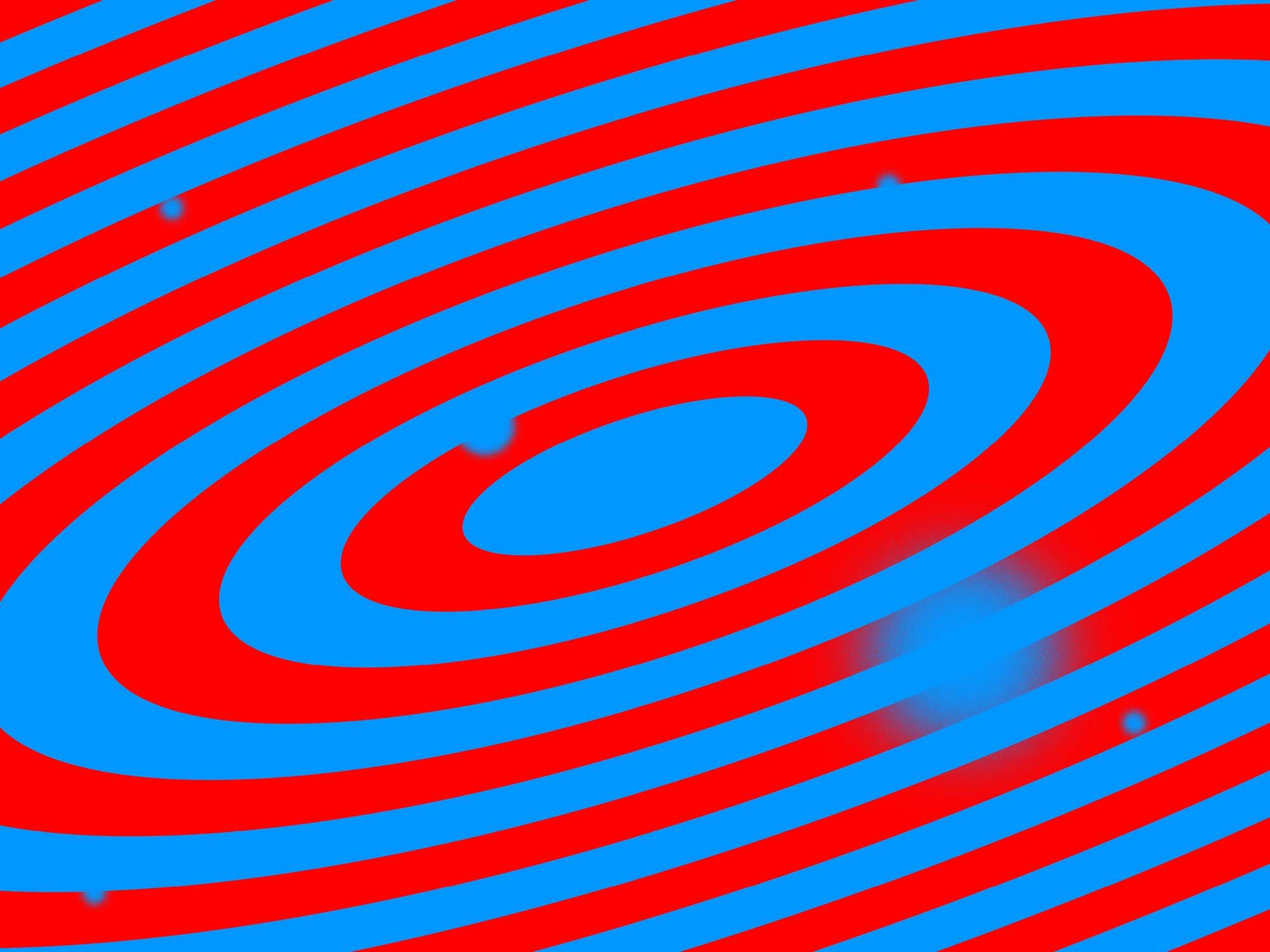
Rabiya Choudhry – ‘Give light and people will find the way (Ella Baker)’
Design: Tom Joyes
Rabiya Choudhry’s new illuminated artworks for three East-End libraries have been created for places which hold significance for the artist. Their design is based on a painting by Choudhry, part of the artist’s ongoing project ‘Lost Lighting’ – a series of lighting artworks for public places intended to “act like a vigil in the dark”.
Rabiya Choudhry, ‘Give light and people will find the way (Ella Baker)’ (2022) installation view Glasgow Women’s Library 2023. Courtesy of the artist. Photo: Isobel Lutz-Smith.
‘Give light and people will find the way (Ella Baker)’ (2022) is the first Lost Lighting artwork to be realised in public space. Taking shape as illuminated signs, they repurpose Andrew Carnegie’s flaming torch motif; a feature found on many Carnegie library buildings as well as an emblem used in the bookplate for his own private library collection.
In Choudhry’s work, the torch is encircled with the words of African-American civil rights activist and organiser, Ella Baker (1903 – 1986) who worked to instigate societal change through individual and grassroots community empowerment. Baker’s words ‘give light and people will find the way’, are a manifestation of power for ordinary people, invoking a spirit of togetherness and inspiring hope for change.
Choudhry says, “Ella Baker came to me through light. Her words felt like a special gift after years of contemplating life, loss, and light during one of the most difficult times. Her life, actions, and words are hugely inspiring and articulate what I wanted to echo in these public artworks for libraries at a time where light comes at some cost and hope is hard to put into words.”
Choudhry’s illuminated artworks were accompanied by a fragment of narrative non-fiction from the award- winning journalist and author, Chitra Ramaswamy. Ramaswamy’s writing was available to pick up from April 2023 from Dennistoun Library, Shettleston Library and Glasgow Women’s Library for the duration of the project and is included in the publication ‘anywhere in the universe’, available to buy in our Shop.
Rabiya Choudhry was born in Glasgow in 1982 to Scottish and Pakistani parents. Choudhry studied at Edinburgh College of Art to MA level, graduating in 2006. She lives and works in Edinburgh.
Choudhry’s work explores themes of identity and cultural displacement in contemporary British society with a darkly comedic approach. Her work expresses the complicated coupling of eastern and western cultures in richly vibrant autobiographical portrayals. Recent exhibitions include ‘TESTAMENT’, Goldsmiths CCA, London (2022); ‘ambi’, CCA Glasgow; and ‘Fabric of Society’, Glasgow International (both 2021). Choudhry’s work ‘Dad’ (2018) was acquired by the Gallery of Modern Art, Glasgow in 2020 and is now on permanent display there.
Chitra Ramaswamy is an author and journalist. Her latest book,‘Homelands: The History of a Friendship’(Canongate) is a work of creative non-fiction exploring her friendship with a 98-year-old German Jewish refugee called Henry Wuga and winner of the 2022 Saltire Non-Fiction Book
of the Year. Her first book, ‘Expecting: The Inner Life of Pregnancy’ (2016) won the Saltire First Book of the Year Award and was shortlisted for the Polari Prize.
She has contributed essays to Antlers of Water, Nasty Women, The Freedom Papers, The Bi:ble, and Message From The Skies. She writes for The Guardian, is the restaurant critic for The Times Scotland, and broadcasts for BBC radio.
Rabiya Choudhry,‘The Lost Ones’ (2021). Installation view, ‘TESTAMENT’, Goldsmiths CCA, 2022. Photo: Rob Harris. Courtesy of the artist.
About the Libraries
Dennistoun Library was opened in 1905. Designed by architect James Robert Rhind in Edwardian Baroque style, Dennistoun Library was one of the first Carnegie libraries to open in Glasgow. The building was refurbished between 1967 and 1968 by Robert Rogerson and Philip Spence, who were the architects of Hillhead Library.
Formerly Bridgeton Library, the building that is now home to Glasgow Women’s Library was also designed by James Robert Rhind and opened in 1906. The Women’s Library moved into the building in 2013, after the Bridgeton library relocated to The Olympia by Bridgeton Cross in 2012. Glasgow-based architectural studio Collective Architecture redeveloped the building which reopened in 2015. The Women’s Library is the only Accredited Museum in the UK dedicated to women’s lives, histories and achievements.
Shettleston Library was designed by architect Thomas Gilchrist Gilmour and opened in 1925. Situated in Glasgow’s East End, the library is built of red brick and blonde sandstone and features a stained glass portrait of Saint Mungo.
Project Details
Location
Dennistoun Library
2A Craigpark, G31 2NA.
Transport links: Bellgrove and Duke Street Train Stations
Shettleston Library
154 Wellshot Rd, G32 7AX.
Transport links: Shettleston and Carntyne Stations
Glasgow Women’s Library
23 Landressy Street, G40 1BP
Transport links: Bridgeton Station
Access
All libraries are wheelchair accessible.
Accessible toilets are available.
Further details from glasgowlife.org.uk/libraries; womenslibrary.org.uk; or contact info@thecommonguild.org.uk for more information.
With thanks to staff at Glasgow Life and Glasgow Women’s Library.
Related

Room for Reading / Rabiya Choudhry
Ahead of her commission as part of ‘anywhere in the universe’, Rabiya Choudhry shares her recommendations for our Room for Reading.
Choudhry’s new commission of illuminated signage for three East-End libraries, will bear the words “give light and people will find the way”, spoken by African-American civil rights activist and organiser, Ella Baker (1903–1986).
Choudhry recommends further reading on the life of Ella Baker – ‘Ella Baker and the Black Freedom Movement: A Radical Democratic Vision’ (2003) by Barbara Ransby.
Barbara Ransby, ‘Ella Baker & the Black Freedom Movement: A Radical Democratic Vision’
Choudhry says, “Ella Baker (1903-1986) was one of the most significant grassroots organisers and intellectuals behind the civil rights movement that transformed the United States in the latter half of the 20th century. Baker championed a philosophy of spreading leadership throughout a community from the grassroots upwards. Give light and people will find the way was the title that Ella Baker gave to leadership conferences and the essence of what her inspirational work achieved.
Baker came to me through light. Her quote, "Give light, and people will find the way," found its way to me after many months of searching. Her words felt like a special gift after years of contemplating life, loss, and light during one of the most difficult times. Her life, actions, and words are hugely inspiring and articulate what I wanted to echo in the public artworks that I'm making for a selection of Glasgow libraries at a time where light comes at some cost and hope is hard to put into words.
I found the following quote to be inspiring when thinking about how libraries, as philanthropic offerings from the world's wealthiest benefactors, could become a space for building societal change at a grassroots level:
“In order for us as poor and oppressed people to become part of a society that is meaningful, the system under which we now exist has to be radically changed. This means that we are going to have to learn to think in radical terms. I use the term radical in its original meaning–getting down to and understanding the root cause. It means facing a system that does not lend itself to your needs and devising means by which you change that system.”
Ella Baker, 1969, quoted in Barbara Ransby,
‘Ella Baker & The Black Freedom Movement’ (2003)
Read ‘Ella Baker and the Black Freedom Movement: A Radical Democratic Vision’ here via Internet archive, a non-profit, digital library of free and borrowable books, movies, software, music and websites.
And listen to “Ella’s Song” by Sweet Honey in the Rock, a moving tribute inspired by Ella Baker.
Details
In conjunction with our projects, exhibitions and events, Room for Reading offers artists we work with an opportunity to contribute to The Common Guild library and share the books and resources that have influenced their artistic practice.
Every artist’s selection is added to The Common Guild’s expansive reference library of artist books, catalogues, and cultural and critical theory.
Related

Basel Abbas and Ruanne Abou-Rahme – ‘May amnesia never kiss us on the mouth’
Basel Abbas and Ruanne Abou-Rahme, ‘May amnesia never kiss us on the mouth: Only sounds that tremble through us’(2020–2022). Installation view, The Common Guild, 2022. Photo: Isobel Lutz-Smith.
‘May amnesia never kiss us on the mouth’ (2020-ongoing) by the New York and Ramallah-based artists Basel Abbas and Ruanne Abou-Rahme is an evolving multipart project featuring sound, moving-image installation and live performance.
The project foregrounds Abbas and Abou-Rahme’s remarkable personal archive of found video clips and ephemeral recorded footage, collected by the artists since the early 2010s and the beginning of the Arab Revolutions. Posted online and on social media by ordinary people living in and around Palestine, Iraq and Syria, the video clips, often ad hoc and recorded on mobile devices, focus on song, dance, protest and performance – affirmative acts of vocalisation and physical gesture.
Basel Abbas and Ruanne Abou-Rahme, ‘May amnesia never kiss us on the mouth: Only sounds that tremble through us’(2020–2022). Installation view, The Common Guild, 2022. Photo: Isobel Lutz-Smith.
This collected material forms the foundation of Abbas and Abou-Rahme’s multi-layered installation 'Only sounds that tremble through us' (2022). The digital traces of these performing bodies are brought together with new performances created by the artists with dancer Rima Baransi and musicians Haykal, Julmud, and Makimakkuk, working in Ramallah, Palestine. Footage is looped, manipulated and superimposed upon images that include solarised landscapes and destroyed dwellings. Projections are rhythmic and augmented with a fragmentary script in both Arabic and English, detailing experiences of violence, trauma, displacement and resistance. The sound, composed by the artists, shifts between the solo voice, singing dirge-like, and a reverberating audio, heavy with bass notes. As sound and moving image accumulates, a testimony of shared experience begins to emerge, and in turn a collective body of knowledge.
Basel Abbas and Ruanne Abou-Rahme, ‘May amnesia never kiss us on the mouth: Only sounds that tremble through us’(2020–2022). Installation view, The Common Guild, 2022. Photo: Isobel Lutz-Smith.
‘May amnesia never kiss us on the mouth’ bears witness to geopolitical upheavals, forced migration and community disintegration whilst simultaneously enacting modes of survival for those marginalised by colonial-capitalist conditions – reclaiming space for alternative political logics to persist. The project’s overarching title, ‘May amnesia never kiss us on the mouth’ is borrowed from the English translation of Chilean writer Roberto Bolaño’s ‘Infrarealist Manifesto’ (1976), used here by Abbas and Abou-Rahme as a reminder to resist forgetfulness and the erasure of personal, political and community histories that disappear all too quickly from consciousness.
Abbas and Abou-Rahme will activate the installation with the live performance ‘an echo buried, buried, but calling still’ (2022). Drawing upon further sound, video, and text from the artist’s larger archive and combining this with live vocals, electronics, sound sampling and projections. This new work examines the significance of voice and embodiment through song as a testimony to the resilience of communities under threat.
This is the most substantial presentation of the work of Abbas and Abou-Rahme in the UK to date. The project has been commissioned by the Museum of Modern Art and the DIA Art Foundation, New York City, and presented at Migros Museum für Gegenwartskunst, Zurich.
Basel Abbas (b. Nicosia, Cyprus, 1983) and Ruanne Abou-Rahme (b. Boston, USA, 1983) have had solo exhibitions at, among others, the Art Institute of Chicago (2021); Kunstverein in Hamburg (2018); Art Jameel Project Space Dubai (2017); Alt Bomontiada, Istanbul (2017); and Carroll / Fletcher, London (2016).
Their work has been included in major international biennials such as the 12th Sharjah Biennial (2015), the 10th Gwangju Biennale, the 31st São Paulo Biennial (both 2014), the 13th Istanbul Biennial (2013), and the 53rd Venice Biennale (2009). They are currently participating in the 12th Berlin Biennale (2022).
Project Details
‘May amnesia never kiss us on the mouth: Only sounds that tremble through us’ (2020–2022) was presented at 5 Florence Street from the 9 September to 9 October 2022. The exhibition was open Thursday – Sunday, 12–6pm and free to enter.
Read the Commentary by Priya Jay –
Listen to Priya Jay read the Commentary here –
Location –
Related
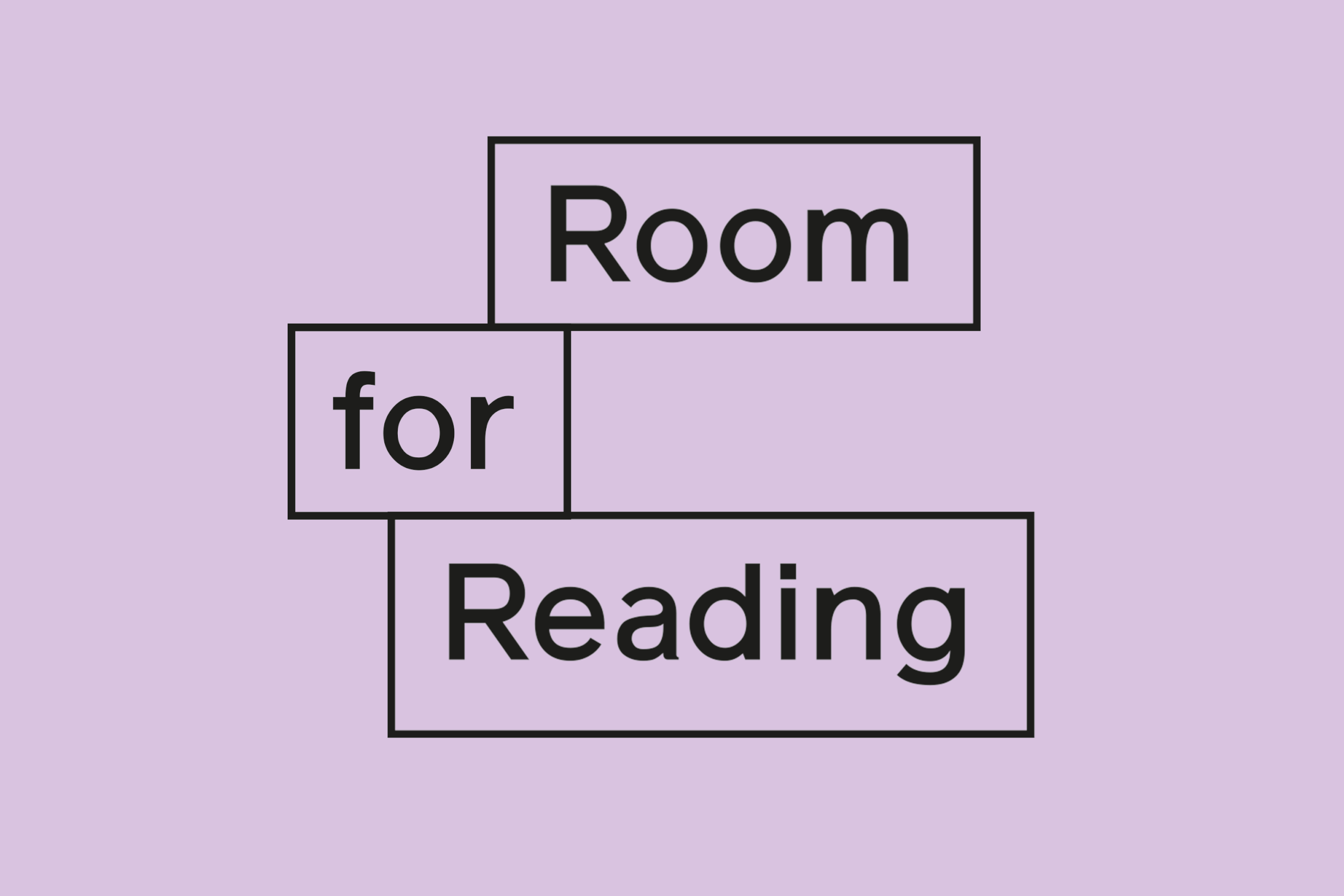
Room for Reading / Basel Abbas and Ruanne Abou-Rahme
Our Room for Reading at 5 Florence Street offers further reading on the current project, Basel Abbas and Ruanne Abou-Rahme’s ‘May amnesia never kiss us on the mouth’.
Selected by the artists and The Common Guild team, publications are available to browse during opening hours and where possible, made available online via the links below.
‘Out There’ edited by Russell Ferguson, Martha Gever, Trinh T. Minh-ha and Cornel West; Fred Moten, ‘In the Break’.
To accompany ‘May amnesia never kiss us on the mouth’ we have selected two publications that relate to and have influenced Basel Abbas and Ruanne Abou-Rahme’s project.
The first of these, ‘In the Break: The Aesthetics of the Black Radical Tradition’ (2003) by the academic and poet Fred Moten is the inaugural volume in an ambitious intellectual project to establish an aesthetic genealogy of the black radical tradition. It is a challenging and provocative investigation into performance and the connections between improvisatory jazz, radical black politics and identity which in turn addresses loss, trauma and mourning. For Moten, improvisation provides a unique epistemological standpoint and through jazz musicians including John Coltrane, Albert Ayler, Charles Mingus and others, Moten argues that all black performance—culture, politics, sexuality, identity, and blackness itself—is improvisation.
The compendium ‘Out There: Marginalization and Contemporary Culture’ edited by Russell Ferguson, Martha Gever, Trinh T. Minh-ha and Cornel West (1992) addresses the theme of cultural marginalisation - the process whereby various groups are excluded from access to and participation in the dominant culture. Thinking about culture and representation, all of the texts deal with questions of representation, encompassing not just the visual but also the social and psychological aspects of cultural identity. ‘Out there’ includes essays by bell hooks, Edward Said, Homi Bhabha, Gilles Deleuze and Felix Guattari, and brings together voices from many different marginalised groups - groups that are often isolated from each other as well as from the dominant culture.
Read Fred Moten, ‘In the break’ here.
Read three essays featured in ‘Out There’: Douglas Crimp, ‘Mourning and Militancy’ (1989); Audre Lorde, ‘Age, race, class, and sex : women redefining difference’ (1980); Toni Morrison, ‘The Site of Memory’ (1992).
Edward W. Said, ‘After the Last Sky: Palestinian Lives’ (1999)
Basel Abbas and Ruanne Abou-Rahme have selected 'After the Last Sky: Palestinian Lives' (1999) by Edward W. Said and their own publication, ‘And yet my mask is powerful’ (2016).
In 1983 photographer Jean Mohr was commissioned by the UN, on Edward Said’s recommendation, to take photos of some of the key sites in which Palestinians lived their lives. Because the UN allowed only minimal text to accompany the photographs, Said and Mohr decided to work together on an 'interplay', as Said put it, of Said's personal account of Palestinian suffering and exile, and Mohr's photographs.
‘After the Last Sky’ combines Said’s personal reflections—on exile, the plight of the Palestinians, how they have been represented by others, and how they struggle to represent themselves—with photographs Mohr took of Palestinians over the course of several decades.
'And Yet My Mask is Powerful' emerges from a 2016 exhibition of the same name held at Carroll / Fletcher in London. The project addresses the apocalyptic logic of perpetual crisis that characterises the contemporary moment. The artists visit destroyed villages in occupied Palestine, documenting groups of Palestinian youths wearing copies of Neolithic masks. These masks, some of the oldest in the world, were originally found in the West Bank and are now stored in private Israeli collections. They have been copied and 3D-printed by the artists from online exhibition photographs.
Read The New York Times’ review of After the Last Sky here.
Watch excerpts from Basel Abbas and Ruanne Abou-Rahme's project ‘And yet my mask is powerful’ here.
Details
In conjunction with our projects, exhibitions and events, Room for Reading offers artists we work with an opportunity to contribute to The Common Guild library and share the books and resources that have influenced their artistic practice.
Every artist’s selection is added to The Common Guild’s expansive reference library of artist books, catalogues, and cultural and critical theory.
Open –
9 September – 9 October 2022
Thursday – Sunday, 12–6pm
Free Entry
Location –
Related

Room for Reading / Corin Sworn
As part of Corin Sworn’s investigative performance series, ‘Moving in Relation’, the artist has selected two recent publications that have informed her ongoing research into human interrelationships with technology.
‘The Atlas of Anomalous AI’ edited by Ben Vickers and K Allado-McDowell and Louise Amoore, ‘Cloud Ethics: Algorithms and the Attributes of Ourselves and Others’.
Corin Sworn has selected Ignota Books’ ‘The Atlas of Anomalous AI’ (2020) edited by Ben Vickers and and K Allado-McDowell and Louise Amoore, ‘Cloud Ethics: Algorithms and the Attributes of Ourselves and Others’ (2020).
“These books situate the collection and interpretation of digital data amid a history of devices built to grapple with mapping futurity and the unknown. ‘The Atlas of Anomalous AI’ is a beautiful compendium of objects and plans for ordering and predicting, drawn from across world history and into the present day. The collection circles and displaces a Western power, seeking to determine what is and is not admissible in cosmologies of recognition and futurity.
Louise Amoore considers, from various angles, the inherent unknowability and experimental nature of algorithmic devices. ‘Cloud Ethics’ draws from theorists within the social sciences to flag how power deploys and trims this open-ended seeking to harness and determine its own orders of the possible. Here, ethics lies in how the credible is determined as we reach into the imaginary.”
Corin Sworn
Details
In conjunction with our projects, exhibitions and events, Room for Reading offers artists we work with an opportunity to contribute to The Common Guild library and share the books and resources that have influenced their artistic practice.
Every artist’s selection is added to The Common Guild’s expansive reference library of artist books, catalogues, and cultural and critical theory.
Related
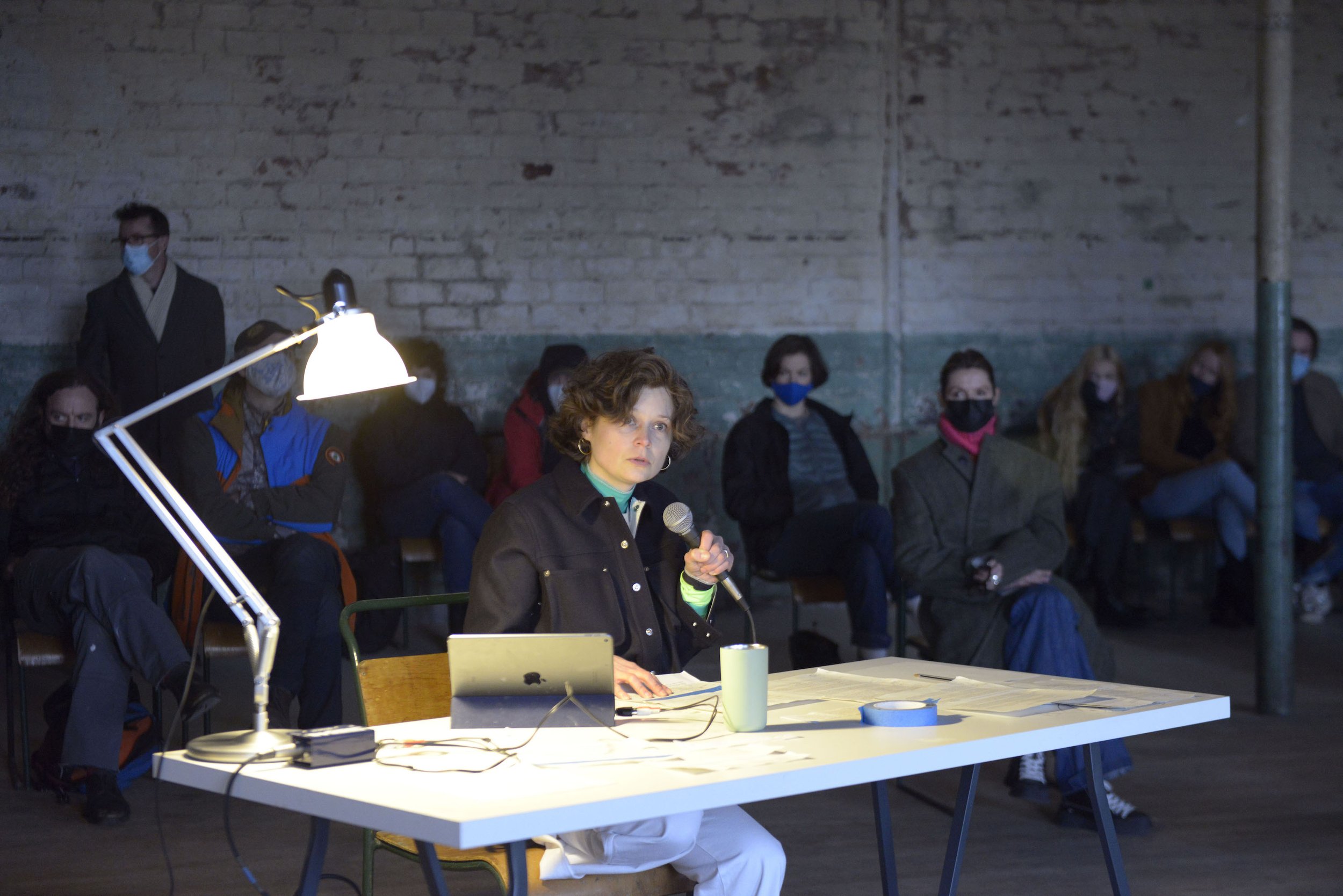
Moving in Relation 2. ‘This Harmonic Chamber’ – Corin Sworn, Jer Reid and Luke Fowler
Corin Sworn, 'This Harmonic Chamber' (performance still) (2022), from the series 'Moving in Relation' (2021-22). Courtesy of the artist. Photo: Alan Dimmick.
Corin Sworn, Jer Reid and Luke Fowler present ‘This Harmonic Chamber’ – an incomplete, future film taking shape as a live performance lecture, with experimental sound and moving image.
Set within a distinctive redbrick factory – a former loom shed built in the 19th century – the performance deliberately plays with the apparently immaterial qualities of sound to physically reverberate this dense material site.
Through a deconstruction of the formal tactics of the lecture, Sworn describes a history that disconnects empirical philosophy from contemporary physics, charting intrinsic relationships between knowledge, idiosyncrasy and sensory experience. In parallel, the sonic performance amplifies the physical experience of sound unfolding within the space through vibratory resonances and echoes, building a palpably rich atmosphere.
‘This Harmonic Chamber’ is entangled in dichotomies of the material and immaterial, and speculation and sensation. The performance lecture teases out experiences of wavering uncertainty felt both bodily and mentally.
Throughout the performance, the spoken text can be followed online on mobile devices by scanning a QR code available at the venue. Fragments of video which accompany the lecture can also be viewed here through the same link.
‘This Harmonic Chamber’ is the second in a series of events entitled ‘Moving in Relation’ through which Sworn continues to research human interrelationships with technology. Working with dancers, academics and non-human collaborators, Sworn is developing a discursive and experimental event series that explores algorithmic thought, datafication and their influence on physical bodies, while seeking to make obscure knowledge immanent and palpable.
The first event, ‘eco-co-location’ by Corin Sworn and nussatari was presented within a suburban business park in the Clyde Valley in November 2021.
Further Info
Access the spoken text performed as part of ‘This Harmonic Chamber’ here. Available for a limited time.
Project Details
‘This Harmonic Chamber’ took place at 105 French Street, G40 4JS. The performance lasted c.40 minutes.
Read
Access the spoken text performed as part of ‘This Harmonic Chamber’ here. Available for a limited time.
Credits
Performance:
Scores and Sound: Corin Sworn, Jer Reid, Luke Fowler
Sound Engineer: Richie Dempsey
Costume: La Fetiche, Kenneth Thompson
Production and Website: Grace Jackson
Video (Online):
Movement: Molly Danter
Dramaturge: Jer Reid
Camera: Ambroise Leclerc / Paradax Period
Related

Sharon Hayes – 'Ricerche'
Sharon Hayes, 'Ricerche: two' (2020) Film still, Pictured: Courtnei “Luckey” Townson.
Courtesy of the artist and Tanya Leighton, Berlin and Los Angeles.
American artist Sharon Hayes’ new project with The Common Guild is a suite of three films, shown together for the first time. It is the continuation of Hayes’ on-going ‘Ricerche’ project, including a new commission. ‘Ricerche’ (meaning ‘research’) is comprised of several video works that use the 1964 film ‘Comizi d’Amore’ (Love Meetings) by Italian director, Pier Paolo Pasolini, as a guidepost and framework for an examination of gender, sexuality and contemporary collective identifications.
‘Ricerche’ constitutes an inquiry into the relations between sex, sexuality, gender and politics in the United States today, with nonetheless striking resonance with contemporary discourse across societies elsewhere. It continues Hayes investigation of the act of public speech, and its intersections with history, politics, activism, queer theory, love and sexuality, through both the collective and the individual voice.
Filmed by Hayes at different times since 2013, including during 2020’s critical election year in the US, the works feature a range of individuals, from students at an all-women’s college in Massachusetts, to children of queer or gender non-conforming parents, and members of two women’s tackle football teams. Each film is presented as ‘ricerche’ or research. The most recent, ‘Ricerche: two’, was filmed in Dallas/Fort Worth, Texas, just before the onset of the pandemic. It was commissioned by The Common Guild. The extended interview asks the players what they like about the sport, whether they feel different on and off the field and how playing football relates to other aspects of their lives. This new work will be presented alongside the two existing works in the series; the single-channel video ‘Ricerche: three’ (2013), and a diptych, ‘Ricerche: one’ (2019).
Sharon Hayes, ‘Ricerche: two’ (2020). Installation view, The Common Guild at the former Adelphi Terrace Public School, Glasgow. Photo: Isobel Lutz-Smith.
‘Ricerche’ is presented in the former Adelphi Terrace Public School, south of the river Clyde, opposite Glasgow Green. Originally opened in 1894 following the Education (Scotland) Act of 1872, which made schooling free and compulsory for five to thirteen year olds, the building was used as a site of education for children and young adults until 2010. With thanks to our venue partner Urban Office.
Sharon Hayes (b. 1970, Baltimore, Maryland, USA) lives and works in Philadelphia, USA.
Hayes is one of the most influential politically and socially committed artists working in the United States. She has been the subject of retrospectives at the Whitney Museum of American Art, New York; Museo Nacional Centro de Arte Reina Sofía, Madrid; and Moderna Museet, Stockholm. Hayes’ work is part of the public collections of Tate, London; Museum of Modern Art, New York; Solomon R. Guggenheim Museum, New York; Whitney Museum of American Art, New York; Dallas Museum of Art; San Francisco Museum of Modern Art; Kunstmuseum St. Gallen; Museum of Modern Art Warsaw, Warsaw; among many others. Hayes’ 5-channel video installation 'In My Little Corner of the World, Anyone Would Love You’ (2016) was co-commissioned by The Common Guild and Studio Voltaire, London.
Sharon Hayes holds the position of Professor of Fine Arts at the University of Pennsylvania.
Further Info
With thanks to Tanya Leighton, Berlin and Los Angeles.
Documents
E-flux Announcement – Sharon Hayes: ‘Ricerche’
Sharon Hayes interviewed by Adam Benmaklouf, The Skinny, October 2021


